Lots of Strings and Other Things:
Early Soul Music
Soul music of the early 1950s urbanized country blues. Producers rounded off the rough edges of Mississippi Delta explosions and toned down the ferocity of Chicago enthusiasm while redirecting and compacting all that shaved energy into a lulling, harmonic structure—often accentuated by strings—while pushing the vocals far up front. Fast or slow, the best melodies left an impression far beyond their duration. The lyrics, phrased, delicate and deliberate, sang of the vulnerability inherent in the new sophistication. “When this old world starts getting me down/And people are just too much for me to bear,” from the Drifters beatific “Up on the Roof,” is the perfect embodiment of that sensibility. As we are drawn to the city as the host of civilization and as it is drawn to us, the pressures that accompany the pleasures of social interaction threaten to consume the consumers. During those extended moments, the city itself provides its own refuge, a place where refugees can stare off into eternity just long enough for the pressure to subside. Early soul music, more than anything that came before it, promised that we could have it all: the bustle and the calm, the excitement and the solitude, poverty and riches, pain and bliss.
Johnny Ace:
“Pledging My Love.” Duke. 1954.Pledging My Love
John Marshall Alexander is known almost exclusively for his Christmas Eve death while playing Russian roulette in 1954. That’s a tragedy as well because Johnny Ace, as he is known to the militant coterie of fans he continues to amass, was a first rate soul singer with just enough verve to push back the midnight blues that always lurked behind the edge of a quaver. Memphis-based Sun Records recorded two songs of Ace playing piano and singing way back in 1952, although something hadn’t clicked because Sun President Sam Phillips never got around to releasing them. Within two years the singer found himself on a tour sponsored by Duke Records to promote the recently-recorded “Pledging My Love.” During a five-minute break between sets, an explosion opened a sieve through which those midnight blues eternally pour.
The Drifters:
The Drifters:
"There Goes My Baby"
“Money Honey.”
“If You Cry True Love, True Love.”
“This Magic Moment.”
“Save the Last Dance for Me.”
“Some Kind of Wonderful.”
“Up On the Roof.”
“Another Night with the Boys.”
“On Broadway.”
“Under the Boardwalk.”
”Saturday Night at the Movies.”
“White Christmas.”
“Adorable.”
All available on All-Time Greatest Hits. Atlantic. 1987.
When the darkness compels across an unseen ocean whose roar and clap assures its presence, when the solitary sounds of a summer’s night are the clopping march of tall heels on gray sidewalks, when the muffled argot of enriched hormones emerge from art deco shadows, and when the pre-dawn sky’s baffling paradox grins and scowls sheets of oblivious tears—at such times the music of The Drifters is certain to be sneaking up from some crevice in the memory. So we spin the dial and rediscover “Money Honey,” a genuine contender for the honor of best song about the complications, frustrations, and fitful bleedings inherent in a prolonged cash flow problem. Moving the red line up the tuner’s face, “There Goes My Baby” greets us. Those disobedient strings added by producers Jerry Leiber and Mike Stoller take rhythm and blues into the Milky Way conflux of soul. “Moving on down the line,” sings Ben E. King, far from his normal range, and the Latin rhythm, with its classical undertones, integrates a perfect duality that only intensifies sorrow. Somewhere between AM and FM we link arms with “On Broadway,” another Leiber and Stoller production, this time with a young Phil Spector on guitar, Rudy Lewis singing lead, and that by-now familiar Latin beat. “Under the Boardwalk” steals the next dance, pitting Johnny Moore’s lead against the translucent Bert Berns production, one which enlists an orchestra’s worth of percussion in search of a summer evening filled with the natter of crickets. Finally, before the chill of dawn calls us home, we cut one last rug to “This Magic Moment.” Written by the masters of sublime, Doc Pomus and Mort Shuman, driven by baion bass galore encircling Ben E. King’s lead vocal, the swirl sanctifies a moment of anticipated ecstasy, a moment stretched across the clouds in our eyes.[i]
The Jewels. "Hearts of Stone"
“Money Honey.”
“If You Cry True Love, True Love.”
“This Magic Moment.”
“Save the Last Dance for Me.”
“Some Kind of Wonderful.”
“Up On the Roof.”
“Another Night with the Boys.”
“On Broadway.”
“Under the Boardwalk.”
”Saturday Night at the Movies.”
“White Christmas.”
“Adorable.”
All available on All-Time Greatest Hits. Atlantic. 1987.
When the darkness compels across an unseen ocean whose roar and clap assures its presence, when the solitary sounds of a summer’s night are the clopping march of tall heels on gray sidewalks, when the muffled argot of enriched hormones emerge from art deco shadows, and when the pre-dawn sky’s baffling paradox grins and scowls sheets of oblivious tears—at such times the music of The Drifters is certain to be sneaking up from some crevice in the memory. So we spin the dial and rediscover “Money Honey,” a genuine contender for the honor of best song about the complications, frustrations, and fitful bleedings inherent in a prolonged cash flow problem. Moving the red line up the tuner’s face, “There Goes My Baby” greets us. Those disobedient strings added by producers Jerry Leiber and Mike Stoller take rhythm and blues into the Milky Way conflux of soul. “Moving on down the line,” sings Ben E. King, far from his normal range, and the Latin rhythm, with its classical undertones, integrates a perfect duality that only intensifies sorrow. Somewhere between AM and FM we link arms with “On Broadway,” another Leiber and Stoller production, this time with a young Phil Spector on guitar, Rudy Lewis singing lead, and that by-now familiar Latin beat. “Under the Boardwalk” steals the next dance, pitting Johnny Moore’s lead against the translucent Bert Berns production, one which enlists an orchestra’s worth of percussion in search of a summer evening filled with the natter of crickets. Finally, before the chill of dawn calls us home, we cut one last rug to “This Magic Moment.” Written by the masters of sublime, Doc Pomus and Mort Shuman, driven by baion bass galore encircling Ben E. King’s lead vocal, the swirl sanctifies a moment of anticipated ecstasy, a moment stretched across the clouds in our eyes.[i]
The Jewels. "Hearts of Stone"
The five-member Jewels emerged from mixed backgrounds in Gospel-styled music and disc jockeying on R&B radio stations. Rudy Jackson, the final member to join The Jewels (so named because Rudy’s sister said they would metaphorically sparkle), wrote the raw jump blues, “Hearts of Stone,” the one song in their catalogue that intertwines the rhythms of R&B with the passionate crooning of country-based Gospel. Otis Williams and the Charms did the same song with a slightly more commercial (harder driving, softer delivery) arrangement, competition from which prevented The Jewels’ original from receiving its share of airplay. On the white national charts, the Fontaine Sisters did a cleaned up Wonder Bread rendition. Today it is easy to find copies of the inferior versions. But just try to lay hands on the best, the one by The Jewels. Singers Johnny Torrence, Dee Hawkins and Rudy Jackson sing with the purest hearts of anyone this side of John Fogerty, someone who, twenty years later, did his own version as well.
.
Little Willie John. Fever
“All Around the World.”
“Need Your Love So Bad.”
“Fever.”
“Look What You’ve Done to Me.”
“Until You Do.”
“Let Them Talk.”
“She Thinks I Still Care.”
“There is Someone in This World for Me.”
All available on The Early King Sessions. Ace. 2002.
.
Little Willie John. Fever
“All Around the World.”
“Need Your Love So Bad.”
“Fever.”
“Look What You’ve Done to Me.”
“Until You Do.”
“Let Them Talk.”
“She Thinks I Still Care.”
“There is Someone in This World for Me.”
All available on The Early King Sessions. Ace. 2002.
Little Willie John is one of the fifteen or so greatest soul singers of all time. And back in 1953 when he was discovered by Johnny Otis, no one even called the genre soul music. It was then still thought of as rhythm and blues. Otis took Willie John to Cincinnati’s Syd Nathan. Syd recorded a number of brilliant John songs. “Fever” is a matter-of-fact, outré casual declaration of the way one man’s symptoms of illness can be another’s proof of vitality. “Let Them Talk” posits a violently angelic acceptance of rumor mongering parasites gnawing at the backyard fence separating mice from meat. But the desolation was only beginning. How do we get through the longest and loneliest night of our lives, asks “Need Your Love So Bad,” especially when we know tomorrow night will be even longer, even lonelier?
Satisfying as George Jones’ country version of “She Thinks I Still Care” was, Little Willie John understood the song better. In John’s superior rendition, he pretends he’s moved beyond needing the woman who was not only the greatest happiness of his life, but the only happiness he will ever know. After all this, “There is Someone in This World for Me” is almost a relief, its mathematics stating that soft, sad and jumpy equals nervous exhaustion as the despair resonates through unlit foliage.
He died in prison of a homicide conviction. It is spooky thinking about that prison sentence. Even with the few string arrangements bedding the tender and fragile vocals, these songs creak with something more sinister than the average Friday night at the haunted house. All of these songs express a paralyzing need. They speak of love as absolution. And they suggest unpleasant consequences for denying that special request.
The Spaniels. “Goodnight Sweetheart Goodnight.” Goodnight Sweetheart Goodnight
Satisfying as George Jones’ country version of “She Thinks I Still Care” was, Little Willie John understood the song better. In John’s superior rendition, he pretends he’s moved beyond needing the woman who was not only the greatest happiness of his life, but the only happiness he will ever know. After all this, “There is Someone in This World for Me” is almost a relief, its mathematics stating that soft, sad and jumpy equals nervous exhaustion as the despair resonates through unlit foliage.
He died in prison of a homicide conviction. It is spooky thinking about that prison sentence. Even with the few string arrangements bedding the tender and fragile vocals, these songs creak with something more sinister than the average Friday night at the haunted house. All of these songs express a paralyzing need. They speak of love as absolution. And they suggest unpleasant consequences for denying that special request.
The Spaniels. “Goodnight Sweetheart Goodnight.” Goodnight Sweetheart Goodnight
Because of its unfortunate inclusion in the film Three Men and a Baby, contemporary audiences have come to hear this song as a lullaby. George Lucas pieced it into American Graffiti, where it rightfully belongs. Lucas’ teenage American city might not be Gary, Indiana, from whence The Spaniels and Vee Jay Records hailed, but Lucas captured the ambiance just right and flavored the night with the ultimate frustrated goodnight kiss. In reality, it is an act of restrained emotion as the lead singer comes to terms with the fact that the date is over while he is just getting started. “Now my mother and my father might hear if I stay here too long/One kiss and we’ll part and you’d be going/Although I hate to see you go.” So ends The Spaniels’ only major doo-wop soul hit. But familiarity with the untimely interruption between kissing goodnight and staying the night remains painfully eternal. Lead singer James “Pookie” Hudson wrote the song, he claimed, based on his own unfortunate experiences. In the context of the rest of their work, this brilliant meshing of Gospel harmony and earthly anticipation encircles the evening like a nimbus. Had The Spaniels not passed on a chance to record an original version of “The Twist,” their name might represent more than a mere footnote in most histories. In The Playlist, they score points for just such a decision.
LaVern Baker. “Tweedle Dee.” Atlantic. 1954. Tweedle Dee
LaVern Baker. “Tweedle Dee.” Atlantic. 1954. Tweedle Dee
Spurred on by the Bessie Smith songs she heard as a teenager, LaVern Baker became a great R&B singer who had good reason to be bitter about her own finest songs. Her work with Columbia Records was unsuccessful, so she signed with independent label King and still went nowhere fast. Finally, in 1953 she signed with Atlantic where she had hits with “Tweedle Dee,” “Bop-Ting-a-Ling” and the less lyrically profound “Play It Fair.” But “Tweedle Dee,” which should have signaled the beginning of her career, actually began its demise. Georgia Gibbs of Mercury Records did a cover version of that song at the same time. It sounded almost identical to Baker’s (which is not surprising, since Mercury used the same musicians and arranger on their song that Atlantic had used), and went to Number Two on the pop charts. Baker’s original stalled at Number Fourteen. LaVern later estimated that Gibbs’ version cost her $15,000 in lost royalties.
The Moonglows. “Sincerely.” Chess. 1955. Sincerely
Harvey Fuqua, Bobby Lester, Alexander Graves and Bill Johnson were collectively among the most moving vocal groups of the Fifties. “Sincerely,” “The Ten Commandments of Love” and “Blue Velvet” are lush, soul-pumping diamonds. “Sincerely,” their biggest hit, constructed a musical bridge between the cool smooth Mills Brothers and the grittier texture of rock ‘n’ roll. Lead singer Fuqua went on to an impressive career as a house writer and producer at Motown, an appropriate move since a very young Marvin Gaye joined The Moonglows right after “Sincerely” hit the charts.
The Skyliners. “Since I Don’t Have You.” Calico. 1959. Since I don't have you
A white R&B quintet was a rarity in the late 1950s. The exception that validates the notion was lead singer Jimmy Beaumont and backers Janet Vogel, Joe Verscharen, Walter Lester and John Taylor. This ethereal ballad was their only major hit, although they did follow up with “This I Swear” and “Pennies From Heaven.” But “Since I Don’t Have You” holds its place as their testament to the ages. Beginning with a drum snap rhythm and violins from an outer space concerto, the backing singers all start at different places and converge just as Beaumont begins: “I don’t have plans and schemes/I don’t have hopes and dreams.” Then, spinning his voice from upper to lower registers like a descending aircraft, recovering at the last possible instant, he admits, “I don’t have anything/Since I don’t have you.”
[i] It must be understood that The Drifters is a name. This cold fact is essential in following the course of the music made by people umbrella’d by that moniker. Former Domino Clyde McPhatter recorded a solo version of “Money Honey” that Atlantic Records auteur Jerry Wexler produced. Wexler was dissatisfied with the results, however, and sought a richer sound. So McPhatter returned with cohorts Billy Pinkney and Andy and Gerhardt Thrasher. Hoping to evoke the calm mood of wood tossing up on the shore, for the purposes of that recording they called themselves The Drifters. The year was 1953. Their re-recording of “Money Honey” did not drift. Instead, it soared to Number One on the R&B charts.
It was this McPhatter version of The Drifters that sculpted a few more R&B classics over the next year and a half, the best of which, “White Christmas,” out-glorifies Bing Crosby himself. However, the military arm of Uncle Sam called up Clyde’s number and without his leadership the group slouched into a commercial lump. George Treadwell (who owned the rights to the group name) fired the singers after they exchanged unpleasantries with a honcho at the Apollo Theatre. Treadwell replaced them with The Crowns, the group that soon became the new Drifters. This equally outstanding line-up featured Ben E. King and three backing singers. Producers/writers/arrangers Jerry Leiber and Mike Stoller added strings to the new group’s Gospel harmony sound and invented soul music. Of course, this new sound was being invented elsewhere, most notably by a young former Gospel singer named Faye Adams.
Up and coming Brill Building writers delivered brilliant street smart masterpieces conveying the teenage and post-teenage experience. Splendid production and passionate songwriting notwithstanding, substantial credit for the new group’s success goes to its lead singer. That’s Ben you hear on “There Goes My Baby,” one of the two or three “first” soul songs, as well as “Save the Last Dance for Me” and “This Magic Moment.” But by May 1960, King was out, enraged over his salary of $75 a week. His replacement, Johnny Williams, only sang lead on one Drifters’ hit, “If You Cry True Love, True Love.” Treadwell, who knew a good singer when he heard one (as well as how to piss one off) recruited vocalist Rudy Lewis to take over the top spot. Lewis brought brilliance to “Some Kind of Wonderful,” “Another Night with the Boys,” “Up on the Roof” and “On Broadway.” When Lewis died in 1964, Treadwell had to eat some pride and called upon early Drifter Johnny Moore. Johnny had sung lead on pre-King hits “Ruby Baby” and “Drip Drop,” both later covered to better effect by Dion DiMucci. But Moore earned his pay with “Adorable.” Once Treadwell elevated the singer’s status, Moore kicked out with “Under the Boardwalk” and “Saturday Night at the Movies.” But by that time the British Invasion had hit the American shores and it was time for the groups The Drifters helped inspire to carry the bouncing ball.
Solo By Myself: Male Soul Singers
Atlantic Records thrived on an attitude of experimentation within a framework of self-discipline. Founding brothers Ahmet and Neshui Ertegun willed into existence the first independent label whose very lifeblood surged for the sole purpose of fertilizing an environment in which the best of all music would flourish. The Erteguns and financier Herb Abramson launched their enterprise in 1947. As studious jazz hounds, the brothers recognized that great music required more than a great band and a great singer. The people behind the microphone contributed just as much—and often more—than the more visible artists whose names appeared on the finished products. So Ahmet was moderately delighted to have the singers Ruth Brown, Joe Turner and “Stick” McGhee on his roster. He was outstandingly delighted to have producer Jerry Wexler, engineer Tom Dowd, and arranger Jesse Stone. Alone and together, these three men, along with Ahmet’s quirky knack for recognizing marketable songs (and a business savvy second to no one’s), polished and grooved out a Latin dance-based, saxophone-driven sound that influenced the next decade-and –a-half of R&B and soul artists. Through sheer will and drive these impresarios created some of the most endearing and moving music of all time.
While the Erteguns were signing their first acts, McMinnville ,Tennessee
Dot was instrumental, as it were, in fomenting a trend that took the meat from a lot of music originating on its own label. In the early 1950s, three main types of radio programming existed: pop (which meant strictly white songs for white listeners), country music (still marketed for whites, but considered less refined than the pop stations), and rhythm and blues (aimed squarely at the black market, at least until disc jockey Alan Freed aimed it at everybody). Recognizing the profit potential in the pop market, Wood began recording cover versions of R&B acts using squeaky-clean nonentities such as Pat Boone and Billy Vaughn. So, for instance, Imperial Records would record Fats Domino’s version of “Ain’t That a Shame,” which played heavily on the R&B station, and Dot would redo the song for Pat Boone and release it as “Isn’t That a Shame.” But the best artistic decisions don’t always (if ever) happen in the boardroom. The label’s Nashville
Cover songs were nothing new to Hugo Peritti and Luigi Creatore, two record producers who entered the business making stars out of people such as Mercury Records’ Georgia Gibbs, the queen of covers. Hugo and Luigi, as they remain known, used their earnings to produce easy-listening hits for Perry Como. But their supreme contribution to soul music came from their work with a young Sam Cooke, fresh from his Gospel days with the Soul Stirrers. The producers yearned to stay with a formula they understood: slick slop for goyem. But Cooke’s magic emerged in spite of their efforts to soften his edges. The result was a no-compromise combination for RCA that remains among the most passionate soul works ever waxed.
Thanks to the pioneering work of these labels and producers, the foundation existed for the likes of Bobby Bland, Solomon Burke, Ray Charles and others to scale down the often ornate and lush arrangements while adding grit and husk to their own sound, thereby shifting the sound of R&B into a far more dance-oriented music that still retained the earliest jubilee effects of Gospel.
Before Ray Charles became a narcissistic, jingoistic pander to the worst aspects of the national character (and not coincidentally a recipient of Pepsi’s largesse), he earned his living as a big deal blues hound whose sped-up salties, deeply incandescent vocals and innovative piano figures made his disquieting physical jerks and spins acceptable to whites. He was, deservedly, the best-selling black performer of the pre-Motown1960s. Live!, which gives great moments from 1958 and 1959 (just when his career was crossing over and taking off), offers the playful, the serene, the caustic and bullying, the upbeat and the borderline psychotic. With two great versions of "The Right Time," the gloriously agonized "Drown in my Own Tears" and the show-stopping interplay between Charles and the Rayettes on "Wha'd I Say" the others stand out effortlessly and with grandeur. Music theorists may emphasize tension and release; Ray Charles the practitioner elicited a tension so pleasurable, the release was unnecessary.
To be smooth and to shimmy-grind at the same time, and to do both well is a rare thing. But “Blue” has been doing both extremely well since the late 1950s. He hasn’t had much pop success, but he sure do sound good, especially on "I Pity the Fool," "Turn on Your Love Light" and "Farther on up the Road." The drums and trumpets on the latter song, for example, create an incredibly seductive tension between one another. Ta-daw tuh-da-taw tee-dah! scream the horns. The drummer takes his cue and rattles off the percussive opposites just as Bland sneaks in with the words “Somebody’s gonna hurt you like you hurt me,” as smooth and angry a moan as ever was recorded. The key to his artistic success is his ongoing ability to let the listener hear bitterness, tragedy and occasional rage behind the audial mask of total self-control.
Everyone from Elvis Presley and Van Morrison to Chrissie Hynde has played homage to Wilson , an appropriate state of affairs given the strength of the man’s work (at least the work captured on this album) and the horrible, lingering debilitation that spent nearly ten years in causing Wilson
Tony Joe White, whose only other claim to recognition was in singing his own “Polk Salad Annie,” wrote this perfect mood piece for Brook Benton, whose only other claim to recognition was in writing “A Lover’s Question” for Clyde McPhatter.
All released on RCA.
What we have here is a young man who had not only been raised singing in the church; he had become the star of the show with his intensity of spirit in the outstanding Gospel group, The Soul Stirrers. By secularizing (some said betraying) that talent, Sam Cooke moved into the ionosphere with the transcendent “You Send Me.” Never all that far from the showbiz brigands, he continued to record standards such as “Summertime” (done as well as could be, except for Billy Stewart’s superior version), and the topical, though questionable tribute to the Cha Cha. His passion, phrasing, range and specific sound influenced Rod Stewart, Graham Parker, Van Morrison and John Lennon, among others. “Bring It On Hone to Me” is his best song, particularly due to the call and response “yeahs” he does with Lou Rawls.
"Anna (Go to Him)." Dot. 1962.
"Soldiers of Love." Dot. 1962.
Most Beatles fans are aware that the Fab Four covered Alexander’s remarkably fine “Anna.” Fewer may know that they also recorded (but while still a legally recording entity did not release)his other soul single, “Soldiers of Love,” a fact made significant because of the way they point up the R&B roots of The Beatles early recordings. In the original versions by Arthur Alexander, both songs croak with a portliness, yet moan with frailty the way few others could, a feat made all the more remarkable considering that he recorded these for a label best known for its soulless cover versions. Johnny Rivers, among lesser talents, learned country-soul phrasing here. “June,” as friends called Arthur, was the first artist to record at Rick Hall’s Fame Studios in Muscle Shoals, Alabama
Anyone holding Barry White in esteem as a good singer will turn stiff as a rocket and passionate as a puma after hearing just the first few seconds of this song. Burke was, however, as shameless as Barry White.
Burke’s considerable girth was used neither as humor nor as salacious entrée. It simply provided his voice with a powerful resonance. He didn’t sing words; he sang syllables: “Ev er ee bod dee (bu-bum bu-bum) needs sum bod dee.” He didn’t pander. He convinced us we were every bit as lonely and desperate as he claimed to be. Without saying it, the attitude of his voice declared that he had been to the mountaintop, that he had looked over at all his yearning throngs of children, and that they had cried out, begging for the answer. “You people want to know if it’s gonna be alright? Reverend Solomon is here to tell you people it’s gonna be all-right.”
As a member of one incarnation of The Drifters, King sang lead on what many people consider to be the first soul song, “There Goes My Baby.” He achieved even hotter success on his own with priceless times like "I Who Have Nothing," "Don't Play That Song" (also well done by Aretha Franklin), "Spanish Harlem" (ditto), and the beatific "Stand By Me." The latter song, with its cricket punctuation and open road at midnight ambience, brings up from a deepness beyond the singer’s testicles a bargain on a parallel with the kind we might make with God when we are so desperate that nothing else can protect us. In the first verse, King surrenders with something beyond humility to powers greater than himself (be it the force of friendship, the draw of romance, or deal-making with a Deity). Then in the final verse, he makes it clear that the gate to this relationship swings both ways. “If the sky that we look upon should crumble and fall/Or the mountains should tumble to the sea/I won’t be afraid/No I won’t shed a tear/Not as long. . . ” He comes back in the chorus with the clincher: “Whenever you’re in trouble you can stand by me!” Trouble or not, who could refuse such an offer?
All released on Hi Records.
The Reverend Al Green is a modern anomaly: an R&B wonder who made it big in the secular world, took his earnings and went back to the church. Like a soaring and raspy-voiced Sam Cooke, Green seduced in every vocal and musical nuance, bleeding proudly in “Tired of Being Alone,” pleading loudly in “Let’s Stay Together,” and even outdoing the Temptations with his version of “I Can’t Get Next to You,” as secularly celebratory a song as ever hit the charts. His other hits rely a bit more on the singer than the song, but one could substitute the Lord for the Girl and the tunes would still be revelatory. In “Let’s Stay Together,” Green sings of his commitment to a woman with the same emotional tenor many Christians use to describe the sensation of being saved. “Call Me” even has the studio equivalent of an Amen Choir humming in full support, devotedly waiting for their time to respond to the Reverend’s call. If anyone ever learned his trade from the angels, it was this man.
Chapter Three
Girls Can Do What the Boys Do: Female Soul Singers Go It Alone
With sweat beading up from the roots to the tips of their hair, their eyes focused on a single spot beyond the recording studio, tight neck muscles cascading along their throats, and with nothing to lose except their will to live, these women dragged Gospel music licking and screaming into the secular world. From lives rife with hard times in Newark, Memphis, Tidewater, Chicago and other blurs in between, where the church provided the only legitimate solace, to the smoky jazz rooms where even the best Charlie Parker sound-alike couldn’t compete with the laughter of drunks at the bar, the earliest and best female soul singers awakened within themselves the original pain that their spirituality had so successfully anesthetized. It was scandalous, it was temptation personified, and the best of it was very, very good.
There may be more than one reason why this song isn’t supposed to be here. For one thing, it’s early. For another, a lot of knowledgeable folks have argued that it isn’t rock ‘n’ roll. It is, however, beyond any doubt, either Gospel, R&B, pop, or a strong candidate for the first soul song. The Gospel claim is the most tenuous. Adams packed rawness beneath her pristine delivery, a serrated edge that gleamed as it froze listeners to their own thoughts. The R&B tag is nearly as hard to justify because, while the rhythms are right, the production mutes the punch and dulls the impact, letting the singer’s pitch suggest its own beat. Such an approach allows the listener to connect with Adams more directly. Unfortunately for the singer’s financial considerations, her sultriness and the phrasing that elevated it from the music’s mediocrity conveyed a decided blackness that queered the song with pop radio. And while “Shake a Hand” clearly does hold fragments of each of these genres, it is the way Adams shrugs off her flirtations with timidity that edges the song over into the soul domain, a world that did not properly exist until this song defined it.
"Mama He treats Your Daughter Mean." Atlantic. 1956.
Blues on Broadway. Fantasy. 1989.
Blanche Calloway, sister of Cab, introduced Ruth Brown to Herb Abramson and Ahmet Ertegun. Hot off the success of Stick McGhee’s “Drinkin’ Wine Spoo-Dee-O-Dee,” the Atlantic Records team was eager to record Brown. Like jazz vocal stylist Dinah Washington before her, Ruth Brown started singing when she was old enough to vocalize, first in churches and later in nightclubs. Encouraged by a job offer with Lucky Millinder’s band, an abrupt firing by that temperamental bandleader left the singer to the tender mercies of Blanche, who brought her to Atlantic .
At this time rock ‘n’ roll was largely unknown and rhythm and blues was music considered by the white establishment to be for blacks only, not unlike certain restrooms and drinking fountains. But Abramson and Ertegun did not intend for things to remain that way.
Ahmet Ertegun had contacted Herb Abramson back in 1947, suggesting that a good way to stay out of the army and avoid work would be to form their own independent record company. Atlantic ’s first hit, as mentioned, was “Drinkin’ Wine.” While the two executives sat around wondering what would happen next, Blanche came in the door with Ruth Brown. Since the two executives were jazz fanatics, they gave her a great pick up band. Her first recording, “So Long,” featured Eddie Condon and Sid Catlett. The song itself wasn’t a risk, though it did contain elements of both blues and pop. “Mama He Treats Your Daughter Mean” was a much better recording—perky, possessed and driven. Brown doesn’t display a great vocal range but she sure makes the most of what she has. “Mama,” she sings, and her voice tightens just the way a frustrated nineteen-year-old’s would in that situation. “He treats your daughter mean”: drums and piano pound together in a perfect twelve bar blues at twice the normal pace. “He’s the meeeeeeeeeeeeeeeeee-nest man I’ve ever seen!” The top of the vocal is so shrill it’s tempting to check windows for cracks, but the bottom growls out a sense of security, of confidence—it’s the part of her voice she inherited from her maternal parent.
The Broadway recording, from late in her career, is occasionally campy but mostly bops and swings. By the time she reaches the song about not being able to break dance, it’s obvious that such theatrics are unnecessary for someone who’s grinded with such vocal gusto for so long.
LaVern Baker possessed so much sex appeal, she could simply look with small interest at a man and the night would be over before it began. Musically, she tended more toward the sing-songy novelty numbers of which “Jim Dandy” remains among the more memorable. Nevertheless, she could not quite shake that ability to stir up the loins of her audience. Even as she squeaks about Jim Dandy swimming the seas, rescuing mermaid queens, and essentially showing himself to be Superman’s better, an indefinable husk envelops her pitch and—however breathless she should be after reciting the litany of feats—she doesn’t even need to inhale to start all over again. Now that’s intimidating.
It’s a dark room. A bored crowd buzzes listless and tired. Without fanfare a golden ring of light slaps the face of the curtain—it hardly interrupts the crawl of half-words and coughs nattering throughout the room. From offstage the singer glides across the platform to that golden ring, snaps her fingers once, softly, and the insect sounds fussing through the audience are crushed by the tender swat of the horn puffing behind her. She stares through the darkness beneath weighty eyelashes. The smoky saxophone and barely audible rattling percussion taps out her cue and she moves down into the crowd, just like the featured entertainer in a John Ford western. The audience is at sudden attention, but they remain unconvinced—until she sings. Port Arthur
This hard-breathing Philadelphia
This song’s popularity came from singer Ellis’ clever ability to put any listener’s name in a song and make it rhyme with the banana-nana-bo fee fi fo lyrical gyrations. So even if your name was Kzlytcietz, Ellis could whip you up into a frenzy of nonsense syllables sure to delight anyone self-assured enough to create their own brand of hip. Anyone stuck in a car for three hours listening to their kids finagle this song across the back seat will be forgiven for changing stations.
Fantastically smooth R&B songstress from Detroit
Koko’s version of the Willie Dixon song is a good contender for one of the most dangerous recordings ever sung by a woman. The cast of characters she invites to the bash suggests it might be a good idea to pack protection: Automatic Slim, Razor-Totin’ Jim, Butcher Knife Cuttin’ Annie, Fast Talkin’ Fannie—and that’s just in the first verse! What does Taylor Taylor
Chicago native Acklin was an R&B singer as far back as 1964, and she even recorded some fine duets with Gene “Duke of Earl” Chandler. Her biggest accomplishment, however, was as the singer of “Love Makes a Woman,” which she co-wrote with Chi-Lites lead singer Eugene Record. Here she sounds like exactly what she way: a background singer who expended herself on this one opportunity to shine.
[i] Barbara Lewis, a soothing yet invigorating singer, was one of Atlantic Records least valued yet unfathomably amazing talents. So was producer (and sometimes composer) Bert Berns, who had enough sense to make “Make Me Your Baby” everything it could be. But that was nothing new to Berns. He produced “Under the Boardwalk” for The Drifters, “Brown Eyed Girl” for Van Morrison and “Everybody Needs Somebody to Love” for Solomon Burke. If that is not enough pop and soul credibility, he also wrote “Twist and Shout” for the Isley Brothers and composed and produced “Here Comes the Night” for Them, a band featuring a young Van Morrison. Of course, one listen to Lewis’ “Make Me Your Baby” and the falsity of the title is apparent. No one who sounds this alive would ever have to plead. But she does. She pleads with only the scarcest of restraint. She wants to give herself over and be remade in the process. The bass line contrapunctual pattern against her vocal confuses the issue, because it adds a richness that—once again—makes the argument that she needs anyone seem absurd.
Chapter Four
Rama Linga Wop Bop and Doo-Wop
Doo-wop is street corner harmony. Friends from church, the neighborhood or school would gather on a mutually convenient city street corner and sing. The groups usually had four or ideally five guys, comprised of two tenors, one guy who could swing from a baritone to a bass, and, if they were lucky, someone who could fake a strong falsetto. Add some snapping fingers, clapping hands and slapping thighs, stir in the melodrama of Gospel arrangements with the secular focus of young love, and you had the sound of 15,000 young blacks and Italians on a march for local stardom. The term “doo-wop” itself comes from the prominent background rhythms the majority voiced to push to soloist’s singing into the forefront. “Rama Lama Ding Dong,” “Bomp She Bop,” “Oop She Boop,” “Bom Bama Bom” and other glorious nonsense syllables propelled a small percentage of these young folks into the status of potential hit-makers. Once the record companies began gobbling these kids up on their way into the studio, some minimal soul-inspired instrumentation was added for balance, but tinkling pianos, softly groaning saxophones, and meandering guitars always blurred behind the sharp focus of these, the greatest of all doo-wop songs.
“Life could be a dream/Sweetheart/Sh-boom/Hello again/Sh-boom/If I could carry you/To the paradise up above. . . .” If there were ever another song so innocent that it came in for the public bashing this one suffered, you can bet it’d be every bit as good. Television commentators decried the song’s artlessness, hack musicians ridiculed its lack of sense, imaginative idiots claimed its subject matter was the end of the world (the title replicating, one presumes, the ultimate explosion), and white groups copied it (poorly), having their own hit versions while this Bronx sextet struggled just to get by. Fifty years later, no one much remembers the commentators, the hacks have gone to hack hell, and no one except the totally obsessed knows the names of the copycats. But The Chords will live forever for concocting this rollicking frenzy that was indeed deliriously guilty of being everything its detractors claimed—except possibly the apocalyptic soundtrack. Still, if the world has to end. . . .
My first thought when I saw this album was “They called it Best of because they couldn’t very well called it Greatest Hit.” In fact, I always thought of this Long Island doo-wop group as a poor man’s Dion and the Belmonts, simply because, as far as I knew, they never followed up their sole chart success, an ignorance on my part, to be sure, but one due to a lack of exposure outside the R&B charts. Then I played the album. "Little Star" was as transcendent as ever. Indeed, when singers Vito Picone and Artie Venosa wrote and recorded this inverted Mozart lullaby, they created a song as ominous as it was innocent and serene. Everything else here has that same great studio-on-a-street-corner texture, Italian lovesick hoodlums trying to save themselves by wooing the right young lady into the distractions of love and romance.
Tin Pan Alley meets doo-wop ala Fremont High School
Clarence “Frogman” Henry. "Ain't Got No Home." Argo. 1956.
“But I Do” was a bigger hit,” but “Ain’t Got No Home” was a better and certainly stranger song, what with the Frogman’s declaration that he not only sings like a girl (true), but that he also sings like a frog (right again). Despite the use of this song by the reactionary Rush Limbaugh and in nearly every movie that purports to be about the 1950s (the royalties from which having kept Henry alive), “Ain’t Got No Home” retains its power with thrilling Professor Longhair-style New Orleans piano and, of course, the Frogman’s unique vocal croakings.
The Cadets. "Stranded in the Jungle." Modern. 1956.
The Cadets were an inspired gang of lunatics whose moment in the sun was this 1950s side wherein the singer ends up in a pot about to be cooked into a festive dish by the local witch doctor. What’s most distinctive about “Stranded” is the fact that it’s actually two songs chopped up and mixed together. In the first song, our unnamed hero is surrounded by juju music appropriate to the cannibal feast of which he is the main course. The second song interrupts at every potential denouement with unabashed revelry, and just as that party reaches crescendo, we slam back into that boiling pot with about as much transition as scalding water. In addition to being one of the earliest cases of producer “sampling,” the Cadets’ version is also notable for inspiring a distinctly different version (though the arrangement was identical) by a group called The Jayhawks. That group’s version bombed, but The Jayhawks mutated into The Marathons and later The Olympics, under both names releasing some raucous novelty tunes. Meanwhile, back in the States…
Del-Vikings. "Come Go with Me." Dot. 1957.
One of the many things wrong with the world is the way real teamwork has gone out of fashion. I’m talking about the kind of teamwork where each person involved recognizes his own contribution as well as the contributions of every other person on the team—to the point where everyone involved understands the beauty of their interdependency. You used to find this kind of thing in professional sports, occasionally in the workplace, and even in popular music. I’m talking about the level of performance of any type where each person involved internalizes the mechanical and organizational concepts so tightly that he thinks of himself as a member of that particular team. It would be nice if the duration of these situations was longer—better, that is, for the rest of us. In the case of The Del-Vikings, the military, producers and record executives got in the way and the group that made this recording was only together for a few months.
You could say this was a collection of writers/producers Jerry Leiber and Mike Stoller’s best moments and you wouldn’t be far off. Certainly the beginnings of pop situation comedy are here. It would be wise, however, to remember Lee Allen’s saxophone, since that’s the road map everyone on this trip was following. And even though "Charlie Brown" has not aged all that well, "Shopping for Clothes" still has lines that are as pertinent in these hip hop days as forty-plus years ago: “Stand over there, look in the mirror and dig yourself” is pertinent indeed. "Yakety-Yak's" understated belligerence, "Young Blood"'s fear of Father, and "Down in Mexico's" infinite party appeal all make these contemporary and never quaint. “That is Rock and Roll” ranks with The Showmen’s “It Will Stand” as an ultimate testament to the form. And “Riot in Cell Block #9,” actually recorded by The Robins, which were only half of what would become The Coasters, has such an ominous feel, it’s no wonder its refrain (“There’s a riot goin’ on) went on to become the title of Sly and the Family Stone’s greatest album.[i]
The Capris. "There's a Moon Out Tonight." Planet. 1958.
The original line-up of The Capris were from Ozone Park , New York Old Town
The Danleers. "One Summer Night." Mercury. 1958.
Jimmy Weston led his friends through a blissful doo-wop bop that either takes you back to 1958 and the Summer of Your Life, or forward into a reality only understood in dreams. “One Summer Night” doesn’t require experience. It simply asks that we listen softly and taste the air it breathes with enthusiasm.
The Silhouettes. "Get a Job." Ember. 1958.
The Gospel group The Golden Tornados mutated into a hard-driving pop vocal band when they found out the power of “yipyip yipyip yip” and “shad da da da da.” Get a Job” was their hit, an early example of social protest.
Huey “Piano” Smith and the Clowns. "Don't You Just Know It." Ace. 1958.
Of all the nonsense lyrics to gabba-garble their way up the charts in the 1950s, “Don’t You Just Know It” takes the honor of being the wildest. Backed by a band of professional transvestite musicians, Smith’s New Orleans
The Students. "I'm So Young." Note. 1958.
Not much is known of this 1958 doo-wop group except that the leader’s name was Prez Tyus and that they were from Steubenville ,Ohio
The Impalas. "Sorry (I Ran All the Way Home)." Cub. 1959.
While not everything on Rhino Records’ Doo-Wop Box is actually doo-wop, there is so much good on their 101-song treasury that a person might come to believe that the only genuine way to bribe one’s way into heaven is with that package. The great bird groups are there (Ravens, Crows, Willows, Orioles, Flamingos, Penguins, Wrens, and if Spaniels are bird dogs, they’re here too), as are the car groups (El Dorados, Cadillacs, Capris, Edsels, and of course the Inpalas). Tony Carlucci, Lenny Renda and Richard Wagner teamed with Joe Frazier on this great 1959 genuine doo-wop moment, one of those all too rare records that threatens to explode at any second and then is over, begging to be played again.
Marcels. "Blue Moon." Colpix. 1961.
Named after their lead singer’s hairstyle, Pittsburgh’s own Marcels took a good show tune from the 1930s and added bahm ba-ba bahm and dang da dang dong to “Blue Moon,” lined it with doo-wop harmony and sped it up considerably, making this the most commercially successful doo-wop song of all time. Give or take the tune’s escalating and descending melody, it is Cornelius Harp’s frustrated effort to communicate in the nonsense language only understood by teenagers and rock critics that keeps people coming back.
Randy and the Rainbows. "Denise." Rust. 1963.
At a time when it seemed like every female mentioned in a hit record was named Mary, Sue, or Donna, the verisimilitude of “Denise” in a pop song truly hit hoe, or at least next door. And while no one in this group had the chops of Dion and/or The Belmonts, this neo-doo-wop quintet blended some two-four drumming (the only discernible instrument) with raving “Scooby-doo” fill-in nonsense lyrics, all of which pushed singer Dominick Safuto’s desperate falsetto to the forefront. If any of them could have rhymed “Dawn-esse” with anything, this tune would perhaps have the clout of its cousins.
The “5” Royales.
“Tell Me You Care.”
All released on King Records.
“Dedicated to the One I Love” bounds from an exploding nova with the infinitely wise jump blues authority of lead singer Johnny Tanner. Group commandant Lowman Pauling co-wrote the song and his back alley Chicago
One of the best and most sophisticated, i.e., modern sounding, R&B groups of all time, Lowman Pauling, Charlie Ferguson, Obediah Carter, and Johnny and Eugene Tanner burned down the farm repeatedly between the mid-1940s and the 1960s. “Dedicated to the One I Love” has never been done better and neither has their version of “Think.” “Baby, Don’t Do It” and “Slummer the Slum” tore up the race charts but failed to go pop, which was everyone’s loss.
It should be noted that the song “Dedicated” suffers in cover versions by The Shirelles and Mamas and Papas, both of whom robbed the essential power of Johnny Tanner’s dramatic lead introduction. When Tanner begins with “This is dedicated—to the one I love!” he jumps out with the sonic equivalent of a slap to the face. Together, these songs will take you out of the church and into the heart of a black Cincinnati
Devotions. "Rip Van Winkle." 1964.
Still a working unit as of 2003, the Devotions are a vocal harmony group from Queens and the Bronx . Their covers of songs by more prominent doo-wop groups of the early 1960s gave no clue that they would ever release this, one of the wildest takes on the Washington Irving story ever imagined. Possessed helium giggles, bowling alley sound effects, crazed falsetto singing, and a bumpy midnight ride after a twenty-year snooze: it helps if you’ve never heard of the title character.
Chapter Five
Rock ‘n’ roll would exist even if Alan Freed had gone into plumbing instead of radio broadcasting. Rock ‘n’ roll would not, however, reflect as genuine a sense of America
Out of the Army and hungry for the future, Freed used his Master’s Degree in engineering to earn a job in radio as a Youngstown , Ohio Cleveland America New York City picked up on the R&B hysteria when WINS hired him away from Cleveland
But power needs a pariah. Blacks were serving that function nicely and along came this “Jew Boy” to complicate things. He was an agitator—an outside agitator, one of the first. So they had to stop him.
The pop music power structure went after him for the widely accepted practice of taking bribes for playing certain records, a practice nowadays institutionalized. That same power structure destroyed Freed wile exonerating DJs and TV personalities who stuck to an all-white format. Soon he couldn’t get a job selling shoes. Alcohol began drinking out of him and at the age of forty-two, he was dead.
Somebody else might have played race records to the Patty Duke look-alikes of early Fifties America (the kind that Dick Clark Productions pretends existed with the excretable TV show “American Dreams”). Somebody else might have had the good taste to play the best and laugh at the worst. But who besides Freed would have had the audacity to request a copyright for the term “rock ‘n’ roll”? Who else would have had the faith in himself to dance all over racism and double the occupancy of rock houses, blowing with the band on his own trombone? Unfortunately for Alan Freed, he had the bad luck of being a genuine threat. The power structure that benefited from the segregation of the races viewed musical integration as the preamble to miscegenation, a state of affairs no campaign shouting southern diplomat could tolerate. Fortunately for us, that fact is what made Freed a great American. The songs that follow, many of which would never have been heard on pop radio were it not for Alan, are the best of the early days of rock ‘n’ roll.
Jerry Lee Lewis rocked harder, if not necessarily better, than any 1950s pop star, including Elvis Presley. He never achieved Presley’s level of celebrity, an intentional industry snubbing, in large part due to his blatant and entirely conscious meshing of Southern Gospel energy with sexual rhythms and especially his welding of Christian imagery onto a wholly pagan philosophy committed to dangerous fun. (It’s amusing that the late 1950s are considered by some to have been such an innocent time. Who even today would have the audacity to transmogrify one of the holiest all of fundamentalist images into such gloriously blasphemous adulation of sexuality? Unless of course “Great Balls of Fire” was just an off the cuff expression, a ridiculous nation in light of the now-famous conversation between Jerry Lee and Sam Phillips that immediately preceded the recording.) "Whole Lotta Shakin' Goin' On" (essentially an expanded and pumped up version of Champion Jack Dupree’s "Shake Baby Shake," which itself existed in other forms before Dupree himself stole it), "Great Balls of Fire," "Breathless" and "High School Confidential" were his only rock singles to gain massive exposure, yet nearly everything he recorded between 1956 and 1970 is worth hearing repeatedly. These four songs and the other “lesser” wonders bring the gutter path Lewis typically crawled in directly to the altar. Hard core Louisiana
As is well known, the other major reason The Killer never achieved Elvis Presley’s level of mass adulation is because word got out that he had married his third cousin and had apparently forgotten to divorce his former wife. This transgression did not affect Lewis’ sales on the country charts, a fact that says a lot about the so-called enlightened rock audience, the so-called barbaric C&W fans, and it even says something about the nature of human beings unable to separate the art from the artist. [i]
Emerging after Elvis Presley cut his first tracks for Sun Records and at the same time that the doo-wop and bird groups were laying down impenetrably rich harmonies, Chuck Berry married teenage parlance to a musical attitude he first envisioned and then created, making him the premier innovator in rock ‘n’ roll.
Chuck was in his thirties when he started drooling on record about sweet sixteen-year-olds, a fact that worked against him when defending himself against charges of immoral conduct. Social acceptability notwithstanding, the truth remains that most of what we call rock would be unimaginable without the Berry
All on Gee Records; all released in 1956.
Thirteen-year-old Frankie overcame the inbred limitations of mediocre songs and something less than stellar arrangements for his flying tenor like a bird navigating on nothing but thrill and instinct. Such freedom of will and youth shouldn’t suggest any semblance of innocence. By the time “Why Do Fools Fall in Love” was released, Lymon was already established as a well-to-do Harlem pimp, knowledge of which makes the follow-up, “I’m Not a Juvenile Delinquent,” moderately hilarious. The group’s third single, “I Promise to Remember,” didn’t quite make it halfway up the Hot 100, a fact no doubt attributable to limited airplay, itself a condition likely related to programmer aversion to images of someone or something named Hooly bopping a cow. For their final round of glory, the boys went back to school to explore the rapture in “The ABCs of Love,” the most titillating recitation the English alphabet has yet received.
With the money from these hits, Lymon took up heroin. One result of this addiction was a voice change. The other was a loss of sparkle. In any case, by age twenty-five, he had died of an overdose.
"Ain't That a Shame." 1955.
"Blue Monday."1956.
"I'm Walkin'." 1957.
"Whole Lotta Lovin'." 1958.
All of these were on Imperial Records.
With loose-fitting production from Dave Bartholomew, Creole pianist and smiling crooner Fats Domino marveled at himself as he rollicked through these singles. More than sixty Top Forty hits between 1955 and 1964 would drain anyone’s creativity, and a lot of Fats’ material did share a similarity of melody and delivery. But these, among his earliest releases, defy such conventional (if accurate) wisdom, by oscillating overlapping trills with languorous blues numbers.
The very fact of this song’s release is further proof that not all important decisions occur in executive board rooms. Patterning this instrumental classic after The Dells’ “The Stroll,” master guitarist Link Wray sent an acetate to Archie Bleyer of Cadence Records. Bleyer didn’t like the song one bit and offered to throw it out a window and kill an innocent passerby just for the fun of it. Bleyer’s teenage daughter took one listen and screamed, “Wait! Daddy, that’s a hit record!” Since it reminded the Bleyer family of a quickie soundtrack to a musical gang fight, Archie named the song “Rumble.” Everyone from George Harrison to Eddie Van Halen heard a sound that affected their future music.
The only release prior to the mid-1970s to combine some of the best of Elvis’ work with Sam Phillips along with his early recordings for RCA. This album, of course, is a total factory job, meaning the artist had nothing to do with its assembly. But so what? If General Motors was still assembling things this well, they’d have a harder time justifying employee lay-offs.
Wilbert Harrison. Kansas City
If I were leading a four-piece band whose cover songs worked because their simplicity accentuated their enthusiasm, at least half the songs on this album would end up on our band’s play list. And proudly so. “Kansas City
Richard Penniman is one of those fathers of rock ‘n’ roll (like Jerry Lee Lewis and Chuck Berry) who justified the early charges that “the Negro sound and the Negro feel” of what had suddenly become a new music was sex to a sweaty beat. In "Lucille," he asked why his honey didn’t do her sister’s will. In "Good Golly Miss Molly," he charged that the object of his affections sure like to ball. In "Tutti Fruiti," he uttered a sound that came as close as any to replicating the power of orgasm: a wop bop a lu bop a wop bam boom! In "Rip It Up," he bragged about being a fool who never even tries to save any money. In "Slippin' and Slidin'," he came on like a teenage peeping tom. Meanwhile, this pompadour-sporting black man pounded his piano deeper and deeper and Lee Allen’s sax bleated and groaned. Listening to the commotion either made you want to dance or romance and sometimes that was the same thing.
Of course, Penniman couldn’t maintain that energy forever, so he became a preacher and claimed he’d been a homosexual. For a while he stopped playing rock ‘n’ roll, but thankfully he came back, though not as well as before. After a few decades on the oldies circuit, he acted in the film Pickle. This does not prove (or even demonstrate) that rock is a young person’s game. It does suggest that the best of it often comes charging out of the gate so fast that no one can keep up such a manic pace forever. And that’s exactly why this album is so essential.
Carl Perkins. Original Sun Greatest Hits. Rhino. 1986.
Elvis Presley was a hillbilly. Carl Perkins was a hick. All hicks are hillbillies, but the opposite is not always true. A hick is a hillbilly who gently rubs your nose in the obvious fact that his true culture is proudly different from ours and—sad to say—chances are we wouldn’t fit in. That’s why in "Honey Don't," when Carl sings “You got that sand all over your feet,” we wonder about the source of the sand. If we were true hicks ourselves, we would understand that the important thing is that it got there, not where it came from. Perkins was such a hick that when he wrote the lyrics to one of his more popular songs, he scribbled them on an empty potato bag and spelled the middle word S-W-A-E-D. In America Lawrence
Clearly, the very arrogance of the man’s overt hickness should have permanently endeared him to the in-group mentality of 1950s youth. Denied that visual medium, Carl had to bow to Presley. Still, Sam Phillips did release seven singles bearing the Perkins name. Although none of the others charted as significantly as "Blue Suede Shoes," some people were listening. I only wish The Beatles would have covered "Dixie Fried." The song stomps all over hell about a bar that stays open all night and features guys swinging razors and women high on dark beer. If John Lennon had sung this, The Beatles would have been banned everywhere and people would have thought the Rolling Stones were sissies.
The Isley Brothers. "Shout." RCA. 1959.
Ronnie Isley and family were one of the wildest early rock ‘n’ roll groups ever to record. “Shout” sounds fairly mild compared to other’s versions of the song, but it took the Isleys to imagine the crazed call and response intensity of the groove. And who but the Isley Brothers would have thought to break the whole thing apart by commanding, “Now way ay ate uh minute! Hold it!” followed by some of the kinkiest dance demands ever on disc?
Gary “U.S. U.S.
"Seven Day Week-End." Legrand.
“Buy U.S. Bonds” proclaimed the fliers. And for nearly three years the public obeyed. Knowledgeable people disagree about whether Gary Bonds was a major talent, but the way his producer, Frank Guida, multi-tracked the singer’s vocals and flooded the mix with interplanetary instrumental whoops and grunts, the music was indisputably major—major fun! Post-pubescent party time on the path to perpetual twenty-dom, even exploitive bubble busters such as “Twist, Twist Senora” (which was never close to being a hit, greatest or otherwise) possess a certain good-natured charm. Bonds did not menace. He cajoled. While the album contains many essential selections ("New Orleans," "Quarter to Three," “School is Out, School is In,” and “Take Me Back to New Orleans,” among others), it lacks “Seven Day Week-End,” a song that had not been recorded at the time of the LP’s release. Happily it does contain the finest southern-style party record of the 1950s, just a few notches above Chuck Berry’s “Johnny B. Goode,” with which “New Orleans
Chuck Willis. I Remember Chuck Willis. Atlantic. 1963.
Chuck Willis was yet another underutilized talent that it took the genius of the Atlantic Records organization to fully develop. From his first hit for the label, "It's Too Late," to his last, “Keep a-Drivin’,” Willis forged his sound with upbeat ballads that blended country music with soul. In fact, it was his attitude that was the real rock ‘n’ roll here. And during his Atlantic recording career (1956-1958), it was not macho demonstrative burliness that connected. It was the courage to exalt in his own frailties. Of course, it helped that his voice had the protein of sirloin.
Bo Diddley. Beach Party. Checker. 1963.
His shave and a haircut beat, rough guitar licks, deranged vocals and by turns lecherous and hilarious lyrics bubble out against a self-generated thump which collectively grind out the stuff of teenage legends.
Diddley’s real name was either Ellas Bates, Ellis McDaniel, Ellas McDaniel, or possibly Elias McDaniel. He was born in Mississippi to a family of sharecroppers who moved stakes to Chicago South Carolina
It may interest some to know that according to other album titles, Bo was a lover, a twister, a lumberjack, a gunslinger and a surfer. Here he was on fire.
Chapter Six
Gospel
Gospel music is different from Contemporary Christian music. The former cares nothing for anything remotely contemporary. Gospel’s intent is not to convert anyone. It strives (and generates its enormous power through its ability) to unite those already committed. The music is imagistic. The singers relate through the decidedly New Testament use of parables. And the star of each group is Jesus Christ rather than, say, Sam Cooke, Elvis Presley, Curtis Mayfield, or Roger McGuinn. The singers make it clear through the constricted mania of their performance that they are merely a river through which a Greater One’s message flows. Perhaps the greatest distinction between Gospel and Contemporary Christian music is that the latter could never have evolved into soul.
I should add that no one is going to consider all of these selections to be real Gospel music. I'm going more here for tone and feeling than literal sensation. Call it symbolic, if that makes it easier.
Sweetheart of the Rodeo explores and comforts our own darkest recesses through spirituality. The relatively meager sales this recording garnered following its initial release were thought to be due to its country flavor. Nonsense. Both country and rock audiences avoided this album because its texture, rhythms and pacing echoed the essence of a harmonious relationship between God and man. Gospel enthusiasms wander purposefully throughout each song. At one end of this harmony, the version of William Bell’s soul classic "You Don't Miss Your Water" is stripped of any scent of humanism so effectively that soul music’s girth increases just by the first inhalation after the song closes. At the other end, Woody Guthrie’s "Pretty Boy Floyd" becomes a hymn without being reworked at all.
Mahalia Jackson. The Best of Mahalia Jackson. Kenwood.
Elvis Presley. His Hand in Mine. RCA. 1961.
How Great Thou Art. RCA. 1967.
He Touched Me. RCA. 1972.
The Supreme Angels. Supreme. Nashboro. 1972.
Sister Rosetta Tharpe. The Best of Sister Rosetta Tharpe. Savoy
The Ward Singers. The Best of the Famous Ward Singers of Philadelphia , Pennsylvania Savoy
This is the group that put both Curtis Mayfield and Jerry Butler on the map. Butler
It is moderately amusing that this theme from the motion picture Billy Jack was by a band that never again sounded anything like this and certainly never again sounded this good. “One Tin Soldier” is all about innocence and discovering the spiritual value of existence in the face of imminent destruction. Coven, lead by singer Jinx Dawson, was more at home playing heavy metal odes to Lucifer. This was a real life bunch of Satanists (although they called themselves wicken) whose first album was called Witchcraft Destroys Minds and Saves Souls, which offered up such tasty morsels as “White Witch of Rose Hall,” “For Unlawful Carnal Knowledge,” “Pact with Lucifer,” and a thirteen minute opus called “Satanic Mass.” None of them liked the Billy Jack song at all. But at a time when a lot of hippie-dippy peace&love music sounded cynical, “One Tin Soldier” struck true. In between verses that tell a rather quaint yet ironic story about an all too common slaughter of innocents, Dawson
The very early 1970s were the peak time of Jesus Rock, an aberration which in retrospect did The Kid very little justice. The Broadway production of Jesus Christ Superstar, the Godspell soundtrack, Norman Greenbaum’s single "Spirit in the Sky," and (even though it was much more Krishna-conscious than Jesus-inspired) George Harrison’s "My Sweet Lord": all these and others happily unrecalled were intended to either introduce concepts such as free love into Christianity or to disenfranchise the more radical elements of pop culture. In other words, there was not a lot of sincerity going around and there certainly was not a preponderance of great music. “Put Your Hand in the Hand” may not be great, but its Beatles-inflected drum pattern and Melanie-sound-alike vocal was at least inoffensive. Besides, the lyric about the time Jesus cleared the temple—and why—was a strong assault on all levels of cynicism.
Back in 1971, almost any white group with religious pretensions could capitalize on the already highly commercialized Jesus Movement. Sweathog was no exception, except that they played with more conviction than any of the other so-called converts, a fact in no way diminished by the knowledge that Sweathog aspired toward being the ultimate loud-ass party band. The group’s complete lack of cosmic ambitions and their jubilant, infectious enthusiasm makes this song a lot less self-righteous and a bit more humane than others whose aims were presumed to be more honorable. “Hallelujah” also rocked to the sky and back.
Sam Cooke. Sam Cooke and the Soul Stirrers. Specialty. 1991.
Sam Cooke influenced more second and third generation rockers than any other singer—period. Otis Redding, Arthur Conley, Rod Stewart, John Lennon and Graham Parker are only a few of his most ardent supporters and insightful disciples. With the Soul Stirrers, Cooke was the most moving male Gospel singer ever recorded and more penetrating because he was still a teenager. The thrill of those eager young girls in the audience shifting and bouncing in their seats as he sang "Were You There When They Crucified the Lord?" was more than the singer could bear and so he hooked up with RCA’s Hugo and Luigi, a pair of white A&R guys who doubtlessly cared about him but who frequently exercised bad judgment in material selection. Cooke himself was often the best judge of what would have lasting appeal. And while it is a good idea to stay away from anything he sang with the words “Cha Cha” in the title, his Gospel work on Specialty was among his most effective work. None of this is dispelled by the fact that while in a hotel with some cute young thing he was shot dead by the proprietor who claimed the singer went nuts while wearing nothing but a towel.
Chapter Seven
One Plane Down, One Plane Arriving: Between Buddy and the Beatles
Within a span of eighteen horrible months, Buddy Holly, J. P. Richardson (the Big Bopper) and Ritchie Valens died in a plane crash, Chuck Berry was locked away, Jerry Lee Lewis found himself banished from the rock ‘n’ roll airwaves, and Elvis Presley had gone off to serve his country in Germany. The strongest presences in rock were out of commission. Retrospectively, a lot of otherwise intelligent writers claimed that pop music suffered the worst of all artistic declines between 1959and 1964, the latter year being when the Beatles cam over from England
So what was really going on in the years when misguided media-ists claim rock was dead? Doo-wop came back stronger than ever, Sid Nathan’s Cincinnati-based King Records brought out the first great James Brown hits, early Sun Records acts such as Carl Perkins, Johnny Cash, Charlie Rich and Roy Orbison pressed massive smashes, strong yet sensitive songwriters Felice and Boudleaux Bryant put glorious tunes in the mouths of the Everly Brothers, Motown shot out its first pop hits, Phil Spector’s Philles label crafted “little symphonies for kids,” girl groups came out of heaven (except the Shangri-Las, who came from darker quarters), New Orleans artists influenced by Professor Longhair and Meade Lux Meaux blended barrelhouse with boogie, and thousands of one-hit miracle acts made their mark and faded—all this at a time when rock ‘n’ roll presumably flat lined. Th irony of such an assertion is not merely the preponderance of evidence to the contrary. These massive “exceptions” to the Rock Died Theory were the very songs and styles that inspired a then-struggling Liverpool combo that would one day become The Beatles.
Elvis Presley. Elvis’ Golden Records, Volume 3. RCA. 1963.
Harlan Ellison is perhaps best known for his short stories, essays, and screenplays. But in the early 1960s he wrote a novel called Spider Kiss, a tale about a young rural singer and guitarist who transformed into Stag Preston. While the novel makes no attempt to mirror Elvis Presley’s career (and Ellison has even stated that the main character comes closer to Jerry Lee Lewis), the writer lets the reader feel the complexities in Stag and in the other characters who converge to make and destroy the performer. Those details and the storyline itself make that novel one of the very few excellent literary treatments of the rock ‘n’ roll experience. This album, Elvis’ Golden Records, Volume 3, reveals many of those same personal nuances. As the third of five Best Ofs RCA released in Elvis’ lifetime, this volume charms with its magnitude of sophistication. While "It's Now or Never" presages the big band gloss of Las Vegas Hollywood
Duane Eddy. "Rebel Rouser." Jamie. 1958.
This competent guitarist used to record inside an empty water tank to give his songs that famous twang. “Rebel Rouser,” his first major hit, deserved to be as big as it was because hearing it—especially late at night—could provoke chills. Eddy moved to Hollywood
Everly Brothers. The Everly Brothers’ Best. Cadence. 1959.
By today’s standards, the songs of Phil and Don Everly were brief. Not one of the songs on this album runs longer than 2:45. And that fact is a core facet of their success. Boudleaux and Felice Bryant, who wrote most of these treasures, constructed them exactly that way: short, sweet and simple, which, in the proper hands, becomes endless, rich and multi-dimensional. Accompanied by little more than guitar, bass and shuffling drums, the Everly Brothers sang with a country sensibility, meaning that concepts such as staying out too late, devotion and dejection were expressed as an understood, nearly a priori, state of the normal human condition. Losing love was about far more than the loss of the object of desire. It was a loss of a piece of the loser himself. It is, ultimately, narcissism, a fact proved by the one Bryant hit that’s missing here, “Love Hurts.”"Love Hurts." None of that may matter, since in keeping with those country sensibilities, these songs retain their remarkable power in getting others to sing along. The next time you find yourself doing so, you may want to consider whether it is the loss or the losing of which the Everly Brothers sing.
Bobby Darin. "Dream Lover." Atco. 1959.
It is funny how when many people think of Bobby Darin they think of "Mack the Knife," one of the most overrated songs of all time, a charge supported by the fact that I’ll bet half the people who claim to love that song can’t recall any other line than “Well th shark bites with his teeth, dear.” “Dream Lover” was Darin’s real classic and yet it was because he stuck with such low tempo tunes that his career throughout the 1960s never quite lived up to the success he had with this gem.
Lloyd Price. "Stagger Lee." ABC-Paramount. 1959.
“The night was claire/And the moon was yellow/And the leaves came tumbling down.” So begins Lloyd Price’s version of the tale of Stagger Lee and Billy, two gamblers who have been the subjects of demonic folklore from as far back as 1896. Anyone nervous about violence in black music today could trace one supreme source right back to Price’s rendition. The incongruity between the arrangement (baritone saxophone and jumpy, merry New Orleans Magnolia Street
Chan Romero. "Hippy Hippy Shake." Del Fi. 1959.
Chan Romero, the best of the post-Ritchie Valens Chicano rockers, owes his legend to this crazed chant dance hit. The song climbs through an undefined series of minor build-ups with Romero waiting at the top to dive off with his head shaking like a charged up Pentecostal in a room full of rattlesnakes. Back when there were five Beatles, “Hippy Hippy Shake” rocked the walls at The Cavern Club. Brought to England from America by adventurous ship captains, most Liverpool groups (or at least Mersey groups) covered this song. One could lay this tune down alongside the Beatles’ first album and instantly recognize the influence.
Maurice Williams and the Zodiacs. "Stay." Herald. 1960.
"May I?" Deesu. 1962.
Two pleas for what the singer wants, pleas from a man whose desperation is only matched by the trembling excitement in the voice (and other regions, one suspects) of Maurice Williams. “Come-on come-on come-on Stay! Whoop la-dee-dah!” and the girl is convinced.
Billy Bland. "Let the Little Girl Dance." Old Town
It is hard to say which is better: the wide-open vocals that sound so much like Jackie Wilson or the intricate and clever guitar work of Mickey Baker. The only thing that might be even better would be to get a glimpse of the “little girl” Bland is so obsessed with freeing from the cordoned off sections of the dance floor.
The Halos. "Nag." 7 Arts. 1961.
Arthur Crier led this Bronx foursome through the ideal song for couples in the throes of antagonism. Against a backdrop of harmonic commentary and gruesome female sound effects, Crier compares how nice things were in the beginning and how rotten they are now. “When I met you, you were oh so sweet/Now you give me the bread and take all the meat.” This is just a couple notches above Ernie K-Doe on the anti-domestic bliss meter, although, as Joan Jett proved in her own version of “Nag,” even disharmony can be a great occasion for a party if you have a song this fine to accompany it.
Curtis Lee. "Pretty Little Angel Eyes." LeDunes. 1961.
Lee was a Yuma , Arizona
Rosie and the Originals. "Angel Eyes." Highland
Recording in a barn on the outskirts of San Diego
Rick Nelson. Rick is 21. Imperial. 1961.
Most people—even most recording stars—don’t get to celebrate their twenty-first birthdays with an album. Rick Nelson managed an exception no doubt because he was by this point in his career trying desperately to shed the schoolboy image cultivated on his parents’ TV show, “The Adventures of Ozzie and Harriet.” Problem solved. While his voice had never cracked and popped like that of many adolescents, by his twenty-first year he effortlessly slipped into a rich (but never crooning) baritone that belied the occasional teeny bopping tunes that paid the bills. For twelve highly commercial pop songs, these bespeak a man on the verge of crossing over either as a young Frank Sinatra or a wizened (and living) Buddy Holly. His tragedy is that the fans never kept up with his attempted evolution, a fact that explains the impetus of his later recording, "Garden Party."
Barbara George. "I Know." AFO. 1961.
The New Orleans-style piano intro sounds over-rehearsed and the drummer surely hadn’t been playing his instrument for more than a few days. But right smack in the middle, Melvin Lastie smoothes over the rough edges with a lilting cornet solo, accentuating the middle-aged wisdom of the nineteen-year-old who sang “I Know” as if she actually did. He record company (All For One) was a co-op intended to help the musicians get paid what they were worth. It’s too bad no one there motivated George to recapture this song’s nervous certainty on any follow-up singles. Then again, if she really did receive her due, those royalty checks would still be coming in.
Bruce Channel. "Hey! Baby." Smash. 1962.
From Delbert McClinton’s country-beatnik harmonica stroll to the two-step shuffle rhythms and right on through an attempt at stifling a charming Texas
Dion. Runaround Sue. Laurie. 1962.
Dion DiMucci may not hold a position beside the Kings and Queens of rock ‘n’ roll, but he sure does belong in the court. With the Belmonts
Dion. Lovers Who Wander. Laurie. 1962.
Dion wrote or co-wrote five of these twelve songs, four of which appeared as singles over the span of 1962. "Lovers Who Wander," “Little Diane,” “Sandy” and most especially “Born to Cry” were all twice as soulful and infinitely more pained and expressive than his macho hits, clearly deserving to be played in every home in America
The Volumes. "I Love You." Chex. 1962.
That crazed DEE-troit groove and not a chair in sight. While a trashier sounding song never hit the charts, singers Teenie Davis and Eddie Union collide their very souls against the railing the backing singers devised, filling the sky with whipsaw boomerangs in the hardest fought competition for the role of lead singer ever recorded.
The Rivingtons. "Papa-Oom-Mow-Mow." Liberty
"The Bird's the Word." Liberty
Al Frazier, Carl White, Turner Wilson and John Harris were originally The Sharps (that’s them on Duane Eddy’s “Rebel Rouser,” for instance). While you’re still strying to place the name, change your mind and remember them as history would have it. “Funniest sound I ever heard/And I can’t understand a single word” begins the crazy classic “Papa-Oom-Mow-Mow.” Both these songs were combined and swiped by the Trashmen and re-done as “Surfin’ Bird.” While the Trashmen were deranged and indecipherable (their ultimate glory), The Rivingtons finessed their way through divine insanity.
Little Eva. "The Loco-Motion" & "Keep Your Hands Off My Baby." Dimension. 1962.
Carole King and Gerry Goffin’s children’s babysitter had a way with a Goffin/King song, as anyone who has ever heard one of these can attest. I maintain that the opening drone of “Loco-Motion” qualifies as the first heavy metal song, years before anyone ever thought about calling a band Led Zeppelin. That opening drone was really just a signifying hook to introduce one of the all-time catchiest dance tunes: you just put your hands on the hips of the person in front of you, wiggle your ass and make a train. “There’s never been a dance that’s so easy to do/It’ll even make you happy when you’re feeling blue.” Truer words were never spoken.
Eva Narcissus Boyd auditioned for a singing role with The Cookies, a backing group used by producer Don Kirshner. Carole and Gerry were looking for a singing babysitter. Eva passed the audition when the two songwriters caught Eva doing a strange engineer conductor-type dance around the house. They wrote a song about it and even asked the young girl to sing on the demo. Kirshner liked it so much he decided that Dee Dee Sharp, for whom the song had been written, could chomp the big one and released Boyd’s version. King and Goffin followed this success with another. “Keep Your Hands Off My Baby” was twice as soulful and every bit as good as its predecessor. Although Goffin and King continued to write good songs for their houseguest ("Where Do I Go," "Old Smokey Locomotion," “What I Gotta Do” and the masochistic “Please Hurt Me”), her second best phase of material actually came from her duets with Big Dee Irwin, the prime example of which was a cover of the standard "Swinging on a Star."
By 1988, Eva was working as a cook in a soul-food restaurant in North Carolina
Don Gardner and Dee Dee Ford. "I Need Your Loving." Fire. 1962.
Don Gardner’s yearning moans introducing and punctuating this duo’s only hit sound like the ultimate in anticipated ecstasy. Dee Dee Ford’s singing supplies the perfect justification for such desire. The song is really nothing much more than Gardner
The Four Seasons. Anthology. Rhino. 1988.
Bob Crewe produced and wrote for this Frankie Valli-led quartet and you can feel the ambition he brought to tracks such as “Sherry” (their first hit) and to “Working My Way Back to You” (not their last, but their last great one). Beginning their career in 1956 as The Four Lovers, these guys worked together through the mid-1970s and, until the Beatles came along to America Italian street Crewe and he with them. The harmonies are always crisp, the drums accentuate but never dominate, and the songwriting is never shallow.
Chris Kenner. “Land of 1,000 Dances” and "I Like It Like that." Instant. 1963.
One of the first singles I ever owned was Chris Kenner’s “I Like it Like That, Parts 1 and 2,” on the tiny Instant label. Side one is the song you hear nowadays on some beer commercial geared toward people who grooved when they were kids. Side two was the second part and in its own way was a completely different song. Allen Toussaint’s piano is far more prominent and the lead vocal is missing, pushing the background singers up around your ears, which may make the B-side one of the first dub versions of a popular song. Although “Land of 1,000 Dances” sold more copies, it remains one of those songs that continues to inspire. Wilson Pickett, Cannibal and the Headhunters, the J. Geils Band and Patti Smith have all recorded splendid versions of Kenner
The Kingsmen. "Louie, Louie." Wand. 1963.
In those rare situations where I find myself in a nightclub surrounded by adventurous young folk and music from the 21st century, I typically slip the DJ a couple bucks to play something I like, if for no other reason than to convert or irritate—it doesn’t matter which. If he can find it, “Louie, Louie” is invariably the song I request. If that DJ played almost anything else from 1963, the outré hip tastes of the throngs would spark apathetic rebellion: people would yawn and no one would dance. But slip “Louie” in amidst the drivel and even the most committed Anthrax freak stops fantasizing about new tattoos long enough to jam out. Why? Probably because it’s a garbled lyric delivered in a deranged manner accompanied by a rhythm section that sounds like a bazooka with a stuttering case of permanent flatulence. The guitar solo captivates so well that even the singer loses his place and comes in for the final verse to early (“me see Jamaica moon,” he begins, then catches himself—there is no “take two”). [iii]
Roy Orbison. All-Time Greatest Hits. Monument. 1972.
Like any number of strange white southern teenagers in the mid-1950s, Roy Orbison got his professional start at Sun Records. Sam Phillips produced some enjoyable tracks for the youngster: “Rock House,” "Ooby Dooby," “Domino” and “Devil Doll” were the best. But when Orbison’s career failed to go the way of the big time, Roy
Orbison permitted no pause in the psychological pugilistics. In "Blue Bayou," his spurning of the weight of pain is a simultaneous prayer to the gods of inevitability. Having once known, or more likely, having once imagined, a time when he could perceive his lover’s tenderness and bask in the warmth of friendship, Roy is on both knees begging the future to let him back in. Before a decision is rendered, “In Dreams,” intentionally or not, leads one to consider not only the pleasure the singer experiences having the love of his life perfectly situated for every occasion, but also to wonder whether this might constitute servitude for the object of his desire.
No such quandary pervades the final big hit, "Oh, Pretty Woman," a song filled with stairstep bass and marching snare which together out-value the stylistic degenerations of either Mr. Gere’s or Ms. Roberts’ semi-theatrics in the horrid movie that borrowed two-thirds of this song’s title. Once Orbison’s operatic growl enters the picture, the only image worth retaining is that of one’s own temporarily idealized wonder approaching with determination.
The beauty of the songs in this collection lies in the perfect interplay of bass and drums, and even more so in the decidedly peculiar attitude Orbison touts. He struggles to control the situation in nearly every scenario he relates and yet laughs at himself or at anyone foolish enough to take him up on his offer of eternal love. That must be why the idea of Roy Orbison’s death continues to shatter. A rock ‘n’ roller on the surface, vulnerable just beneath, and below it all strong enough to stare hard realities in the eye, at least until you actually say all that, and then the layers realign themselves. If it is true that the thicker the armor the more fragile the man wearing it, then it must require some deeper strength to carry all that armor. With the lights out, the world pushed away, and just the glow of neon stars flashing through the windows, the truth of the singer’s voice takes hold. The tension is electric. Breath is held. Sparks
Del Shannon. "Runaway." Big Top. 1961.
"Keep Searchin'." Amy. 1964.
"Stranger in Town." Amy. 1965.
“I drink the poison and I feel the pain” (rather than the more socially accepted and correct “tears are falling and I feel the pain”) was for years the way I heard the bridge line in Shannon’s “Runaway,” and while I have since discovered my error, I still prefer my interpretation. My version confirmsShannon as rock’s ultimate paranoiac. In each of these songs (and in most of his nonhits, as well) ol’ Del
“I drink the poison and I feel the pain” (rather than the more socially accepted and correct “tears are falling and I feel the pain”) was for years the way I heard the bridge line in Shannon’s “Runaway,” and while I have since discovered my error, I still prefer my interpretation. My version confirms
It is entirely possible, as some have argued, that I am reading far too much into what are, after all, pop songs, and further, that my evident fascination with the psychology of the singer is (a) secondhand, at best, and (b) irrelevant because the songs continue to appeal to people who have not given the personality of people such as Del Shannon any thought in decades, if ever. That is a good argument. Maybe all these side trips are just trivia and I should leave psychoanalysis to Karen Horney. All I can say in my defense—and this does come up from time to time—is that certain performers (and especially certain male performers in the pre-Beatles U.S.) were so eloquent in their on-disc autobiography (authentic or fictitious, as if it mattered), that they deliberately blurred the distinctions between singer and song. One might as well try to separate the fact of Frank Sinatra being a quick-tempered saloon brawler from the indelible emotional imprints he leaves on listeners—part of what makes one aspect of his personality so pronounced is what also factors into his ample humanitas, from which we thirstily drink. And so when I claim paranoia for the likes of Roy Orbison or Del Shannon, I don’t care at all whether that statement is specifically accurate. All I know is that their music makes the statement true in the context of their art. Further, deponent sayeth not.
The Trashmen. "Surfin' Bird." Garrett. 1963.
The Trashmen were a few Minnesota
Lesley Gore. “It’s My Party.” Mercury. 1963.
“You Don’t Own Me.” Mercury. 1964.
What with all the emphasis on the role of the producer as auteur over the works of presumably anonymous female singers, it may come as a surprise to learn that the esteemed Quincy Jones (who produced among the best tracks for Michael Jackson, Anita Baker, Peggy Lee, New Order and, of course, Lesley Gore) contributed very little to what is great about these recordings. The gift of all Gore’s recorded output—of which these two are the most diametrically opposed, and the best—is bestowed by the singer’s remarkable manner of conveying the solemnity of each occasion. For instance, in “It’s My Party,” her boyfriend disappears behind the clubhouse to play hide the snake with another aspiring debutante, and when they return, their faces aglow from the self-satisfaction of mutual conquest, Gore states with the most flat-out exhausted sense of awareness ever conceived: “Oh what a birthday surprise/Judy’s wearing his ring.” She delivers the first of those lines with all the stupefied emotion a kid would bring to a recitation of the multiplication tables. It is only when she comes to the subject of Judy, her lifelong nemesis, does the life return to her vocal.
But “It’s My Party” was only the first in a four-part series of the trials and tribulations of sweet Lesley. To Johnny’s credit, it didn’t take him long to recognize his error in transgressing with the town’s highest class tramp, so he came back to Les and now it was “Judy’s Turn to Cry.” On the rebound, Judy finds another guy the same night, but Lesley vows this new romance will fade because that Judy, “She’s a Fool.” All this awareness led to a raised consciousness for young Ms. Gore who, though she took Johnny back after his allocution, warns him, “You Don’t Own Me,” the earliest case of proto-feminism in rock music and a musical attitude which made the relatively innocent tough-guy posturing of Joan Jett all the more believable. When, toward the song’s end, Lesley shouts, “I’m young and I love to be young/I’m free and I love to be free,” she declares a liberation that no armed conflict could ever approximate.
Lonnie Mack. “Memphis
Rockin’ Rebels. "Wild Weekend." Swan. 1963.
Two Buffalo , New York
Surfaris. "Wipe Out." Dot. 1963.
The greatest interplay between drums and guitar on any instrumental rock recording ever made, “Wipe Out” begins with a twisted helium laugh that announces the song title, then backs off fast to let the surfers jet through and cones and crests, shooting their boards out from under their feet with so much enthusiasm you’d swear that was the point of the ride. That a group of anonymous musicians could conjure such images through their aforementioned interplay alone is justification enough for playing “Wipe Out.”
[i] For the most thorough and fascinating study of the Stagger Lee legend and its continuing effects, check out Greil Marcus’ outstanding Mystery Train: Images of America in Rock ‘n’ Roll Music, Obelisk, 1990, pp 65-95, or my own article, “The Bartender’s Glass.”
[ii] As a DJ at WBOK, one of Lloyd Price’s jobs was to write station-break jingles for the New Orleans Washington D.C. New Orleans
[iii] Since the story of The Kingsmen and “Louie, Louie” has been mythologized nearly beyond recognition, let us turn to the remainder of this Seattle
Chapter Eight
Beehives, Sequins, and a Dead Boy Named Johnny: The Girl Groups
The unfortunate tendency is to view the girl groups of the late 1950s and early 1960s as total fabrications of the recording studio, as nothing more or less than inventions of clever and occasionally brilliant producers, as outlines of real singers who earned their only slightly substantial success through ambience, glitz and innuendo rather than on the merits of their performances. In response to such utterances, I can only quote the esteemed Edgar Allan Poe and reply, “It is to laugh.”
Yes, it is true that for many of these girl groups, the producers performed a role that controlled the directions of their songs, their images, and even their careers. Phil Spector, George “Shadow” Morton, and Leiber and Stoller (to name but the most obvious) certainly knew what they wanted and found groups who could deliver. But this fact does nothing to set the girl groups apart from any other pop music sector. George Martin, who produced most of The Beatles’ albums, admits he wanted a hit-making machine from the get-go. Sam Phillips has told infinite biographers that only a few months before stumbling across Elvis Presley, he recognized the importance of finding a “white boy with the Negro sound and the Negro feel.” Aretha Franklin floundered at Columbia Records until she was rediscovered by producer Jerry Wexler and engineer Tom Dowd who took to Atlantic where she became a star. So the significance of the producer in unlocking or even streamlining talent is hardly an anomaly.
But what about the stereotypes suggested by this chapter’s title? The fashion component is probably more interesting with girl groups than it is with most other genres because the wearers of long sequin gowns and the sporters of bouffant hairdos are typically girls. What is required to be taken seriously depends on what you are doing, of course, but how that is amplified is often just as important. So while the Supremes wore bright sparkling gowns and sang in strictly choreographed arrays, the Shangri-Las slouched mockingly in blouses, vests and tight black jeans. The image matched the message, usually without overwhelming it. The sound, after all, was the real issue, the raison d’etre behind every record purchased. And that sound was nowhere near as innocent as lookers-back often delude themselves. For instance, the Bobbettes quickly evolved from yearning for their high school teacher to severely punishing him for his lack of interest. The Chantels preceded both Carole King and Stevie Nicks in their contemplation of womanhood. And Ronnie Spector’s lead in "Be My Baby" may suggest that her ambitions were naïve, but her methods of persuasion suffered no lack of experience. If anything, many of the girl group songs came on harder than similar attempts by male groups of the time. Mark Dinning, to cite a blatant example of male melodrama, cried about the "Teen Angel" roaming the earth for his one true love, but it wasn’t until Warren Zevon’s "Excitable Boy" that anyone out-ghouled the Shangri-Las’ "Dressed in Black," where the dead boy keeps lurking outside the singer’s window waiting for her to join him. But even focusing on the frequent melodrama risks ignoring the best reason to celebrate the singers in this section. By feminizing (through traditional, showbiz, or butch versions of that word) popular music, they—the singers and musicians in this section—more than any other segment between Buddy and the Beatles—resuscitated, revived and redefined the energy and passion in rock ‘n’ roll.
The Bobbettes. "Mr. Lee." Atlantic. 1957.
Not all early 1950s female vocalizing addressed itself to simple times and getting the boy. Occasionally the songs’ subjects pertained to complex moments and getting the man. One such songs was “Mr. Lee” by these five New York
The Chantels. "Maybe." End. 1958.
One of the great girl group numbers from a period of six years there when the more power women had to vocalize, the more liberated their bi-gendered audiences became. It is no wonder. The way lead singer Arlene Smith ululates, “And may-hey-be if I cried every night/You-hoo-hoo’d come back to-woo-hoo me!” The mix of Smith’s vocal, the studio’s ethereal acoustics, and manager Richard Barrett’s piano insists the song was recorded in a cathedral. If “Maybe” had been sung by white debutantes, they would have called it “Perhaps.”
The Shirelles. 16 Greatest Hits. Deluxe. 1988.
At the same time that Phil Spector and Berry Gordy were readying their respective stables of female recording artists, all around the USA
In a Broadway building housing the talents that comprised Aldon Music, Gerry Goffin and Carole King blossomed up a song they felt confident was ripe for deflowering. Aldon chief Don Kirshner recognized that the song addressed a heady subject, but he shared his songwriters’ enthusiasm for the work. Thinking the tune could become a vehicle for ersatz crooner Johnny Mathis, Kirshner took a demo to the Artists and Repertoire division of Mathis’ label. But when Columbia Records A&R man Mitch Miller heard the lyrics, his latent anti-rock aneurysm threatened to burst. The host of TV’s “Sing Along with Mitch” vowed his label would never record such trash.
Meanwhile, four young girlfriends from Passaic , New Jersey
Anyone with the presence of mind to ask the questions posed by this song doubtlessly already suspects the answers (and is too far gone to resist, in any event). But carried along by Shirley Owens’ voice, the mature naiveté moved with such profound insight that the song threatened to evolve into a women’s liberation anthem. Certainly no one, not even The Chantels, had ever addressed a sexual situation with such candid eloquence. “Tonight with words unspoken/You say that I’m the only one/But will my heart be broken/When the night meets the morning sun?”
Song as powerful as that do not land on a manager’s desk everyday, but The Shirelles’ buoyant yet ominous harmonies nevertheless carried a long string of hits on Sceptor Records, a label founded by a classmate’s mother. Rather than merely approximating the raw edges of The “5” Royales’ original, The Shirelles sweetened the mood of “Dedicated to the One I Love,” opening it up to the more accessible (i.e., white) venue of pop radio. “Baby It’s You” perked along a wee bit too fast to be soul music, but the pre-release tension built up between “don’t want nobody” and “baby, it’s you” remains one of the most intense in all popular music.
The women continued their chart action over the next year-and-a-half with "Big John," “Soldier Boy,” "Welcome Home, Baby" (the latter two about Elvis Presley going to and coming from the Army), "Stop the Music," "Everybody Loves a Lover," "Foolish Little Girl" and “Don’t Say Goodnight.” While there are many such greatest hits packages with The Shirelles’ name on them, the Deluxe set is notable for its lack of sufficient liner notes and the strength of its selection quality.
The Chiffons.
All from 1963; all on Laurie Records.
Judy Craig, Patricia Bennett, Barbara Lee and Sylvia Peterson were four young girls from the Bronx who wanted success badly enough to sing for it. “He’s So Fine” was so good with its “doo lang doo langs,” who could blame George Harrison for stealing its structure? Of course, the girls got their revenge both in court and by releasing their own version of "My Sweet Lord." Among early 1960s girl groups not produced by Phil Spector, only The Shangri-Las and Shirelles approximated the majesty of The Chiffons.
The Cookies.
Both on Dimension; both released in 1963.
The Cookies may have lacked the sultry punch of more enduring talent such as The Shirelles (for whom Goffin-King also wrote hits), but Earl-Jean McCrea, Dorothy Jones and Margaret Ross have rarely been eclipsed as backing vocalists who always sound as if they are right up front.
The Jaynetts. "Sally Go Round the Roses." Tuff Records. 1963.
So little has been written about The Jaynetts that it was all I could do to find out the names of the women in this trio, quartet, or quintet, depending upon whom you ask and when you ask them. My copy of Rhino Records’ The Best of the Girl Groups shows three young women and claims they were from the Bronx . Another source lists four names, being Mary Sue Wells (definitely not that Mary Wells), Ethel Davis, Ada Ray and Yvonne Bushnel. And yet another source adds Johnnie Louise Richardson to the roster of members. All I know for certain is that they formed in 1956 and had to wait seven years for their big hit, one of the spookiest songs ever set to wax. Rolling Stone claims that Buddy Miles handled drums on this song and yet Dave Marsh maintains that Artie Butler played everything except guitar. Aside from the compelling and eerie feel of this instant smash, the other fun is in deciphering what the song might be about. How will the roses tell the girl’s secret? What is the secret? Could it be that not only will she see her baby with another girl, but that he will find out that she’s been down with Other People’s Property herself?
Because people growing up in the 1980s and 1990s suffered the persecution of enduring every female pubescent gathering from the Girl Scouts to the All-Estrogen Glee Club massacring this simple song, my self-preservation instincts encouraged me to omit it. Happily, it dawned on me that such logic would require the elimination of other outstanding music. Should I strike, for instance, the Righteous Brothers’ “You’ve Lost That Lovin’ Feelin’” simply because more people recognize the embarrassing rendition by Tom Cruise in the Air Force recruiting film Top Gun? Decidedly not. As far as “Chapel of Love” is concerned, the song’s massive over-exposure and doctrinaire mentality, at the mercy of youth organizers, necessitated its inclusion here. Further, deponeth sayeth not. Onward!
Songwriters/producers Jerry Leiber and Mike Stoller believed they could circumnavigate the artistic and commercial frustrations endemic to working for other people by forming their own record company. Beginning in 1964, their Red Bird label—and its subsidiary, Blue Cat—caged some of the top girl groups of the era: The Shangri-Las, The Jelly Beans, and The Trade Winds (who were as much a surf as a girl group), and, of course, The Dixie Cups. Leiber and Stoller discovered Barbara Ann and Rosa Lee Hawkins and their friend Joan Marie Johnson shortly after the three New Orleans natives moved to New York City
The Shangri-Las. Myrmidons of Melodrama. RPM. 2002.
Along with George “Shadow” Morton, the writing team of Jeff Barry and Ellie Greenwich built upon the success of Red Bird Records had with The Dixie Cups and made not only the label but also the sound of women on the radio a true force in popular music. Morton gave Red Bird a much-needed shot of muscle with “Remember (Walking in the Sand),” a song he produced for The Shangri-Las. A month later the Queens quartet of sisters Mary Ann and Marge Ganser and sisters Betty and Mary Weiss had a chart topper with the all-time winner of motorcycle melodrama, “Leader of the Pack.” “I met him at the candy store/He turned around and smiled at me/You get the picture?/Yes, we see.” Imbued as the song is with the loud engine roars and terrifying tire screeches, the vocals are what stays in the memory. But that’s only a small part of what this group did. “Past, Present and Future” is narrated by a girl who—according to me—was raped by her boyfriend. She ends the song for the listener wondering if she’ll ever feel the way she did before the betrayal. “I Can Never Go Home Anymore” solidifies the trend for several songs where the parents disapprove of the girl’s relationship, although this is about as sad as a drive-by shooting. “Give Him a Great Big Kiss” is a perky watusi that introduced the word “swak” (as in sealed with a kiss) into the ten lexicon. “Sophisticated Boom Boom” is an amusing evening out on the town with the hip kids dropping in on the older trendsetters. “Bull Dog” sounds like Bob Dylan if he’d been a girl group and a little less hateful. I could go on. But aside from the touching tension of the music (hate the name of the album), the songs glue associations to the memory due to their contribution to and dissemination of the then-growing awareness among young that the consequences of a widening split between generations is a loss of innocence in both camps.
The Three Degrees. "Maybe." Roulette. 1970.
The first time most people saw this group was as the lounge act in the film The French Connection. The first time a few people heard them was on a poorly done earlier cover of a Chantels song. The first time most people heard them was on this single, a tune just as intoxicating as the young ladies looked. While this is the same song The Chantels recorded a decade earlier, the song’s arrangement couldn’t be more different. While the earlier group made it clear that the issue in question was the continued virginity of the singer, The Three Degrees’ song is all about a possible reconciliation with a guy where sex—to understate the matter—is a given. The spoken-word introduction by lead singer Helen Scott is—depending on one’s point of view—either the most hilarious satire of girl-talk ever recorded, or a slightly theatrical outpouring of self-loathing. “You know girls, it’s hard to find a guy that really blows your mind. And you just dig everything about him. And when you mess up your good thing you feel like you wanna die.” If The Three Degrees had been nothing more than a sexed-up version of The Supremes, their inclusion here would be a mistake. As it turns out, this capable female trio covered The Chantels’ “Maybe” with some real panache, which is interesting because their producer, Richard Barrett, was also the producer on the original version, as well as on the earlier Chantels’ cover. The first edition of this song’s a bit more convincing because The Chantels sound as if what they “may be” giving up is something a bit more pure, but this is still delicious.
The Mad Director:
Phil Spector and the Sound of Walls
Had Phil Spector accomplished nothing more than recording The Ronettes singing “Be My Baby,” he would deserve at least one Get Out of Jail Free Card. More than any other producer working in rock, Spector redesigned the sound of contemporary music. By combining the R&B gusto of race records, massively overdubbing orchestrations inspired by classic pop, and reinvigorating (through whatever coercive means he deemed necessary) the talent in front of and behind the microphones, Phil Spector went far beyond the legendary “Wall of Sound” for which he typically receives credit. He described it best when he stated his label Philles released “little symphonies for kids.” There was nothing patronizing in this assessment. No one brings in twenty to thirty of the world’s most accomplished session players to work two days without sleep recording a three minute symphony unless the Mad Director is completely serious about the project.

The Crystals.
"There's No Other Like My Baby." 1961.
"He's Sure the Boy I Love." 1962.
"He's a Rebel." 1962.
"Uptown." 1962.
"Then he Kissed Me." 1963.
"Da Doo Ron Ron." 1963.
All on Philles Records.
By 1960, Phil Spector was hanging around Leiber and Stoller and the other Brill Building writers, producing a few sets and keeping his ears open. Back in 1958, Spector had written, produced and sung on The Teddy Bears’ “To Know Him is to Love Him,” a hit that snagged the Number One spot on the charts. At the age of nineteen he was allowed to produce a few sessions for Atlantic Records. With the money he made there, he created his own record company, Philles. His first group was The Crystals, three seventeen-year-olds and two girls aged sixteen. The first Crystals’ record was “There’s No Other Like My Baby,” written by Spector and a mysterious Leroy Bates, backed with “Oh Yeah, Maybe Baby,” also written by Spector. Barbara Alston sang lead on both sides. The record reached number twenty on Billboard’s charts. The group would make the Top Forty five more times between then and 1963.
One of their songs that did not soar to the top was the Phil Spector-Gerry Goffin-Carole King collaboration, “He Hit Me (and It Felt Like a Kiss).” Though the music trades were quick to praise its unique lyrics and ballad beat, the disc jockeys and radio station owners were outraged and the record was withdrawn from release. Shortly, Phil bought out his two partners and decided to go it alone.
Singer and songwriter Gene Pitney wrote “He’s a Rebel,” yielding one of the greatest recordings of all time, clearly setting the tone for the anti-macho attitudes of the decade. What had heretofore been seen as weaknesses were now revered as strengths. Beyond the sheer word power was the sound of the record. With Leon Russell on keyboards, Larry Knechtel on bass, Barney Kessel and Glen Campbell on guitars, Sonny Bono on percussion, Steve Douglas on horns, Lou Blackburn on trombone, Hal Blaine on drums, Roy Rogers on Trigger, and stirring it all together was arranger Jack Nitzsche. The product was a great and busy Crystals record—except that none of The Crystals sang lead. That task was awarded to Darlene Love who, Spector reckoned, was more of a professional than Alston, Lala Brooks, Pat Wright or Dee Dee Kennibrew. Whether correct in that assessment—after all, professionalism is tertiary to passion and excitement, and that’s where Darlene Love really shined—the song did become the label’s first Number One.
For that matter, “Uptown” was actually sung by The Blossoms, the Hollywood group Darlene led. She made quite the rounds in those days, singing as The Blossoms, The Crystals, and with Bob B. Soxx and the Blue Jeans, as well as with the regular backing singers on TV’s “Shindig.” On “Uptown,” Love and The Blossoms are reliving Spector’s teenage memories better than he might have done so himself, making his work from this to John Lennon’s more militant songs a very short leap.

Darlene Love.
"Christmas (Baby Please Come Home)." Philles. 1963.
"A Fine Fine Boy." Philles. 1963.
"Today I Met the Boy I'm Going to Marry." Philles. 1963.
As the frequently uncredited lead vocalist for both The Crystals and Bob B. Soxx and the Blue Jeans, Darlene Love led a fine solo career, charting with these classics as well as with “Wait ’Til My Bobby Gets Home.” Her very best recorded effort appeared on Phil Spector’s Christmas Album. It was also on the soundtrack for the movie Gremlins, but that should not be held against it.

Bob B. Soxx & the Blue Jeans.
"Zip a Dee Doo Dah" and "Why Do Lovers Break Each Others Hearts." Philles. 1963.
Spector wanted a male singer who sounded like Clyde McPhatter (formerly of the Dominoes and the Drifters). Robert Sheen, aka Bob B. Soxx, came closer than anyone in the producer’s stable. Too bad he only got to do backing dum-dee-dums on these songs. Well, it’s too bad for him, at any rate. Darlene Love made these songs as much as did the producer, singing lead on these, the Blue Jeans’ only two hits. Anyone who can take a stale Disney tune and make it salacious, much less cover a Frankie Lymon number and nearly obliterate memories of the original deserves to be more than the lead singer in a group named for a guy.

The Ronettes. Presenting the Fabulous Ronettes Featuring Veronica. Philles. 1964.
This album proves that innocence is not a requirement for purity. Nedra Talley, Estelle Bennett and Veronica Spector (nee Bennett) sounded more in love with being in love than any other girl group. Simple lines such as “For every kiss you give me, I’ll give you three” say more about the absolute need of the savage teenage experience than any lyrics ever voiced. The sound effects for "Walking in the Rain," the opening number, set the ambiance quite simply because it is always starting to rain whenever Ronnie sings. "Be My Baby," with Hal Blaine’s divinely inspired drumming (especially the fade-out), is the fullest plea for reciprocity beckoned by mortals. One of the most fun is "The Best Part of Breaking Up," which, swear to God, sounds like the Beach Boys if they had been girls. "Baby I Love You" and "Do I Love You" were also both especially fine. The album closer, "Chapel of Love," is so substantially different from the hit version by The Dixie Cups that it becomes a different song altogether. And everything else in between is gorgeosity made flesh. Ronnie’s husband, Phil Spector, may or may not have been projecting his ideas of the perfect relationship here. But he certainly found and refined the perfect sound.

Various Artists. A Christmas Gift to You. Philles. 1963.
With this powerful set on renditions—"White Christmas" (Darlene Love), "Santa Claus is Coming to Town" (The Crystals), "Sleigh Ride" (The Ronettes), "Rudolph the Rednosed Reindeer" (Crystals), "Winter Wonderland" (Love), and especially "Christmas Baby Please Come Home" (Love)—the only way the title of this album could be more accurate is if it were free.
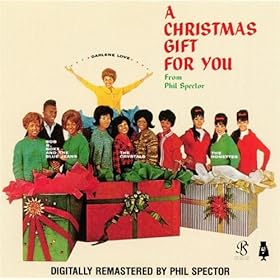
The Righteous Brothers. Unchained Melody: The Best of the Righteous Brothers. Moonglow. 1965.
This duo’s name sounded like a cross between an African American choir and a street gang and yet their vocals and arrangements made distinctions of race nonexistent. To that extent, the power of their early productions could make you forget your own color. Even though audiences have known that Bill Medley and Bobby Hatfield were white as chalk, you sure can’t tell by listening to any of these songs. Their first hit was "Little Latin Lupe Lu." Mitch Ryder and the Detroit Wheels, another racially ambiguous group, picked up on th sound and released their own version, the last time anyone would out-righteous these brothers.
Turning themselves over to a teenage millionaire, Medley and Hatfield began a healthy streak of softer, more powerful ballads with Spector’s perfect production. Among the most familiar lyrics on this planet begin “You never close your eyes. . .—an endlessly mature image from a company whose stated goal was to make little symphonies for kids. Indeed, there were symphonic qualities to the local arrangements in "You've Lost That Lovin' Feelin'" (especially when, toward the denouement, Hatfield and Medley trade cries of “baby” across an ever-tightening battlefield), as well as in "Just Once in My Life," "Unchained Melody" (despite its appearance in the bathetic film Ghost) and "Ebb Tide."
By 1966, Bill and Bobby convinced themselves that they were the true geniuses of the operation and left Philles for Verve. There they made one fine “Lovin’ Feelin’” rip off that worked well: "You're My Soul and Inspiration." Soon enough, the millions stopped coming in and the pair split up. Various solo projects had all the appeal of Sonny Bono in drag. Eight years later they reunited and it felt so good that "Rock and Roll Heaven" resulted. Although they charted a couple more times on the Haven label, the magic had abandoned this mortal coil.

Sonny Charles and the Checkmates Ltd. "Black Pearl." A&M. 1969.
Aside from being a first class pop symphony that uses the passion of its sentiment and the force of its assault to motivate listeners to sway with abandon, this song is also notable for being one of Phil Spector’s last great productions of black music for a bi-racial community. Sonny Charles sings to the servant girl who used to take care of the white folks’ kids. Today he’s going to take her away from all that and treat her the way she had always deserved. His pledge is not economic. He offers her no guarantees that life will be easy. But if he cares as much as the orchestra makes it sound like he does, one way or another, she will be set for life.

The Beatles. Let It Be. Apple. 1970.
It is painfully apparent that The Beatles sensed impending sorrow—as if each member feared this album would be their last gig together. "Two of Us" certainly comes off as if John and Paul are standing on a lane, glancing behind themselves at how far they have come, then peering at the road “that stretches out ahead.” When McCartney repeats the tag, “We’re on our way home,” the personal separation rips the mental photograph into shreds.
"I've Got a Feeling" is a fine return to the musical form of the group’s earliest recordings. Lennon and McCartney’s plan to “get back” to a sound where the virtues of the Beatles’ ability to play great rock ‘n’ roll supercedes production values clashed with guest producer Spector, not a man known for a light touch in the studio.
The real wonder of this album is that the unfathomable talent of both band and producer didn’t undercut the music’s beauty any more than it did. The album version of "Get Back" and the ghastly lushness of "The Long and Winding Road" are the worst of it. On the latter song, violins and a female chorus emasculate rather than accentuate an already pallid attempt at revelry. But that’s small injustice compared to the abbreviated version of "Get Back," where instead of reemerging from the fake ending (as they do on the single), the band simply trails off, saying thanks to Ringo’s wife and adding the ironic remark about passing the audition, all of which is—for a Beatles’ album—somehow insubstantial.
As for the good, in addition to “The Two of Us” and “I’ve Got a Feeling,” the pair of Harrison songs—"I Me Mine" and "For You Blue"—giggle in amazement under Spector’s Bunsen Burner, "One After 909" toots along harmlessly, and the title track not only blends cathedral solemnity with ethereal fuzz guitar, but even allows McCartney’s richest vocal to diagram the end of rock’s grandest four-way partnership. Still, for the less sentimental among us, Lennon’s talking blues and glib ad libs on the throwaway filler "Dig It" cannot be beat: “Like a rolling stone/Like the FBI/And the CIA/And the BBC/B.B. King and Doris Day!”

John & Yoko. "Happy Xmas (War is Over)." Apple. 1971.
This is one of the best Christmas songs for several reasons. First, it was one of the last great Phil Spector productions. Second, it was the one great collaboration between the two principals. Third, it had a swirling chorus that spiritually and musically unified the verses. Fourth, it used the implicitly understood love of John and Yoko as an example to the world of how happy it too could be. Fifth, the song urged the listener to use his mind as an instrument of power to end human suffering. And sixth, it was released on seasonally cheery green vinyl. If that all sounds a bit new age myopic, all I can say is there are still times when even the near-sighted may find it a relief to just listen.

John Lennon. Sometime in New York City. Apple. 1972.
Many years ago, here is what I wrote about this album: “This is among the most muddleheaded albums ever recorded by a major artist. John has seemingly forgotten the lessons of “Help” and POB—that you can say more by saying less. Wordy, preachy, untuneful and separatist, you know John is in trouble when the album’s best song is sung by his wife.”
Times change. It turns out that while everything I wrote back then about the album holds true, I now see that as good. Besides, The Elephant’s Memory Band—especially saxophonist Stan Bronstein—actually gave the songs tremendous punch without sacrificing subtlety.
The last six songs were originally released on a separate disc with Frank Zappa and the Mothers of Invention, and while not as tight as Elephant’s Memory, they still knock down the walls. The topicality of the main disc is really not a problem for listeners because history books certainly do not offer any of this, and even if they did, it wouldn’t be as mind-shattering. How many history lessons actually talk about British troops shooting down Irish civilians or the ten-year prison sentence of a smart agent provocateur caught with two joints or the murder of forty-three people at a New York state prison? This album—musically, lyrically, politically and even ecologically—assaulted the senses of friend and foe alike. But no one of his stature ever considered equating the plight of the oppressed women with the plight of oppressed African Americans, especially not in a pop song that the singer genuinely believed would receive massive radio play despite the title “Woman is the Nigger of the World”! Once the album is reduced to its core, we are left with nothing but guts and an album that sounds exactly like courage confronting the unfriendly end of a buzz saw.
Chapter Ten
The Ringing of Revolution
Elvis Presley tentatively entered the Memphis
Desire may keep the revolutionary motivated, but what he desires has nothing to do with mass revolution. This is not a discourse on upheaval or on the elements of leadership. That is the work of historical conflict theorists and sociologists or of me on the days when I’m not writing about music. But separating the music that follows from the instants of their impact disservices performers and readers alike. Ultimately, these recordings penetrated the limits of public imagination, kicked, bit and shotgunned the borders of our understanding and changed for the better the way we interpret the world. Perhaps just as importantly, these albums and songs also spoke to one another across the weeks, months and years, just as they continue to communicate with contemporary audiences today, either directly or through the tele-highways upon which others continue to travel. To some, that makes these tunes the enemy. It makes them such a central part of modern consciousness that newer artists feel compelled to either reject these sounds in favor of their own inventions (the punk rebellion, MTV, death metal) or to co-opt or outright steal them (Kid Rock). There’s certainly no singular way to revolutionize. But what these performers did was to build on what came before them, process, redefine and refine those influences and become their own catalysts for the ideal act of tearing down imaginary walls between themselves and the audience. When older folks used to say, “I guess anyone can make a hit record these days,” that may not have been technically accurate but it was nonetheless correct. When the rest of us are so free as to be able to expose our differences as a consequence of experiencing someone’s music, that is revolution.
Elvis Presley. The Sun Sessions. RCA. 1976.
“Outside of society,” Patti Smith sang, “They’re waiting for me!” I can think of no better way to describe the feeling and importance of this album. Maybe I could use a bit of fake-spontaneous dialog from Elvis himself. “Hold it, fellas. Hold it. That don’t move me. Let’s get real, real gone for a change.” It might be just as good to shut up, get out of the way and bow to these, the first songs Elvis officially cut for Sam Phillips’ Sun Records:
With Bill Black and Scotty Moore having the times of their lives, knowing in their bones that something weird and wonderful was happening, but not exactly what, they unearthed the tightest confusion ever recorded. Elvis, though, controlled his own state of oblivion. Art, therefore, is superior to science. That’s the lesson these songs teach. Science is when Madame Curie says, “Hey, wonder what this shit is,” as she discovers radium. Elvis didn’t discover anything outside of himself. What he discovered was himself and you can hear that discovery right here.
Until the mid-1990s, it was impossible to find a more comprehensive set of Buddy Holly’s recorded works. And although the seven CD boxed set The Buddy Holly Showcase captures at least ninety percent of the singer’s recorded material (a considerable amount of which is posthumously remixed), the one hundred twenty-two selections on The Complete Buddy Holly remains the essential collection. Indeed, it is only one of two collections to successfully violate the “less is more” ethos. One can hear the steady progression from the earliest recordings where Buddy and friend Wes Montgomery are tightening up their brand of Western Bop. The first twenty-odd songs in this set are from that period.
After signing as a solo artist with the Nashville
Hearing some encouraging words about a Clovis , New Mexico record producer named Norman Petty, Holly stopped by one afternoon with some demos from the aborted Nashville Brunswick
Holly’s recorded output to this point was already enormous. As the middle part of this collection shows, his love of rock ‘n’ roll standards in no way dwarfed his own artistic creativity. "Maybe Baby," with total perfection, linked the romantic ballad streak with the idiomatic nervous determination that became Holly’s trademark. The pre-Dylan imagistic wordplay of "I'm Lookin' for Someone to Love" rode a rhythm track that punched and jabbed like a serious middleweight contender. The hyper-charged drum rolls of "Peggy Sue" roared like a dune buggy while Buddy introduced yet another set of deliberate and controlled vocal tics. And "Not Fade Away" proved that all those cover versions had taught him much. The seminal Bo Diddley beat drives the song while Buddy’s insistence (“I’m a-gonna tell ya how it’s gonna be!”) sends the record into overdrive.
Money troubles, which Holly believed traced directly to Norman Petty’s management style, led the singer to appreciate the need for promotional touring. With his strongest and most polished repertoire in the bag (and without the Crickets), he joined the Winter Dance Party where he joined forces with a young Waylon Jennings, drummer Carl Bunch, and second guitarist Tommy Allsup. This new version of Buddy Holly and the Crickets toured the Midwest with an ever-changing assortment of up-and-coming rockers, most of whom resented the haphazard approach of lunging from one potential market across four states to the next, then back two states, then up three more. But, hell, the money was good.
Until the late 1970s, Buddy Holly’s legend lived on almost exclusively in the United Kingdom U.S. America Clovis to New York City
"Rave On," “Maybe Baby,” "Oh Boy," “That’ll Be the Day”: the more simple the concept, the more challenging the execution. This six-record set provides nearly everything Buddy and the Crickets ever tracked while still alive (excepting some recently discovered “apartment tapes” recorded in the last year of Holly’s life), plus a very chilling interview with Alan Freed. There are smaller sets that hint at the feel. But a hint is insubstantial when in the presence of this man. Buddy Holly was far more than just one of three late Fifties rock stars who died in the same plane wreck in Iowa
The Beatles. Please Please Me.
Four young men from Liverpool , England
The Beatles. With The Beatles. Parlophone. 1963.
Released on the same day that John Kennedy was assassinated, this album exploded with enough power to take LBJ out of the game as well. From the opening call and response charges of the first number to the sinister piano and crazed heat moans of the album closer, With The Beatles was the very width, breadth and soul of that to which pop music would aspire. John Lennon claimed, foolishly, that the band’s best music was never recorded, by which he meant the live sound of the Hamburg days of 1961-62 were not caught on tape (it turned out they were). But this, the group’s second album, clearly captures that sound within the purity of a recording studio, a feat none of their followers out of the UK
Likety-split the songs shoot out the gate:
- Hair-shaking “Yeahs” answer John Lennon’s declaration in "It Won't Be Long" that yes indeed dammit his girl is coming home to him.
- Still holding the lead vocal on "All I've Got to Do," John’s world-weary splintered crooning gets a lift from the insistent backing harmonies, but it’s Ringo Starr’s tempered high-hat, snare and floor tom interplay that controls the song.
- "Don't Bother Me" lurks behind an excellent George Harrison guitar solo and his best brooding vocal, showing a broader range than any other song he’d recorded to this time.
- Drum crack. Paul and George cry “Wait!” Three-legged horse drum intro. Lennon screams, “Oh yes wait a minute!” Suddenly we recognize "Please Mr. Postman," but before we can even name that tune, Paul and George sing the verse, punctuated by John’s urgent calls. Lennon takes the lead, engulfed by harmony lines he’s too distraught to sing for himself until he approaches the fade-out in this thoroughly reinvented cover of the Marvelettes’ masterpiece. He sings with fractured desperation: “Deliver the letter, the sooner the bet—You gotta—Wait!”
- Before we can exhale, George refries Chuck Berry’s "Roll Over Beethoven" as McCartney dances up his own stairstep bass pattern and Star throws his drums at every stick of wood in the room.
- As soon as producer George Martin haunts his piano intro to the cover of The Miracles’ "You Really Got a Hold On Me," what was originally the most urgent close dance song abruptly mutates into the most bitter soul song of the ages. “I don’t like you,” Lennon announces, self-contempt piggybacking on his need for this woman. “But I love you.” The drums and maracas are too insistent to ever let him leave.
- On "I Wanna Be Your Man," a song Lennon-McCartney wrote for the Rolling Stones, Ringo chalks out his lead vocal above electric piano, cacophonies of guitar wattage, about a million whoops and hollers, and a drum pattern that sounds like hyper-speed calypso.
- And for those who thought “Twist and Shout” was as manic as the band could get, "Money (That's What I Want)" the third Motown cover, flares a free fall fire ball as Lennon pilots his dive bomber over suburban rooftops, shredding his voice, demanding “Just give me money! I wanna be free!” while George and Paul cheer him on from the flight tower: “That’s”—deadly pause—“What I want!” What we get is a song that can be best appreciated when played at three times any stereo’s maximum volume.
Woody Guthrie. Dust Bowl Ballads. Folkways. 1964.
Woody Guthrie is one of the most significant recording artists of the twentieth century. He emulated no one because he was an original, the embodiment of the common man because he was a common man with an uncommon talent: the ability to write and sing concisely about situations of enormous importance (“Great Dust Storm,” "I Ain't Got No Home," "Vigilante Man," "Pretty Boy Floyd," "Dust Bowl Refugee," among others here). For one album to represent his work is unlikely (I can also recommend This Land is Your Land, A Legendary Performer, and Library of Congress Recordings), but this, his songs about the catastrophic dust bowl devastation, comes as close as anything could. Migration, lynch mobs, outlaws and the feel of air too thick to breathe knocking on the door—the sense of depression-era life in all its horror and glory is captured here with nothing more than a voice, a guitar, and an occasional harmonica. If all you know is "This Land is Your Land," you know a lot. But after this, you’ll know a lot more.
Bob Dylan. Bringing It All Back Home. Columbia
Rants, fables, slapstick humor, bitter rage: Dylan drew all this an more. He was too morbid to be pissed off and too stoic to smile at the absurdities. Given proper amplification, any band can explode. But once the needle rode the patient groove to the first churning crank case wail of "Subterranean Homesick Blues," the players drove with an intensity folk purists found more enraging than the actual electricity itself. Even the occasional deliberate lyrical absurdities from Buddy Holly failed to prepare the world for: “Phone’s tapped anyway Maggie says that many say must bus in early May orders from the D.A.” This was rock attitude spilling out all over the freshly woven carpet and it was heaven. The same holds true for "Maggie's Farm," “Love Minus Zero/No Limit,” "On the Road Again," “Bob Dylan’s 115th Dream,” and especially "Mr. Tambourine Man."
Proving that the previous folk albums were not accidentally brilliant, D. A. Pennebaker’s documentary, Don’t Look Back, captured many of these songs, and certainly gave them context. Nothing here is less than inspiring, but my own favorite moment is when, on “Dream,” the band misses its cue and Dylan doesn’t notice.
The Beatles. Rubber Soul. Parlophone. 1965.
This recording led many people to suspect that there might be something messianic about The Beatles. Not only was there an immense change in the depth of instrumentation, but the structure of the songs themselves became far more complex while maintaining a youthful appeal that stretched beyond middle-age. Even a song such as "Run for Your Life," which its author, John Lennon, claimed to dislike, packed a sophistication only hinted at on earlier releases. It is hard to pick one song that truly stands out, but the closest I can come is "Wait," which was one of those rare collaborations between Lennon and McCartney where each one clearly made a useful contribution to the other’s song, a contribution that comes out in the lead vocal. Self-awareness and authority seized The Beatles as never before, furthering notions of uber mensch. Such an interpretation may seem amusing these days, but at the time, even the song titles "You Won't See Me" and "I'm Looking Through You," in the context of such good-natured and relaxed self-confidence, implied other-than-normal abilities. It’s doubtful this was entirely accidental. The words to "The Word," for example, are more like a pronouncement than a pop lyric. This created a context in which the less dance-oriented instrumentation gelled with the lyric power in ways that no one—certainly not Bob Dylan—imagined possible. People studied this music, certain that nothing would ever surpass its magnificence. Nothing ever did, until their next album.
Bob Dylan. Highway 61 Revisited. Columbia
Robert Zimmerman is one of the five or six biggest jerks ever to rise to stardom and piss all over his fans in the name of pursuing his own artistic vision (as is made evident by the fact that damned few of his original recordings are available on YouTube, although most people blame Sony). He is also one of the three greatest acts of the 1960s. His first albums were just Bobby singing with that railroad voice and accompanying himself on acoustic guitar, scratching out a rough form of folk blues. But by late 1964, the times had changed. Dylan was rocking out with not only his three best albums, but three of the best albums ever made. This recording, Bringing It All Back Home, and Blonde On Blonde are the three Dylan recordings to own. The images on these collections were bizarre, largely comedic exercises in word play, and they were positively Fourth Street
"Like a Rolling Stone" kicks off like a shotgun blast and never lets up, never halters or falters in its undisguised hostility with which no one, least of all the victim of the tirade, can possibly argue against. “Tombstone Blues,” which is easy to dismiss as just silly (despite the most inventive absurdist rhymes ever recorded, such as “Is there a hole for me to get sick in. . . The sun’s not yellow, it’s chicken”), actually is a madcap battering against all manner of foolishness, essentially the same melody repeated many, many times, but with different musical emphasis accentuating each repetition. It was also one of the first Dylan songs to say something deep without saying anything of consequence. Stephen King, in his first published novel, Carrie, would allow his title character to read much into the last verse of this song. "Ballad of a Thin Man" was a return to the top with vituperative assault against hung-up Mister Jones (“There ought to be a law against you coming around” is one of the milder attacks), the title track was a cartoon of intensity set along the road that African-Americans once traveled from Chicago to New Orleans, beginning with God and Abraham arguing about infanticide and ending with Osama bin Laden trying to find a place to market the end of the world, and "Desolation Row" brought the entire carnival together for a morbid laugh. Even if it all was nothing more than clever wordplay unleashed by chemical abuse, the result was complete and total bewildering excitement.
The Beatles. Revolver. Parlophone. 1966.
If people studied Rubber Soul, they bestowed Revolver with the power to mesmerize. From the introductory coughs of the recording engineer to the final fades of the swirling drum beats, Revolver remains as much an event as a pop album. Did the title refer to the movement of the vinyl album spinning on the turntable? Was it a sneaky reference to a handgun? Or was it implying that the music was as big, as significant, as a planet in motion around the sun? Whose eyes were those staring out through the Klaus Voorman cover art? These questions seemed so imperative, particularly since the album’s release coincided with the band’s decision to end their touring.
But enough trivia! What about the music? Certainly the musical and production sophistication surpassed anything The Beatles (and therefore any other rock band) had ever done before. Even more than with Rubber Soul, the lyrics invited scrutiny, even dissection. The Beatles lambaste Prime Ministers Harold Wilson and Edmund Heath ("Taxman"); they quote Peter Fonda on an acid trip ("She Said She Said"); they emerge with the rollercoaster sound wash of the closing track that also happens to quote liberally from the Tibetan Book of the Dead ("Tomorrow Never Knows"). So fascinating was all this that the public did not care that Ringo clearly says “slubmarine” in the last verse of "Yellow Submarine," or that none of The Beatles play on "Eleanor Rigby." This album had trumpets, this album had string arrangements, it had Indian music, it had guitars overdubbed deliberately out of sync—it had more varied components working in harmony than most classical music albums. Finally, as a result of all this, it did one thing that no other pop or rock album had ever done before: it elevated the cultural sophistication of anyone who listened to it for pure pleasure.
Bob Dylan. Blonde on Blonde. Columbia
As the second ever two-record set rock recording, Blonde on Blonde seemed a risky move at the time. In retrospect, it is clear that this album divulged just how much talent and ambition one man could have. Whether the joyful stupidity of "Rainy Day Women #12 and 35" or the manifest splendor of "Visions of Johanna" (possibly the most beautiful song Dylan ever recorded), the myopic misogyny of “Just Like a Woman” or the throw-images-against-the-wall-and-see-what-sticks attitude of "Stuck Inside of Mobile with the Memphis Blues Again," the hit-making potential of "I Want You" or the confusion of "Obviously 5 Believers," Blonde on Blonde was either a massive undertaking and achievement or the beginning of the end, depending on your point of view. Some have argued that had Dylan not been out of commission due to the famous motorcycle accident, he would have continued churning out such magnums, citing The Basement Tapes, an assuredly overrated testament, as proof. Others point to his book, Tarantula, as proof that his talent was spent. Either position is a bit too blind or fawning to be accurate. But it is true that this was the last time the quality of the sound would emerge as something more than just popular music. It was, simply, the end of the glow. That this music is still capable of using that glow to tan new listeners says as much about its ultimate power as anything ever written.
Jimi Hendrix. Are You Experienced? Reprise. 1967.
Blues artists used to dabble with electronic feedback to give their inventions a live texture. And as early as 1964, The Beatles took deliberate feedback to new levels on the introduction to “I Feel Fine.” But, give or take The Yardbirds, until 1967 no one had ever harnessed the power of distortion in a way that made subtle cavernous hums roar out against simultaneous or overlapping screeches of raw and controlled electrified urban blues. So, yes, Hendrix is still the most innovative guitarist of all time. Sonic feedback, licks, howls, moans, speed changes: all that just during the tuning up. Once the songs actually erupted, multi-colored sounds of muscle lava music poured down over an audience already nearly too stoned to breathe. The hoary old blues song "Hey Joe" (already a hit single for The Leaves) wakes up in a room full of murderous strangers and shoots its way out of town. The album’s softest touch, "The Wind Cries Mary," digs an unpaved turnpike through the burning center of the earth and whispers at the iron door of Hell to see if anyone will answer. "Love or Confusion" carves out funk with a jackhammer that not even Sly and the Family Stone had the strength to handle. It hardly matters that every longhair with a guitar can recycle "Purple Haze" (which must be true, because if Kip Winger can do it, so can you—even a terrible group called Elvis Hitler did the music to the words from the theme of TV’s “Green Acres,” his version called "Green Haze."). What matters is that Jimi Hendrix thought up those chords and was able to convey them into wide white eyes and yet not completely alienate his black fans, bringing everyone together, including Mitch Mitchell and Noel Redding, under the biggest thunder made by mortals, then and now.
Van Morrison. Astral Weeks. Warner Bros. 1968.
Van Morrison leapt from the barroom snarl of "Gloria" and the adult bubblegum snap-crackle of "Brown-Eyed Girl" to the water-eyed jubilance of Astral Weeks in a mere two years. That represents the equivalence of going from lines about making love in the green grass to lines like “If I ventured in the slip-stream between the viaducts of your dreams where mobius steel rims crack. . . Would you lay me down in silence easy?” In magnitude, that is like evolving from being a collector of old Native American relics to harnessing the power of Uranium-235. There is a “childlike vision coming into view” about this recording that comes over on the plucking, strums, rhythms, words and vocals. These elements spin together as a bi-product of a child’s curiosity about the mysteries of life. And Morrison is thoroughly intoxicated with every breath of life he draws. The stunning shadows behind smiles, the smell of a drag queen, the glint of light from a police officer’s badge, the razor edge wit of a young girl who doesn’t know he’s watching—Astral Weeks is a stoned-out fascination with the interaction of people and their intimacies with the elements.
Phil Ochs. Rehearsals for Retirement. A&M. 1968.
The term “American Dream” is horribly overused. And yet I will draw it out one more time because it is essential in the context of any discussion of Phil Ochs. A former journalism student, Ochs never completely lost his love of reportage. America
Creedence Clearwater Revival. Green River . Fantasy. 1969.
One needn’t possess a fragment of a clue as to the “meaning” of these songs to find them exhilarating. Pop the disc in the slot, roll down the windows, give it the gas, and your hair is blowing just as free (and your mouth smiling just as wide) as the expanse of the true naturalists of rock ‘n’ roll. With nothing but two guitars, a bass and drum, plus the talent to play them as the tightest ensemble of all time, these Oakland boys churned up the best bayou stew ever to come from the bad side of the San Francisco trolleys. If lead singer, composer and arranger John Fogerty faked the idyllic imagery, the dread it protected him from was real. The safe-haven force field protection extended to CCR’s base of fans. It felt good having someone who sounded old and wise as Moses tell us that Nixon’s ascendancy might lead us to be “prepared to die” or that the early evening shadow was cast by a tombstone and the name it bore stood recognizable. The prospects for world annihilation were at least as real then as now, and they certainly were felt just as intensely. That’s why the jagging guitars, rollicking syncopated bass, unfathomably fill-driven yet urgently reigned-in drums, and especially the mood they set has lasted and even sounds more immediate now than then. The real and metaphoric gleaming green river of which Fogerty sings reflects not only the glorious nostalgia for which we all occasionally yearn. It was then and remains today the only conceivable sanctuary in a smoldering world.
Elvis Presley. From Elvis in Memphis
Perfection.
The big story was supposed to be that the King had returned to take the true believers back to heaven with him, which would have been just fine. But the even bigger story is that you do not have to know one thing about Presley to find this recording irresisitible. From the very titles of the songs right through to the album photography—oh yeah, the arrangements, music and vocals are good, too—this is a personal testament of spiritual impact. So throw away all your holy books and stop killing total strangers in the name of your ignorant delusions. If you need to believe in something bigger than yourself and your fellow man, believe in this. When an interpretive singer can come up through his song and be reborn in that experience, he makes that song more his own than it ever was for the person who actually wrote it. Hank Snow, for instance, may have written "Movin' On." Elvis created it. Which is the more important accomplishment?
Creedence Clearwater Revival. Willy and the Poor Boys. Fantasy. 1969.
Think of this album as instructions in how everything can be the opposite of what it is. The drums on "Fortunate Son" hum bum-bop bum-bum-bop as the guitar sings a repeated two-note declension. Such sprite! How catchy! But stand back, buddy, because this man Fogerty’s got a loaded axe and he’s ready-set to chop down everything you hate. While "Down on the Corner" scratches out a harmless jug band shuffle, it invites listeners and musicians alike to enjoy the experience as a distraction from their own abject poverty. "Cotton Fields'" merriment cloaks a reworked slave song. And the most overtly joyous song on the album, "The Midnight Special," is about a prisoner getting the electric chair. It can be no coincidence that Fogerty lifted both these last two songs from hearing them in the movie Cool Hand Luke. Suffice it to say, the title character of that film didn’t live to appear in a sequel. The only song that instantly and forthrightly reveals itself is "It Came Out of the Sky," a very funny tale about a farmer discovering a meteor. By the time "Effigy" blows the ashes from the face of terror, a chuckle is quite a welcome sound.
John Lennon. Plastic Ono Band. Apple. 1970.
This was the hardest hitting, most powerful debut album ever recorded. As stark as The Beatles were ornate, this is often known as John’s primal scream album. That would have been an apt title. From open to close, this record was so intense, honest and depressing that a lot of Beatle fans were put off, opting for Paul’s more charming, homespun melodiousness. In "Mother," Lennon told his dead parents that they had neither needed nor wanted him and warned his fans not to follow his own misguided path. "Working Class Hero" was nothing less than autobiography and a realistic one at that. And "God" was a litany against some people’s idols and a few of John’s own heroes, all of whom had promised much and delivered less, at least as far as he was concerned. He concluded by kissing off The Beatles, announcing the dream over. To that end he was too correct.
Creedence Clearwater Revival. Cosmo’s Factory. Fantasy. 1970.
Excepting only greatest hits collections, multi-artist anthologies and a few James Brown records, the best albums always sound as if the group playing any one song was also playing all the others. Further, they sound as if the songs were all recorded at approximately the same time. That the reality is often different has no bearing. As a case in point, six of this album’s songs were released as singles before the album came out, and of the remaining five numbers, four were cover versions. And so somebody “assembled” this LP, although all the songs were performed by Creedence. Knowing all that, to this day the record sounds as if four of the best rock musicians in the world got together in your garage and put on a concert for the most accessible people on the block. "Run through the Jungle" may well be the best thing CCR ever recorded—it certainly conjures the tortures of Vietnam-style combat rumbling like convulsive belly fear right up until all hearts choke as Satan cries “Take aim!” "Lookin' Out my Back Door," one of the band’s better C&W knock-offs, relieves the weighty pressure, as does the Roy Orbison homage. But the one song that keeps everyone coming back again to this album is "I Heard it Through the Grapevine." More than anything Creedence recorded, “Grapevine” compacts the freedom of the extended jam with the required strictures of a hard-driving rock single. A California
James Brown. Get on the Good Foot. Polydor. 1972.
According to conventional authorities, the 1963 Live at the Apollo double album was James Brown’s testament to the ages. The reason those unquestioning intellects respond to that album is because it captures the sound and feel of the experience of being in the vicinity of James when he goes publicly berserk. In the less conventional universe I envision, Get on the Good Foot is even better for those very purposes, in no small part because it gives two completely different bands, each trying to cut the other to pieces. Comparing the few remakes is useless—might as well compare Picasso’s blue period with his cubism. Both periods are rife with works so astonishing, you breathe deep and let them overwhelm you. Good Foot is more cube than blue: repetitious to the point of monotony, mindless “whoo’s” clicking out clichés Brown himself popularized years before, and simultaneously the most exciting stuff in early 1970s black pop, meaning any pop at all. There’s also an unpleasant, numbed tingling across the landscape of the vocals that conjures images of internal bleeding. This is reinforced by the strange "Recitation by Hank Ballard," wherein the former singer for the Midnighters comments on the album we are playing—in process. Then from out of nowhere, he raps on about how he himself had been playing in the graveyard of losers until he was saved by what he calls “The James Brown World of Music.” Eventually, it is easy to wonder whether Brown is suffering from that internal bleeding or just getting ready to administer some to his enemies.
Bruce Springsteen. Born to Run. Columbia
Greil Marcus called Born to Run “a ’57 Chevy running on melted down Crystals Records.” That synthesis of this album is nearly as powerful as the recording it describes. I remember the week that both Newsweek and Time ran cover stories on Bruce Springsteen. Like most of my high school class, I knew the rumors that Bruce would be the next big thing, and like my class, I expressed doubts. The national news coverage confirmed my worst suspicions—nothing heralded by both prime propaganda outlets could possibly be worth a damn.
It just goes to show that in their unending efforts to stupefy through bourgeois fulfillment, even those two magazines occasionally got something right. Born to Run tell stories of futile lives unaware of their own futility, of people so destroyed by sorrow, frustration and even by their own limitations that their lack of self-awareness must be the only thing that keeps them going. To cite one example, in "Meeting Across the River," the narrator explains to his buddy that they’re going to do a favor for some guys, some pretty scary guys (“These guys don’t dance,” is how he puts it). But if they make it back, his girlfriend will be sorry for every name she called him earlier because “Three grand is practically sittin’ right there in my pocket.” The dialect, the drama, and the music of the E Street Band: a conflagration of noise even on the quiet numbers. This did not turn out to be, as critic-manager Jon Landau put it, rock ‘n’ roll future. It did turn out to be the first of many harrowing rides Springsteen would allow us to share. Even as mere passengers, we connect with the journey because our driver has a lock on poetic verisimilitude. That is, the reality of the images passing by us is irrelevant—their connection to a richer existence makes even the most mundane mental visual scream with life.
Chapter Eleven
The British Invasion: I Want to Hold Your Moneymaker
Phil Mershon
As The Beatles themselves would readily admit, the music they played (at least initially) was based on American rhythm and blues. What modesty forbade them from adding was that they unlocked from within their collective musical selves—their Spiritus Mundi—a highly developed and disciplined freedom so large that it insisted everyone experience the immediate intangible benefits of that infectious freedom. Their covers of Motown, Chuck Berry and Carl Perkins may have been technically letter perfect, but the unremitting force of the freedom inherent in the very essence of these songs, mixed with originals that vitiated even the most stubborn resistance, demanded with clear and absolute certainty that any limits on pleasure were just an illusion of our own making.
The Beatles released singles and albums in Great Britain as early as 1962. Despite three different record companies issuing a total of four singles in the U.S. prior to the band’s physical arrival in January 1964, with no promotion and limited distribution, the singles made no market penetration. British groups hadn’t made much of an impression on U.S. record buyers since—well, since forever. So Capitol Records—owned by the same corporation that owned Parlophone, who released Beatles music in England—felt fine ignoring the group’s demands to issue their work in the States. But after The Beatles’ first two albums topped the U.K. charts and showed no sign of dropping, Capitol could no longer resist and finally issued “I Want to Hold Your Hand,” backed with “I Saw Her Standing There” on January 13, 1964. The album, Meet The Beatles, hit the stores six days later. The effect of The Beatles music on radio, television and of course on any stores that sold popular music, accompanied by their frequent appearances that year on Jack Paar and Ed Sullivan’s TV programs—the effect of their total and complete presence damn near everywhere one looked or listened that first year alone can be measured by their domination of Cash Box Magazines record charts. For twenty-one weeks, The Beatles held the Number One position. Within the first few weeks of that year, the idea that anything British was as good as the four mop tops took hold, cursing the States with such unmitigated pig slop as Herman’s Hermits, Gerry and the Pacemakers, Peter and Gordon, Freddie and The Dreamers, Billy J. Kramer & the Dakotas, and the Dave Clark Five.
But it wasn’t all bad. And the best of it did not go away for quite a while.
One Newcastle quintet specialized in applying the tension of John Lee Hooker’s blues to the ballads rediscovered by Bob Dylan. A London fivesome of obsessed R&B devotees expressed an unloving sexuality through a vocal stare and tangible insolence. A lonesome cover band from Muswell Hill inverted the “Louie Louie” rhythm pattern at a time when most of the members were still learning to play their instruments. And from London, four young rockers often mistaken for mods billing themselves as R&B artists stuttered out a separatist anthem of eternal youth. It was all brash, loud, urgent and constant. You couldn’t escape it if you’d tried and there was no reason to do so. The Animals, Rolling Stones, Kinks and Who pounced and drop-kicked, shook the tone arm, smiled and screamed. Whether intellectual, musical, sexual or any combination of the three, the oldsters recognized a threat and properly retreated, making room for groups who redigested American music most of us originally ignored and happily beat us over the head with it. The assault was bliss.
The Beatles. A Hard Day’s Night. Parlophone. 1964.
I could easily live the rest of my life without ever hearing the schmaltz of “And I Love Her” or “If I Fell” again. Same goes for the big-toe-in-the-sand feel of “I’m Happy Just to Dance with You.” The only function those three songs serve is to make the world want to hurry up and get on with the rest of this album, which is otherwise outstanding. The title tune is frequently heralded as a guitar anthem, but to my ears it is the drumming that propels the tune along, although, to be fair, it is probably the unified whole that makes it really work so well, which has psychological as well as musical punch going for it. "Can't Buy Me Love" proved that Paul McCartney had not completely lost his love for a great rocker. But the best thing here comes almost last: "You Can't Do That" is even better than the usual cover version that typically closed out the albums. Manic piano pounding reinforced with Paul’s bass and amplified with Lennon’s deranged scolding: ecstasy. George Harrison holds the fort to the ground just as Ringo Starr’s restrained performance punctuates without overriding.
The U.S. version of this album, released on the Capitol label, presented a somewhat different song line-up, but either issue coincided with the release of the same-named film, a cinematic experience that went far beyond Marx Brothers comedic virtuosity, Elvis Presley drop-in musicality, and even Kubrick-like intensity. One effect of the film was that thousands of U.S. bands formed overnight, hoping to be the next Beatles. One effect of this album, the Beatles third in the U.S., was that everyone stopped asking the group members what they would do for a living when their musical bubble finally burst.
Carefrees. "We Love You Beatles (Oh Yes We Do)." London International. 1964.
Everyone from John Lennon’s father Freddy to Bonnie Jo Mason (who may be more familiar today as Cher) capitalized on the total consumption the American public displayed in 1964 for anything Beatles-related. Musically, every effort was putrid in the extreme, with this sole exception. Nothing more than a throng of unnamed fans chanting the title about a thousand times in less than two minutes, it actually captured the exact feel of Beatlemania without any of the hucksterism that term implies.
The Animals. Best of the Animals. Abkco. 1973.
The original Animals were a growling rhythm and blues quintet from Newcastle, a town that did not suffer musical impurities lightly. Neither, it turned out, did The Animals. Making their initial appearance in the United States at the time of the release of The Beatles motion picture, A Hard Day’s Night, The Animals were the first confirmation that the British Invasion of 1964 was legitimate. Led by the sullen vocal swagger of Eric Burdon and driven by Alan Price’s haunted mansion organ work, their rendition—their reinvention—of "The House of the Rising Sun" sounded like exactly what it was: the white working class made delirious by acculturation of rural American intensity strained through a European seaport sensibility. In other words, this was a prime example of Englishmen borrowing a Delta blues song, rocking it up and returning it with more authenticity and hooks than it had when they borrowed it. Never far from the Bo Diddley beat or the John Lee Hooker rhythm, these guys pumped barking reinventions of demented blues like "Mad Again," "Roadrunner," "I'm Crying" and "Please Don't Let Me be Misunderstood." The bad news is that Burdon went to San Francisco, bathed himself in psychedelia, dumped the band and picked up some slackers who nevertheless cranked out one scarifying number, "When I was Young," the only serious omission in this collection of singles. Burdon later joined up with War, releasing one good album before somebody realized he was not an African-American. Price appeared in a Bob Dylan movie called Don’t Look Back and bassist Chas Chandler managed the Jimi Hendrix Experience.
The Beatles. Beatles for Sale. Parlophone. 1964.
While it may be true that the mood of this U.K-only album was more subdued than any of its predecessors, that is hardly the point. In addition to the two great Carl Perkins’ numbers (one by Ringo, on by George), this album features one of Paul McCartney’s best vocals, "What You're Doing," which also happens to be one of the group’s ultimate treasures. Even before that, Paul virtually explodes with the combo covers of Wilbert Harrison’s “Kansas City” and Little Richard’s “Hey Hey Hey!” And to those who sneered that the first three songs on the album prove that John Lennon was miserable amidst all the peppiness, I would simply suggest listening again to his cover of "Rock 'n' Roll Music." The pain may have been real, but it is clear John understood what held the cure.
The Rolling Stones.
"Tell Me." London. 1964.
"It's All Over Now." London. 1964.
"The Last Time." London. 1965.
More than any other singles the band released in its working years (1963-1972), these three emphasized R&B over hard pop in the merger of the two. Whether ripping off Pops Staples or Bobby Womack, the characteristic working class toughness (an affectation) filters through their unassailable skill in legitimizing black rhythm and blues. “Tell Me” sounds like all lead vocal until closer listening reveals a stacked pyramid of backing harmony and high range percussion atop Bill Wyman’s understated but steady bass line. “It’s All Over Now” nudges up against appropriated reggae, but slurs too much like a Louisiana obscene phone caller to be holy music. And “The Last Time” is sped-up romanticized Gospel so definitive of English seaport sensibility that the original pressings are still damp, all these year later. In all of these early singles, you can feel the cocksure swagger, the slightly stoned sensibility, and a caged appetite that salivates as the key to its confinement creeps warily near.
The Rolling Stones. The Rolling Stones, Now! London. 1965.
The catalog of this group’s music remains in such excellent condition because the quality of nearly all their recordings (up until the real Mick Jagger’s timely death in 1972) was so high. Mick’s singing got better with each album, Keith Richard’s guitar could sound like anything from a saxophone to a banjo, Brian Jones became more simple-minded and bizarre with every instrument he added to the band’s line-up, and bassist Bill Wyman and drummer Charlie Watts understood one another’s musical signals well enough to be the loosely-tightest rhythm section on record. The group’s version of R&B was informed by recent past masters. It was also completely original in its hardness, its intensity, and its fun.
So, too, were the Rolling Stones. Most fans are aware that they pissed on a garage attendant, but how many people realize this was done from a 727 flying at 35,000 feet? Ah, but such digressions threaten to distract from the music. And that would be far more criminal than any actions of the Stones because Now! is the toughest R&B album of the 1960s. Had any known band working in the States in 1965 covered Solomon Burke, Chuck Berry, Bo Diddley, Otis Redding and Howling Wolf—on one album—well, the very suggestion is too nauseating to consider. But the Rolling Stones did far more that mimic the catchy parts. They inhaled these songs as food, metabolized the life-force in every beat, quaver and syllable, and became these songs. And so this album sneers without condescension, yearns without falsity, taunts without remorse, and rocks without surcease.
The Yardbirds. "I'm a Man." Epic. 1965.
If the guitar is the only instrument you ever hear when listening to music, then you might consider the fact of this sole Yardbirds entry to be abominably sparse. If on the other hand you simply like good, catchy Bo Diddley songs rechanneled and fired from a gattling gun while Jeff Beck plays his guitar as if it were a drum—meaning for the percussive effects rather than for the erotic appeal of strings bleeding into fingertips—then surely you have already recognized this hit single as the blast house head bang sonic thrasher that it is, the sole essential work in a hodgepodge career.
The Beatles. Help! Parlophone. 1965.
In 1965 the Beatles could have released an album of crows being shot with elephant tranquilizer and one half of the world would have bought it while the other half would have analyzed its social import. In a way, that state of affairs may have taken off just enough commercial pressure for the boys to release an album that was just as good and different enough to be exceptional. The title track was brilliant in its harmony (the response coming before the call was new to pop records) and fairly revealing of its author’s state of mind. "Ticket to Ride" had one of the most complex yet catchy rhythms played by anyone before or since. And the album closer, "Dizzy Miss Lizzy," an onslaught of a minor hit for Larry Williams, maintained the tradition of wrapping up with a furious Lennon rocker. Everything else here is fine. There’s no escaping it. But those three songs are the ones you will keep coming back to every time you think of the experience of this album. And with any luck, none of the songs will remind you of the film of the same name.
John Mayall (with Eric Clapton). Bluesbreakers. London. 1965.
Here’s some trivia. The most famous folks to play in bands with John Mayall are Jack Bruce (Cream), Eric Clapton (Yardbirds, Cream, Blind Faith), Aynsley Dunbar (Mothers of Invention), Mick Fleetwood (Fleetwood Mac), Peter Green (Fleetwood Mac), Keef Hartley (Yardbirds), John McVie (Fleetwood Mac), and Mick Taylor (Rolling Stones). What is not trivial is this album. This recording captures Clapton’s brief time with the band and gives Mayall the legend he deserves. To own Bluesbreakers is to own one of the most exciting guitar-oriented albums ever recorded. Anyone who suspects that the British acculturation of Delta and Chicago blues is overstated should sip from this album. After all, the well is deep and the mud won’t hurt much. Watching this music—and it is visual—one can see life crawling from a broken wine bottle in a forbidden nightclub near the Mississippi River. The music sinews, spurts, spits, erupts and cascades, all due to Clapton’s convincing ability to syncretize modern technology with the rural passions of Delta blues. There’s not much to be said for the limitations of Mayall’s singing (he hasn’t much range and sounds as if he is reaching for levels beyond his abilities). But don’t let that scare you away. He sure could put together a fright of a band.
The Who. The Who Sing My Generation. Decca. 1965.
The early Who billed themselves as “Maximum R&B,” a misnomer, to be sure. Nevertheless, when they weren’t imitating Motown or pretending to be a teen dance band—in other words, when they forced themselves to be original—they announced themselves with more fiery pluck and imagination than any other middle class London band. Keith Moon was the first rock drummer to deliberately overlap his rhythms into the first few seconds of the next bar, in the process propelling guitarist Pete Townshend’s dense yet brittle fuzz clatterings. Those shards of guitar distortion appropriately fractured the femur-thick bass lines of John Entwistle, which in turn arched the entire sound just slightly behind singer Roger Daltrey. Though Townshend wrote "My Generation," Daltrey virtually makes it his own with a forced stuttering dementia co-opted from amphetamine-eating mods. "The Kids Are Alright" shivers with that same nervousness. But "A Legal Matter" is pure macho bravado, a frown of contempt for anyone gullible enough to believe in the promise of just such machismo. The two James Brown covers are endearing and "Instant Party" is downright weird. But the future of this band’s power is readily apparent throughout this debut disc.
The Rolling Stones. Aftermath. London. 1966.
Nothing lasts forever except death and so the Stones entered their baroque period. While Mick and Keith debated about what to call their new album (Keith preferred Afterspelling, but gave in, thinking that Phys Ed teachers probably did know more about art than he ever would), Aftermath became the perfect embodiment of what nineteenth century British boys would have been bluesing about if they had had the awareness of twentieth century American black men. Somehow or other, the group took on a Satanic ambiance, directly traceable to this recording.
The Kinks. Greatest Hits. Reprise. 1966.
Something Else. Reprise. 1968.
Ray Davies, Dave Davies, Peter Quaife and Mick Avory—the original Kinks—were among the most enjoyable performers to emerge in the shadow of The Beatles invasion of America. Because Ray could write very good, tight songs that the others could play, most of their best work ("You really Got Me," "Tired of Waiting," "Set Me Free," "Dedicated Follower of Fashion," "Well Respected Man," "All Day and All of the Night") happened by the time of their first greatest hits package—that is, before the group became more interested in grand statements about pastoral pleasures. Something Else is aptly titled. While flirting with the “concept LP” concept, it never quite lets go of the qualities that made the Kinks so endearing: Britain is a fascinating place, our musical skills are quite superb, and the subject matter of our songs will inspire and intrigue folks for generations. "Death of a Clown," "Two Sisters," "Harry Rag" and "Waterloo Sunset" are the best of the best here. Once you acquire the Lola LP, these two albums are great to return to because, while there is no rock opera silliness here, there is a lot of counter-conventional fun.
Dusty Springfield. "I Only Want to be with You." Philips. 1964.
"You Don't Have to Say You Love Me." Philips. 1966.
This is Dusty after her stint on the British pop TV show, “Ready Steady Go!” and before she recorded the soul masterpiece in Memphis, meaning that she emphasizes the vast operatic aspects of her voice on these two songs, songs which would be something less than trivia in anyone else’s throat. While not the heart-ripping soul of her later work, these two songs anticipate that evolution.
The Beatles. Magical Mystery Tour. Apple. 1967.
While this is not The Beatles’ best album, it is one of their more interesting recordings. The opener has a trippy, even depressed sound that contradicts the invitation we’re expected to accept. "Flying" is a rare instrumental with Ringo humming along. "I Am the Walrus" stirs lysergic acid into a mix of scatology and Lewis Carroll. "Baby You're a Rich Man" is splendid as a song to the group’s manager, done with a new calliope, and a tag at the end (“baby you’re a rich fag Jew”) that I’ll bet they regretted. “All You Need is Love” hasn’t aged particularly well and I’ve never thought “Strawberry Fields” worked all that well as a song. So they give us a wild selection here—which is exactly what it sounds like. Still, it would be a shame to be without most of these hits.
The Hollies. "King Midas in Reverse" and "Pay You Back with Interest." Epic. 1967.
One of the most neglected acts of all time, The Hollies created a mellow harmony that always steered toward slop without completely crossing over into a big pile of the stuff. These two lesser-known pearls are so brilliantly ambiguous, it’s a wonder any label exec of the day would release them. Maybe the decision turned on the fact that the vocals are nearly indistinguishable from the instrumentation. That is not to say the words are indecipherable. Their meaning could not be more clear. Loss, redemption, deeper loss, depression, possible redemption—but with such grandeur we can forgive every cliché. With harmonies this good, we can even embrace them.
The Who. The Who Sell Out. Decca. 1967.
This is pirate radio. Well, it’s close. Townshend wanted to replicate the sound, feel, etc., of the ships off the coast of Britain that illegally and sometimes magnificently played great local and international hits to the youth of the United Kingdom. In between genuine rock songs like "Armenia," "Mary Hand with the Shaky Hand" and especially "I Can See for Miles," the brains behind The Who placed commercials and radio jingles that bleed into the beginning and endings of the real songs. Interestingly, those commercials and jingles sounded so convincing, it was hard to tell the tripe from the ripe. The concept broke down a bit toward the end, but Pete Townshend tacked on "Rael," a mini-opera which directly prefigured the album Tommy.
Spencer Davis Group. "Gimme Some Lovin'" and "I'm a Man." United Artists. 1967.
Spencer Davis was actually the guitarist, not the vocalist, of this fine British Invasion R&B combo. The singing was done by Steve Winwood, the organist, who went on to play with Traffic, which was reasonable since more members of what would become Traffic played on “Gimme Some Lovin’” than did members of Davis’ real group. And yet the group, as a whole, was quite wonderful, covering recently old blues and R&B tunes with masterful ease and creating the occasional winning original. After Traffic, Winwood joined Blind Faith, a doomed project, as well as Ginger Baker’s Air Force. He no doubt achieved more commercial success on his own during the 1980s. But his artistic peak was clearly as a kid, singing these two glorious, possessed raunchy ‘n’ roll classics.
The Rolling Stones. Beggar’s Banquet. London. 1968.
From an actual conversation:
“Oh, I see you have Jean-Luc Godard’s film Sympathy for the Devil on video.”
“Yeah.”
“It was originally called One Plus One, wasn’t it?”
“Uh-huh.”
“What’s it about?”
“I dunno. I’ve only watched it three times.”
That’s very much the way I feel about Beggar’s Banquet. While I’ve listened to it many times over the years, I’m left with no real sense as to what it is about. That lack of comprehension is, of course, entirely appropriate, just as it is with Godard’s film. The movie juts back and forth between the band evolving "Sympathy for the Devil" into the final version we hear on this album and (presumably) staged scenes of Black Panther lectures, a pompous Stalinist spouting hilarious non sequitors, and an unending stream of girlie magazine covers. We are not intended to “follow” the film. We are to experience its plots as expanded microcosms which may make us feel something. And opening us up so that we can feel is precisely what Beggar’s Banquet accomplishes. By the time of this album’s 1968 release, the very act of retaining the feel of an experience was likely to be rejected as too dangerous. Utopia got murdered everywhere it went, from the parks of Chicago to the bustle of a Los Angeles victory party, and from the balcony of a Memphis hotel to unmarked mud graves in Mississippi. The Rolling Stones steered clear of utopia, but they intended to make the most of dystopia. "Street Fighting Man," the centerpiece of the recording, stoically accepts the fate of fighting in the street for no other reason than because it won’t do any god. Nothing really links this song with anything else on the album, just as no one track especially connects with any other number. That willingness to feel comes about only by giving in to the carnivorously bleak atmosphere the band creates while raining down waves of guitar fire-jelly, offering a groupie a pointless ménage a trios, and showing the Queen of England leading a military assault on 50,000 protesting grandmothers.
Manfred Mann. "The Mighty Quinn." Mercury. 1968.
This is one of those long-running 1960s groups that went through several phases, no one of which is particularly superior to any other. In the early days, Paul Jones was the lead singer (Mann played keybs) and hits such as "Pretty Flamingo" and "Do Wah Diddy" were all the teen rage. Even better was Mike D’Abo, who sang lead on “Quinn the Eskimo (The Mighty Quinn),” a version that prompted Bob Dylan to suggest Manfred Mann as the best interpreters of his songs. Chris Hamlet-Thompson came along years later, just in time to cover Bruce Springsteen’s "Blinded by the Light." What’s great about “Quinn the Eskimo” is the laconic yet mercurial delivery. “Everybody’s out there,” D’Abo sings. “Chasing pigeons out on the limb. But when Quinn the Eskimo gets here, all the pigeons gonna run to him.” The intonation is so laid back snide, the reference to the song’s composer could not be more clear.
The Beatles. The Beatles 1962-1966. Apple. 1973.
This album should seem neither redundant nor incomplete. The Beatles organization did not always release the hit singles on the albums that came out at about the same time. Particular nowadays, when the U.K. versions have all but displaced the U.S. editions, few if any singles made it to the LPs. And even though there have been some Past Masters released in the late 1980s, they were nowhere as good as either this or its companion volume below. These albums were lovingly annotated and were packed with photos—plus they were not limited to singles. What they captured—and captured better than any anthologies before or since—was a sense of the total wallop that John, Paul, George and Ringo happily provided. "She Loves You" rings loud and true, "I Feel Fine" rumbles out with its eerie intro feedback, and there are substantial references to non-single releases such as "Michelle," "In My Life" and "Norwegian Wood." Incidentally, the cover photo is from the sleeve issued on their first UK album.
The Beatles. The Beatles 1967-1970. Apple. 1973.
Chapter Twelve
Soul Stew
Phil Mershon
From 1965 through most of 1973, pop radio housed the greatest integration of musical forms ever imagined. Right alongside Anglo harmonies and psychedelic excursions into diabolic dreamland strutted and shouted the best concentration of soul music ever recorded.
Booker T. and the MGs. "Green Onions." Atlantic. 1962.
Their greatest hits can be found on the recordings of Otis Redding and Sam & Dave. Their instrumental group recordings may have lacked the cohesion and accelerated tire-squall of their best works, but on “Green Onions,” with organ drive by Mr. Booker T. Jones, restrained groove drumming by Al Jackson, smooth move guitars ala Steve “Play it, Steve” Cropper, and sidewalk sweeping bass by Donald “Duck” Dunn, these guys were as steady and inarguable as a steamroller and even more fun to hear.
The Radiants. "Voice Your Choice." Chess. 1964.
Imagine crossing the early Temptations with Curtis Mayfield-era Impressions and the lead-switching harmonies of The Radiants is what you will get. Yet such a comparison is ultimately unfair to all involved, because—at least for the duration of this song—the interlay between brass and drums sounds nothing like the music that was coming from either Detroit or Chicago
Otis Redding. Live in Europe . Atco. 1966.
For anyone interested in the life of Otis Redding, Peter Guralnick’s fine Sweet Soul Music says a great deal, as do Rob Bowman’s excellent liner notes to the boxed set The Otis Redding Story. Of course, nothing tells the story as well as Otis himself as he battles the huffing Memphis Horns on "Can't Turn You Loose" (possibly the most identifiable horn pattern in rock or soul) or the frenetic death roll of "These Arms of Mine." While it may be nice to know that most of his early youth was spent in Macon , Georgia Macon
Otis Redding. Blue. Atlantic. 1966.
On Otis Redding’s first chart record, "These Arms of Mine," he sounded simultaneously scared to death and determined as hell to get as much out of his two-and-a-half minutes as possible. By the time he released Blue, his third album, he soared, plummeted and propelled for the duration. The horns hit you first on "Respect," but after Otis’s singing, it’s Al Jackson’s slap back at-cha drums that really push the song. After some well-earned stomping and leaping from the stone success of “Respect” and "Ole Man Trouble," Redding takes the buffalos stampeding on the rollercoaster through heavy waters with a version of Sam Cooke’s “A Change is Gonna Come,” wherein Mr. Pitiful calls on every blessed earthly power (including Booker T.’s anguished keyboards) to rescue him from a despair deeper than any terrestrial love. After completely reinventing “Down in the Valley” as a subterranean dance party, he wraps up with William Bell’s gorgeous "You Don't Miss Your Water," a rendition that even Bell Redding
Johnny Rivers. "Secret Agent Man." Imperial. 1966.
Rock guitar as cheesy dynamics: lesson eight. It is not so much the purposefully flat singing (lifted well from Arthur Alexander) about gambling for life on the Riviera
Bob Seger. The Singles: 1966-1967.
This is a bootleg compilation that some people have said was released in 1967. I doubt they have the correct year, particularly since I know for a fact that at least one of the selections here wasn’t recorded until 1971. Regardless of such details, this is a splendid hard rock album that appears in the Soul Stew section because Seger made these songs in the days before he went all big band smoothie hot time and was still doing the churn and grind, even better than he did on “Ramblin’ Gamblin’ Man.” “Ballad of the Yellow Beret” is a response to Sergeant Barry Sadler’s pro-death anthem. “Sock it to Me, Santa” is a jolly ho in your blue suede Christmas stocking, and "Looking Back" is the best thing Seger ever recorded, a freaked out fuck-all that defiantly decries the oppressions of what would come to be known as the Silent Majority. But then again, everything here is solid electric soul-based badinage and none of it sounds anything at all like “Night Moves.” This is also the only even semi-legitimate place to get “Looking Back,” except for a good in concert version on Live Bullet.
King Curtis and the Kingpins. "Memphis Soul Stew." Atco. 1967.
Tenor sax aficionado King Curtis was the leader of the Kingpins, Aretha Franklin’s backing band. In addition to supporting Lady Soul, the Coasters, and others with a Memphis
Arthur Conley. "Sweet Soul Music." Atco. 1967.
Conley was an Otis Redding protégé who paid tribute to Lou Rawls, Sam and Dave, Wilson Pickett, Otis himself, and James Brown, all in less than three mighty minutes.
Otis Clay. "That's How it Is." One-derful! 1967.
When I was nine-years-old, my best friend was a girl named Tootie. Her father disc jockeyed for some local pop station. After the records he played served their usefulness, he would bring them home to Tootie. After she tired of them (which often took a painfully long time), she would give them to me. One that I received from her about three days after it first came out was “That’s How It Is.” For several months I could not stand to play it. All but one of the musicians is hopelessly lost and even though the pianist tries to provide some focus, as a song it did not work then and it does not work today.
However, over the years Otis Clay’s deep soul confession keeps bringing me back. Ignoring the band’s lack of direction, he simply pours out his total and complete confusion about the tumultuous relationship he is in with such determined force and Gospel pulpit punch that the musicians’ background noise finally fades just as he makes it clear that what his sermon is about is his own chance for either life or death. And yet there’s no question this man will survive. Anyone who can jump up and bleed in front of this band can overcome anything.
Spyder Turner. "Stand By Me." MGM. 1967.
This West Virginia native grew up in Detroit
Bobbie Gentry. "Ode to Billie Joe." Capitol. 1967.
"Fancy." Capitol. 1970.
Not everything that the wonderful Bobbie Gentry wrote and recorded was autobiographical, but these, her two best hits, certainly were. “Ode to Billy Joe” is narrated as the family sits around the dinner table discussing current events, including the apparent suicide of a neighbor boy—discussing it with all the emotional involvement of learning that some farmer’s cow had triplets. Gentry herself casts no particular judgment. After all, this song is about details. It is the listener who creates the big picture. But one needn’t be too perceptive to suspect that darker secrets surround the narrator.
“Fancy” wasn’t quite as good—mostly because it tried too hard—but after a couple years with Glen Campbell, it took some effort to get her talent back. Regardless, we were once again back in that Mississippi
Both of these songs resonate with slightly polished rural ambiance, sort of like the equivalent of an un-muted strum that lingers.
Wilson Pickett. Wilson Pickett’s Greatest Hits. Atlantic. 1973.
Along with Otis Redding and James Brown, Wilson Pickett passes the blood test as one of the three heirs to supreme macho soul. Even as lead singer with The Falcons, Pickett made his songs shake from an inner intensity. "It's Too Late" and "If You Need Me" were a pair of explosive early Sixties R&B nuggets. But Pickett made the dynamite sweat once he connected with Atlantic Records. One of his best moments that no one ever mentions is "Don't Knock My Love," one song that captures everything that Pickett did well. In addition to the raspiest “Hey!” ever recorded, the song grinds down on the singer’s vulnerable arrogance, pounds out as if the drummer were using the butt of his sticks rather than the heads, and without studio trickery fires off a mesmerizing ricochet bass that defies the word “pattern.” Even his intro to "Land of 1000 Dances" is excitement personified (“One-two-three,” he squeaks before repeating himself as the band flies loose). And on the subject of great bands, who but Pickett could get slide guitarist extraordinaire Duane Allman to play on a soul version of "Hey Jude" and make it work?
In 1973 Atlantic released this two-disc retrospective that included twenty-three such slaughtering selections. Even better would have been a release that simply offered up his sixteen Top Forty hits between 1965 and 1972. From his first, "In the Midnight Hour," to his last, "Fire and Water," with everything from covers of "Sugar, Sugar" to “Mama Told Me not to Come” in between, the Wicked One was a shaking, determined wonder of a man who blanked today’s boastful white rappers with lines such as “Shakespeare wrote about me before I was born!”
The Soul Clan. "That's How It Feels." Atlantic. 1968.
With Solomon Burke, Arthur Conley, Don Covay, Ben E. King and Joe Tex all on one recording, you would think this would be a contender for the greatest soul single ever made. The only problem is that so much talent—however cooperative—competed for the spotlight on a three minute track, resulting in a sound that’s busier than the seat covers of a 1968 Volkswagen. The real hero of the day turns out to be the song’s so-writer, Bobby Womack, who not only brought the music into marvelous focus (the Memphis Horns never sounded better), but played guitar with uniform restraint and just enough emotional soothing that the song still faintly glimmers with the genius of the original idea.
The Rascals. Time Peace. Atlantic. 1968.
If all you’ve ever heard of these guys is the dodge ball ecstasy of "Good Lovin'" and the drugged-out hippie wistfulness of “Groovin’,” you might have the wrong idea. Actually, they did not always drop the final “g.” Furthermore, being on Atlantic , their music was much heavier R&B than either of those two big hits or their other hippie anthem “People Got to be Free” would imply. Their covers of Wilson Pickett’s “Mustang Sally” and “In the Midnight Hour” were hard-edged Little Italy R&B and their other hits were pure blue-eyed soul that never abandoned either the Gospel or blues roots. “Easy Rollin’” (Wait, maybe they did always drop that “g”) “It’s Wonderful,” "Ain't Gonna Eat My Heart Out Anymore" and "You Better Run" never get old. Why? Because harmonies intertwine amidst implied growls and genuine peppered bass patterns right out of a Philly haystack tornado.
Blood, Sweat and Tears. Child is Father to the Man. Columbia. 1968.
When David Clayton-Thomas replaced original singer and band founder Al Kooper in the first big band version of BS&T, the group lost far more than a competent vocalist. On this debut LP, everyone took a turn at writing and soloing and the overall ensemble worked precisely because each member’s best skills integrated with seeming effortlessness right into contemporary blues that was the base of even the most untamed music. The very idea of merging modern jazz with the wild impulses of rock was met with a mixture of curiosity, anticipation and dread. This album fulfilled the best expectations, primarily because the wildness lay beneath the surface. It was there. You just had to dig a little. In any case, the interplay between the always adventurous Kooper and the more structured guitarist Steve Katz far exceeded whatever glories may be gleaned from merging two largely incompatible forms of music.
Regardless of the band’s original intentions, all experiments were thoroughly abandoned and the dread quickly realized once Kooper left and Clayton-Thomas took control. Blood, Sweat and Tears forsook subtlety and opted for big brassy arrangements intended to shock rather than subvert. Their very irascible sound made the cream-flavored tapioca of the utterly talentless Chicago
Otis Redding. The Otis Redding
This sixty-song box has about half of his official output, plus some interesting rarities, which may make it the best Otis you can get. Here are some highlights: “Mary Had a Little Lamb”: as the flip side to the inferior "That's What My Heart Needs," it was easy to suspect that Mary was just a throwaway. But discard this version’s credibility at your own risk. You’ll be missing out on the passion of defying all those fool authorities. Cover songs: These are all fascinating, but the best are his renditions of "Satisfaction," “Day Tripper,” “A Change is Gonna Come” and "White Christmas." With the exception of Cooke’s masterpiece, Otis expresses a level of soul that even the originals did not. “I Can’t Turn You Loose”: frustration built up, crowding the sounds in the mouth as the heart screams to explode. "Tramp": His funny, half-impromptu duet with Carla Thomas wherein she ridicules him for his appearance, to which he answers that being country is good. He’s got more cars than he can count, and besides, he’s a lover. Papa was. Grandpapa too. "Love Man": Stuttering proof of the title’s claim in a quivering jar.
Mitch Ryder and the Detroit
The problem with many current reissued packages is that they simply have too many songs relative to the artist in question. For instance, I am eternally grateful that Sam the Sham and the Pharaohs recorded “Wooly Bully,” but I do not need to hear their seventy-five greatest hits. For one thing, the logic is fallacious since they had less than five hits. Second, by subjecting fans to so much super flaccid junk, the joy of the genuine treasures is contaminated.
With those thoughts in mind, imagine if you dare a fifty-song hits package for Mitch Ryder and the Detroit Wheels. Such a thing exists, but there is no cause for it. Billy Levise (Ryder) was one of the hardest pumping bandleaders and singers of the 1960s and such box sets do more to ruin the experience of reliving the hits than does this simple yet complete twelve-hit wonder. After the Shorty Long/Little Richard raver ("Devil with a Blue Dress On/Good Golly Miss Molly") we get hard with "Little Latin Lupe Lu" and go psychotic with "Sock It to Me Baby," ricocheting off the headstones like a Super Ball fired from a cannon in a cemetery. This is the album to use to convince others of Ryder’s greatness. Avoid all others for fear they will remember only the weak, when it’s the strong that must survive. When you play this album, you will sweat before you even have a dance to move.
Sam and Dave. The Best of Sam and Dave. Atlantic. 1969.
In the history of male pop duos, only the Righteous Brothers and the Everly Brothers approximated the glory of Sam Moore and Dave Prater. Sam and Dave brought to the audial experience the passion and intensity of two friends fighting over the same girl, despite the fact that the reality was that the two men did not care much for one another. "Soul Man," "Hold On! I'm Coming," "Wrap It Up," “I Thank You,” “Soothe Me” and “When Something is Wrong with my Baby” are six testaments to soul staying power. Of course, neither the Righteous nor Everly Brothers had the benefit of guitarist/composer Steve Cropper, or bassist “Duck” Dunn, much less the potency of the Memphis Horns. Sam and Dave also received the production and songwriting largesse of Isaac Hayes and David Porter, both of whom knew how to get these two mortal enemies to work together.
Dusty Springfield Memphis
Jerry Wexler and Tom Dowd deserve their status as among the top producers of the 1960s for unlocking and unleashing the power of Aretha Franklin. Their second greatest achievement is this album. This English songstress made more than a few golden licks before her artistic centerpiece was released. “I Only Want to Be with You,” “Wishin’ and Hopin’,” and Especially “You Don’t Have to Say You Love Me” did more than hint at what was to come. They presaged it. Each of these songs conveys a richness and sensitivity that in those days was called soul. But the ideal marriage between the pop and top was Dusty in Memphis. The horns, guitars and backing singers Wexler and Dowd placed around Springfield
Clarence Carter. "Patches." Atlantic. 1970.
Blind preacher of tangible thrills and purveyor of sonic ones such as this, as well as “Sixty Minute Man,” “Slip Away” and “Making Love.” “Patches” is the most understated song of carter’s career. Its beauty lies in the way he pushes the mournful arrangement aside and just tells the story (which was actually closer to that of the song’s composer, General Johnson) about the final words of his sharecropper father, words that commanded a responsibility beyond the abilities of any mortal. Carter lets us understand the magnitude of his horror with that duty even before we find out what they entailed.
Van Morrison. Moondance. Warner Bros. 1970.
For a man who claimed on his previous album that he was nothing but a stranger in this world, Van Morrison sure sounds to have a messianic connection. "And It Stoned Me" could be about getting country ripped on moonshine or just intoxicated from the head rush of taking in what human beings did not specifically make. The title track, once you get past the clever cocktail lounge piano work, is a stroll, or maybe a waltz, outside your favorite restaurant on your birthday with your favorite no one. I while I have no idea why Van deduces that because the vans are painted red and white that that necessarily means everybody is staying over night, "Caravan" nevertheless is one of the world’s great testimonies to the mating power of radio, which (I recalled suddenly) is what the mystic of this tome is supposed to be about anyway. By the time we get to the sunrise of "Brand New Day," we have traveled some immeasurable distance and experienced things that only poetry can evince. When Morrison announces “Here it comes” three times as if even he himself cannot believe it, the sun in your heart will reflect into your own eyes, guaranteed or double your journey back.
The Moments. "Love on a Two-Way Street." Stang. 1970.
Someone could have moved this song from the singles racks onto a Stylistics’ album and I’d bet most people could not distinguish Al Goodman’s beautifully wavering falsetto from that of Russell Thompkins. The song itself (written and produced by Sylvia Robinson, who would go on to her own commercial success as a singer and as the producer of some of the first rap records) isn’t much more than a lazy ride up and down some very angular countryside—at least once Goodman begins singing. But the intro uses piano, violin and guitar for strictly percussive effect, creating a strong rhythm that continues only in the listener’s mind.
Van Morrison. His Band and Street Choir. Warner Bros. 1970.
This album seems to be a bit more concerned with the earthly delights of Van Morrison’s extremely significant other, Janet Planet, as songs like "Crazy Face," “Give Me a Kiss” and “Sweet Jannie” amply display. But there’s more than a few returns to the cosmos with an opening tribute to his own infatuation with the New Orleans master Fats Domino ("Domino"), a slice of humor that some maintain was about making porno movies ("Blue Money"), and of course there’s the return to sender serenade, "Call Me Up in Dreamland," yet another explication on the joys of that AM/FM radio dial.
Jean Knight. "Mr. Big Stuff." Stax. 1971.
New Orleans-born Knight made the southern rounds for years before hitting one time with this, a puff-she-puff of R&B wonder. If I didn’t know better, I’d swear that was the Jackson
Van Morrison. "Wild Night." Warner Bros. 1971.
Rather than tell a story, the lyrics are a commentary of what the music is doing, rushing us along as Van takes us from Upper New York State’s backwoods all the way to the cavernous alleys of Belfast, spinning us on heaven’s dance floor, clacking with spunk, shaking off ambivalence, and every breath an invitation to experience life just a little bit fuller.
The Staple Singers. Be Altitude: Respect Yourself. Stax. 1972.
Perhaps because of the demise of The Beatles, Top Forty radio opened up to black artists in the early 1970s as never before. Great hits emerged from The Temptations, The O’Jays, Curtis Mayfield, Isaac Hayes, The Undisputed Truth, Ike and Tina Turner, The Chairmen of the Board, The Chi-Lites, and War (all of whom will be dealt with in a future chapter, I assure you). But no such list would be complete without the Staple Singers. Pop Roebuck Staples and children Cleo, Mavis and Yvonne had eight great hits, of which the very best were "Heavy Makes You Happy," "Respect Yourself" and "I'll Take You There." The latter bears special attention for its tightly stumbling drum work, as well as Mavis’ reading of the line “Ain’t no smiling faces lying to the races.” These were funny, funky, semi-Gospel and wildly imaginative groove burners that made dancing mandatory and singing along compulsive.
Joe Tex. "I Gotcha." Dial. 1972.
This is funk turned inside out and ripped open with teeth. Even without the menace of the trumpets and the scatter-slap drums, Joe Tex would still sound like he was spinning on one foot right in your living room as he fires out the most demented vocal of his career.
Mel and Tim. "Staring All Over Again." Stax. 1972.
On this song drummer Roger Hawkins turns in his best groove style of serving the song rather than stealing the show. Everything is restrained except the passion and even that threatens to emerge from the guts and blow off the roof any second. The spoken word intro is hokey, but y the time the poor man’s Sam and Dave get to the bridge, even an emotional agnostic would be convinced the relationship could only succeed. Mel Hardin and Tim McPherson’s other noteworthy hit was “Backfield in Motion,” a fine recording, though not up to the excellent standards set by this one.
Van Morrison. Saint Dominic’s Preview. Warner Bros. 1972.
We start out quite light and airy here with a tie-in to another hero, Jackie Wilson, a man who could indeed knock you off your feet. And naturally there’s a song with the word “Gypsy” in the title. But that’s the end of the secular festivities. From there on out, we are looking ever deeper into the soul of Van Morrison as he explores for our listening pleasure the sounds of his own personal inner lion coming to terms with the burgeoning prospects of maturity. “All the way from Denmark” is one of those lines Morrison repeats enough that you know it must mean something important to him, even if, as he has claimed, he sometimes does not know the meaning himself. By the time we reach "Almost Independence Day," it is easy to suspect that “meaning” in the traditional sense of cognition is quite irrelevant. The point is not intellectual. It is a faith in our relationship with the universe and the strength we derive from that relationship that matters.
So this is not your standard pop album of party tunes and wet and happy moments. What it also is, though, is some of Van’s greatest extended compositions, excellent guitar work from Ronnie Montrose (?!?), and the intricate drumming of Lee Charleton.
Van Morrison. Bang Masters. Epic. 1991.
Recorded for Bert Berns’ Bang Records over a three-day period in 1967 by a twenty-one-year-old Belfast
War. "They Can't Take Away Our Music." MGM. 1971.
"Slippin' Into Darkness." United Artists. 1973.
"The World is a Ghetto." United Artists. 1973.
“Cisco Kid.” United Artists. 1973.
"Why Can't We Be Friends?" United Artists. 1973.
Far better than they even seemed at the time, War had perhaps the most provocative name in all of music. In the context of one of our most unpopular genocides, the group name was tantamount to naming themselves Public Execution and playing only for the Amish. But with or without Eric Burdon, they played a bad ass game of jive dive, meaning they were as funky as a Saturday night on your best girl’s sofa and they actually wrote and played songs that sounded exactly like what Compton was: a ghetto where the occasional spark of transcendence did emerge. “Slippin’” sounds exactly like its title’s promise. “The World is a Ghetto” delivers a painfully stoned need for escape while admitting that the real tragedy is that no such relief will ever come. And they also had the audacity and good sense to sing: “Sometimes I don’t speak right, yet I know what I’m talking about.”
Betty Wright. "Clean Up Woman." Atlantic. 1972.
You know how sometimes someone will compliment a singer by saying, “She sure does have a way with a song”? Well, Betty Wright had a way with a song and this was it.
The Soul Children. "Hearsay." Stax. 1972.
For anyone who ever wondered what Carla Thomas and Wilson Pickett might have sounded like had they teamed up, this is as close to that imagined sound as ever existed. Producers David Porter and Isaac Hayes used the same musicians who added life to the great Sam and Dave singles and worked out a scathing dialog between Norman West and Shelbra Bennett, punctuated by Steve Cropper’s unmistakable glassy guitar twangs. Norman West begins the argument by declaring, “When I come home from work I can hardly close my eyes, you keep bugging me and nagging me about some hearsay jive.” But Shelbra doesn’t let him get far before she fires back, “Well I’m the one who’s tired of that hearsay jive, honey. Every time I walk out my door my friend Shirley is telling me about some woman you were with the night before.” All the while the other two singers chant “He said she said to me” until the two leads explode at each other, interrupting every tirade with another accusation more ridiculous than the one before, until they finally descend beneath the steady saxophone that’s only been marking time until the end.
Talk about your soul super sessions! This one featured one singer from the Five Satins and another from the Moonglows, Philly Soul writer-producer aficionado Thom Bell, and instrumentation by the two guys who would later become the musical half of Chic. The sound is the perfect combination of the lesser qualities of The Spinners mixed with Harold Melvin and the Blue Notes. With Bernard Edwards and Nile Rodgers churning up a pre-funk groove, lead singer Tim McQueen does the best he can to keep up with all the talent surrounding him. “I’m Doin’ Fine Now” was a one-shot and a worthy one at that.
Chapter Thirteen
No Mechanics in the Garage, Please! Early
Punk and Grunge
Phil Mershon
Punk and grunge of the mid-1960s spirited deliberate and often inadvertent distortion on the wings of derivative yet inspired guitar patterns up way beyond the gates of intoxicated wild abandon. The arrangements defined spontaneous, the vocals weren’t so much tuneful as thrillingly menacing, and the playing gave every indication of the finest results of three weeks of high school band practice. All that is a little misleading because the truth was and remains that damned few people were actually any good at this stuff. For every “Hang on Sloopy,” there were one thousand versions of “Dip My Stick, Annie,” a song title just this instant invented but one which illustrates the point all the same. What made the best of this early punk music so wonderful was—once again—the ability on the part of the performers to funnel a lifetime’s enthusiasm into a three-minute hit single.
The McCoys. "Hang on Sloopy." Bang. 1965.
Any list of positive characteristics for a great record company to possess would include a leadership obsessed with the development of its talent, an organization that either has the resources to cover a wide range of musical tastes or one that can spread out the interior variations within a seemingly narrow genre, producers who can make the best use of the singers and musicians without stifling them, and quite simply people who cannot live without creating the best music in the world. To my mind, the record companies that consistently have done all these things and more are Philles, Motown, Sun, Stax, Atlantic , Stiff, Asylum, Elektra, and Bang. The last of these was named for its owners being Bert Berns, Ahmet Ertegun, Neshui Ertegun, and Gerald Wexler. Bang released a wild and wide number of performers’ products, notably Neil Diamond, Van Morrison, the Strangeloves, and the McCoys. For their first major release, Bang assigned the production team of Feldman-Goldstein-Gottehrer, who had just recently germinated a massive hit masquerading as the Strangeloves. Lead singer an guitarist Rick Derringer expresses hearty yet freewheeling vocals, deranged riffs and funhouse sounds of madness, all of which might be added to that list of characteristics of a great record company. In fact, from beginning to end, “Hang on Sloopy” sounds like a musical pep rally without input from the jocks or school administration. Producer Richard Gottehrer went on to some commercial success producing Blondie.
The Strangeloves. "I Want Candy." Bang. 1965.
This wild New York City trio must have thought England owned Australia and nevertheless cranked out a frat rock classic before blurting into Never Land
Them. "Gloria." Parrot. 1965.
Them was Van Morrison’s first consequential group. They only had three hits, but that’s a lot like saying there’s only twenty-six letters in the English alphabet. “Gloria,” “Here Comes the Night” and “Mystic Eyes” were among the best blue-eyed R&B songs ever recorded. Van was a little Ray Charles, a little Leadbelly, and a little drunken nineteen-year-old Irish punk with a black eye and a cross the bear. No less a personage than Steve Van Zandt has opined that if he was trying to explain prime garage rock to a stranger, Them is the example he would use.
The Barbarians. The Barbarians. Rhino. 1979.
Not only are All Music Guide’s editorial opinions often at odds with the intellect, the self-styled Bible of Pop Music Consumerism should employ a fact checker. Consider the case of The Barbarians. Not only does AMG slam the one album officially released by the band when that LP’s audacity alone warrants unmitigated praise, the writer who covered the Barbarians’ work in The Guide incorrectly states that none of the group members wrote songs for their own album. A check of the songwriting credits dispels this fallacy quickly. But AMG’s argument—shared by more than a few critics—that the album disappoints, is simply beyond my ken to fathom. The eight cover versions sound like exactly what they are: four guys banging out their best in a garage in Boston
The Bobby Fuller Four. "I Fought the Law" and "Let Her Dance.” Mustang. 1966.
Those who know his music herald Bobby Fuller and his band as Tex-Mex icons right up there with Doug Sahm, perhaps even as the nearest legacy of Buddy Holly and the Crickets. Accurate as that may be, the best reason to still play these two hits is because the sound is full, the enthusiasm is heated, and the spirit is desperate. On both songs, the drums cascade like a permanent avalanche while the guitar conjures the image of skiers attempting to maintain their balance as they ride that avalanche to perdition. "I Fought the Law," incidentally, has been covered by everybody from The Clash to Mary’s Danish, a wide swath indeed.
? and the Mysterians. "96 Tears." Cameo. 1966.
Rudy Martinez, which certainly may not even be his real name, was the singer known as Question Mark and it was he who invented the scathing, exhilarating, painfully joyous concept of punk rock way back in 1966 with pissed off vocals, what has come to be identified as cheesy Farfisa organ, a competent drummer and lyrics that were not merely suggestive, they were rude. After all, he did not arrive at the number 96 by accident. Every song in this “chapter” to this point laid the foundation, but Question Mark’s ungloved assault on the delicacy of glamour did more than chum the waters. It dropped intoxicated debutantes into the pool and let loose the sharks.
The Standells. "Dirty Water." Tower. 1966.
Having listened to The Standells’ Greatest Hits and even Rarities, I feel confident that this producer-penned Boston College Saturday Night is the best thing they ever did. Simple, drawling guitar licks, overly urgent singing, a steady backbeat and a record company that didn’t care. That’s a great formula for nervous punk lust time heaven.
Troggs. "Wild Thing." Fontana
There were at least five longhaired teenaged bands on my block when I was a kid and I had the pleasure of playing drums in one of them. We called ourselves the Firebats. The singer had kind of a croaky voice that you wanted to throttle, the guitarist could do a lot with his limited repertoire, the bass player’s inspiration must have been Danny Partridge, and I had, shall we say, not quite mastered my instrument. In other words, we weren’t much, but we were just good enough to be asked to play school dances from time to time. One of the things common to all local garage bands of the early 1970s was that there were certain songs we all were expected to play because (a) they were sufficiently simple, and (b) people never seemed to tire of them. These songs were “Alright Now,” “Jumpin’ Jack Flash,” “Louie, Louie,” “I Heard it Through the Grapevine,” “I’m a Man” and “Wild Thing.” The Troggs’ classic was always my personal favorite because, as a rhythm man, I enjoyed the way the song deliberately breaks down in several places, degenerating into a drunken kaw-wang! Then a deadly still pause: “Wild thing Ah think you move me.” Kaw-wang kaw-wang! “But Ah wanna kno-whoa fo sho.” Pause, beat. Pleased with ourselves as we were, we never came close to the potency of the Troggs. Reg Presley, lead singer and chief songwriter, captured the sound of oblivious malcontent on a mission for love better than any bandleader on our particular block, or any other block within ear shot. To this day, no matter what song precedes or follows it, “Wild Thing” hushes the memory for more than the song’s own duration.
The Swingin’ Medallions. "Double Shot (of My baby's Love)." Smash. 1966.
Making love has been compared to a lot of things but this is the first time anyone suggested it had the effect of a double gin ‘n’ tonic. The song packs the same spirit as the pre-football game warm-ups of “I Want Candy” and “Hang on Sloopy,” and like those songs, the rally threatens to lead to scoring in ways that do not necessarily involve tight ends and wide receivers, unless you mean. . .
Count Five. "Psychotic Reaction." Double Shot. 1966.
As a greater fan of music than of musicians, I do not care that these San Jose Mississippi
Leaves. "Hey, Joe." Mirer. 1966.
“Hey, Joe” was one of those mid-Sixties murder tune every garage band in America had to play at the bowling alley while guys in ugly jackets drank beer by the pitcher and heaved strikes all night. Although Jimi Hendrix’ version was undoubtedly better, it was the Leaves—led by singer John Beck and featuring guitarist Bobby Arlin and bassist Jim Pons—who had the bigger hit. It was their only one.
Sam the Sham and the Pharaohs. The Best of. MGM. 1967.
The sound is permanent. “Uno! Dos! One two three quarto!” Abruptly the cheesiest Farfisa organ music ever recorded fills up with sloppy drums and crunchy guitars while a bearded singer in a goofy turban cautions us about not being L7 (square). Suddenly some beast with two big horns and a wooly jaw came in and did the mashed potato with a boomerang. "Wooly Bully" is one of the great homemade-sounding hits and was certainly the best this band ever made, although "Lil Red Riding Hood," which is here, and “Oh That’s Good, No That’s Bad” which isn’t, were both worthy follow ups. Domingo Samudio (as Sam was known at home) even had the good sense to record both Junior Parker’s "Mystery Train" and Billy the Kid Emerson’s "Red Hot," the latter featuring the lyrics, “My gal is red hot! Your gal ain’t doodly squat!”
Paul Revere and the Raiders. Greatest Hits. Columbia
This great Northwest band finally received the recognition that had long been their due the day this album was released. With Paul Revere playing piano and Mark Lindsay sax and vocals, they created some mostly heavy blues-based rock and roll from as far back as 1963 right on through the rest of that decade. And while there are albums that have more complete overviews, this one remains the sole platter that captures the group at their best with a minimum of fluff. The first of the two "Louie, Louie" songs was a wonderful spin, using the saxophone in place of the guitar. The second “Louie” number was a grand instrumental that rocked just as hard as its namesake. "Steppin' Out" was the group’s first national hit and by this time the rest of the core band members—Charlie Coe, Mike Smith and Phil Volk—would be in place. While that line-up would change over the years, those are the guys you see on this album’s cover. "Just Like Me," "Hungry" and "Good Thing" continued the stream of extremely hard-edged and dangerous rockers, while "Kicks" was a good anti-drug tune. On paper, the songs clearly harkened back to the mid-1950s, when saxophone-driven rock raged. But the arrangements and deliveries purified Chicago
The Velvet Underground. The Velvet Underground and Nico. Verve. 1967.
This album cannot be tamed. It’s not just the subject matter (hookers, junkies, hustlers, street personalities and actors) or the Andy Warhol peel-off banana cover. In fact, the songs could be about going to church on Sunday and the cover could have been painted by Norman Rockwell and still this album would be unnerving because the art is not in the topics or the pretty pictures. It’s in the music. The music is discord personified. Flat where we anticipate melody, atonal where we expect scales, ferocious where we need sorrow, and noisy as Hell on a Saturday night: this is the sound of a much traveled street running right through a plastic recording studio. Starting with Dylan-like lyricism circa Blonde on Blonde, wunderkind Lou Reed merged every imagined decadence into a sound where your only chance to get out alive comes through abandoning all hope of any such escape. The night is horribly dark, your headlights do not work, the windows won’t roll up, and all you can get on the radio is a screeching viola and some guy thanking God that He just doesn’t care. It is, in other words, a unique kind of bliss.
The Hombres. "Let It All Hang Out." Verve. 1967.
A Bronx cheer. So begins what is surely the most tripped-out litany of disconnected and surreal concepts ever squeezed into a pop song, slapped out like a fly swatter on a cheese sandwich, unified or compressed by the spoken admonition to let it all hang out, the meaning of which remaining as imprecise today as it was forty-odd years ago. Combine that vagueness with a vocal that defines straight-faced confusion and a band that makes as much as possible from all two of their chords and you have some great sauce to smother your steak.
Owen B. “Goin’ Home” and "Mississippi Mama." Janus. 1970.
“Left the old folks yesterday rocking in their chairs,” begins singer Jim Krause. “Didn’t have the heart to stay, they thought I didn’t care.” We never quite find out where exactly the singer has to go—to war, to prison, to a life of communal sacrifice. But he’s clearly determined to go and just as determined to miss the home life and family he’s leaving behind, a sure bit of humanistas at a time when it was far more fashionable to not give a damn. In 1970, when most Midwestern rockers screamed the imperative of loud music, heavy drugs and fucking in the streets—a not entirely inappropriate idea—Owen B actually expressed remorse for the people left behind who lacked the luxury that allowed for such experiences. Both of these songs were strong regional hits in the Michigan and Ohio
The Velvet Underground. Loaded. Cotillion. 1970.
This was not quite the same band that had released the minimalist and seductive drone three years earlier. Gone was Nico the chanteuse, John Cale the competing visionary, and much of Maureen Tucker’s drumming. Present, however, was the pairing of a pouting lyricism with a newfound melodiousness. There were still plenty of drugs and weird sex. But this was about as liberated as Lou Reed ever sounded.
Ah, but methinks I assume too much. Lou Reed was a dissenting New York
The Fugs. Golden Filth. Reprise. 1970.
If you are presently in a band that has yet to be professionally recorded, or if you have any taste at all, you may find it horrifying that The Fugs were even allowed to make albums. Tuli Kupferberg and Ed Sanders, the two constants in The Fugs, probably would agree with you. Their music isn’t merely abrasive. It is downright annoying. Their lyrics are less poetic than obscene. Sanders isn’t half as funny on his between-song patter as it sounds like he wants to be, and the vocals are not so much sung as they are snorted. But everybody here, including the audience, sure is having a good time and you can’t give all the credit to the drugs. At least five percent of this album’s success is due to the symbiosis of group and crowd, neither half of which is stupid enough to be cowed by the other. If you ever need to play something to represent the concept of “underground,” then this is the album to use.
The Buoys. "Timothy." Sceptor. 1971.
The buoyancy of the rhythm and the histrionics of the singer offset the tremendous bad taste of this song about an incident of apparent cannibalism. The funny thing was that Rupert Holmes wrote this hit and even wrote a good third of the album from which it came.
For a few glorious minutes in 1973, Michael Lutz, Cub Coda, T.J. Cronley and Tony Driggins were most definitely the kings of the party. These Michigan
Chapter Fourteen
Taint Nobody’s Business if I Dance:
Pre-Disco Dance Rock
Rather than weighing beat at the expense of melody, the music in this chapter creates hooks by converging rhythm with tight song structure. From the vocal percussion of “Land of 1000 Dances” to the pre-swirl synthetic pulses of “More More More,” the emphasis is on the merging of two key elements of rock and soul: danceability and musical attitude. The bulk of this bubbled and popped in the early 1970s, seemingly long before disco mechanized song structure and lopped off attitude while inserting posturing in its place. But even the best of Philly Soul or neo-Memphis Shake shared a heritage in the original discotheques of the early-to-mid-1960s when specifically dance-oriented tracks like the Starlighters’ "Peppermint Twist" and Major Lance’s "The Monkey Time" bounced off suspended cages while go-go boots and mini skirts stomped and sway. While most of that period’s music lacked a certain intellectual sophistication, the best of it made up for that inadequacy by throbbing like muscles attached to electrodes. And the very best stressed the unifying effect of inexactitude, celebrated an absence of precision, cheered the “anyone can do this” ethos—all of which binds pre-disco dance rock to the early punk and garage grunge typically playing right next door.
Thee Midnighters. "Land of 1000 Dances." Chat. 1965.
This song was originally written and recorded by New Orleans’ own Chris Kenner. In that original version, Kenner doesn’t quite rattle off 1,000 dances, but he comes close. A few years later, a gang of kids from East L.A. called Cannibal and the Headhunters were doing the song live when the lead singer forgot the words. He improvised. “Naw na-na na-naw became the chorus. Before they could get to the studio to do their own version, Little Willie and Thee Midnighters, having heard the Headhunters’ version, rushed to churn out the same tune, replete with the new nonsense syllables. It went nowhere fast. The Headhunters version did slightly better and certainly introduced grunge way back in 1966. But it was Thee Midnighters who came closest to capturing the feel—if not the exactness—of Kenner’s original.
The Human Beinz. "Nobody But Me." Capitol. 1967.
The Isley Brothers were the only terrific black rock group to have two of their best songs re-done by white groups who left the originals sucking dust. The Beatles decimated “Twist and Shout” and the Human Beinz did the same to “Nobody But Me.” The Beinz were just another excellent bar band from northern Ohio on just another Saturday night. They changed the dance names around and added a fuzz guitar intro and the next thing they knew, they were history. They were also the one pop group to have a guitarist whose first name was Ting. Beginning with a strident, inviting, extended fuzz guitar chord, the song lifts off as the singer strikes up a supremely negative and repetitive rhythm of the word “no,” then brags for two minutes about how nobody can shingaling, skate, boogaloo or shake like he does, a statement thoroughly validated by the manic propulsion of the bass and drums.
Sly and the Family Stone. Stand! Epic. 1969.
No group of this magnitude came and went so fast. While the band itself was together from 1967 through 1975, the peak years, 1968-72, showed such strength and popular appeal, with whole styles of music seemingly invented on the spot, that Sylvester Stewart’s virtual disappearance is one of the great tragedies of popular music. But with horn blower Cynthia Robinson, bassist Larry Graham, and a collection of others playing and singing what felt free and tight, Stand! was born from and offered to ignite an integrated optimism that—well, I was going to say it could have been the soundtrack for the Civil Rights movement, but it feels more appropriate to imagine these songs as an integral part of that movement. From the drum roll command of the title track, through the extended politico-funk-out of "Don't Call Me Nigger, Whitey," right on to the promise of spiritual mass orgasm at the root of "I Want to Take You Higher," Stand! stands as tall as it claims. All the while there’s no escaping the latent edginess, the societal pressure to act—nonviolently or otherwise—burbling and boiling beneath the beat. Just as the pressure threatens to spit gasoline onto the encircling combustion, Sly lowers the heat—if not the intensity—with "Everyday People," one of the most curious songs of the decade. Childlike in its structure and delivery, Stewart turned the counterculture view of prejudice and alienation upside down and smirked at the hypocrisies: “There is a longhair who doesn’t like the short hair for being such a rich one who will not help the poor one.” He concludes that such a stance is acceptable because we got to live together. Such a view is called utopian for a reason. But even this—the most commitedly utopian group of the 1960s—could not maintain their faith for long. Within two years, they would be just as much dedicated to despair.
The Delfonics. "La La Means I Love You." Philly Groove. 1968. "Didn't I Blow Your Mind This Time?" Philly Groove. 1970.
This fantastic Philadelphia trio had a short string of late 1960s three-minute Thom Bell-produced marvels, leading off with “La La Means I Love You,” copping a line from Major Lance with “You Got Yours and I’ll Get Mine,” and surrendering to bliss with “Didn’t I?” Wilbert Hart, William Hart and Randy Cain utilized producer Bell’s lustrous brass and string arrangements to personify their label’s pronouncement that a town as crazy as Philadelphia (brutal psycho Police Chief Frank Rizzo was mayor at the time) held enough room for cosmic soul confections. In “La La,” Hart sings to convince the object of his charms that, while he is a modest gent who isn’t even certain of his own ability to sing (false modesty, rest assured), the paralyzed state of being his love has left him in only allows him to stutter the most baby-like of utterances. “Didn’t I Blow Your Mind This Time,” while even more lush than its predecessor, is the true spark of dance-oriented urban black paranoia, albeit, its source being bedroom politics. After suffering his girlfriend’s ten or more indiscretions, Hart vows “Get this through your head: There’ll be no more.” All of which kind of leads one to wonder if the expression “blow your mind” refers to surprise or to something more ominous.
Isaac Hayes. "Theme From Shaft." Stax. 1971.
The image is indelible. It’s the 1972 Grammy Awards. Isaac Hayes is about to receive his award for something to do with either this song or its album soundtrack from the movie. And there he is: The Black Moses, flanked by long dark honeys, draped in flowing robes, sporting badass shades and about one million in jewelry just dripping off him, the high hat drum-bass thump of “Shaft” guiding his glide to the podium. If Hayes hadn’t looked so seriously dangerous, the image would have been borderline hysterical. People called this kind of entertainment “blaxploitation,” because a marketing niche had been discovered whereby B-films for African-Americans could be made featuring not altogether legitimate black action heroes. Well, the music was sure good. The fact is, it was amazing, especially coming from one-half of the songwriting and production team that just a few years earlier had assembled Sam and Dave’s greatest recordings. “Shaft” begins with a strutting drum pattern, picks up a dancing hinge guitar lick, an organ pulse, and a swath of synthesizer drone, all of which comes out across the night sky for most of the first half of the song. Hayes enters with a bevy of scolding female backing singers with whom he trades Q&A. “You say that cat Shaft is a bad mother—”
“Shut your mouth!”
“But I’m talkin’ ‘bout Shaft!”
“We can dig it.”
Also fine were cuts from similar soundtracks: Bobby Womack's Across 110th Street, Curtis Mayfield's Superfly, Marvin Gaye's Trouble Man, the Staple Singers' Let’s Do It Again, and most wildly, the Hues Corporation's Blacula. But nobody conjured such ominous musical ambiance with the hilarious intensity of Isaac Hayes.
Beginning of the End. "Funky Nassau." Atco. 1971.
The aptly named Beginning of the End (the Munning brothers and Fred Hensfield) grew up in the Bahamas listening to a quirky style of music called junkanoo. That music—primitive, aggressive lyrics, percussive horns, and a soul groove for infinite danceability—is exactly what “Funky Nassau” hits us with. The song itself was nothing less than a tribute to the hipper aspects of their hometown. After writing off New York City and London, they celebrate the mini-skirts, maxi-skirts, Afro hair-doos and sunshine of their island nest. The lyrics are incredibly dated, but the swinging guitar line ends far too soon.
Main Ingredient. "Everybody Plays the Fool." RCA. 1972.
Cuba Gooding replaced the deceased Don McPherson just in time to have a Number Three hit with this soulful tune, which was followed by another pair of chartbusters that were not of the same recipe.
The most secondarily interesting thing about the group: they released an album entitled Afrodisiac.
“Everybody plays the Fool” intros like a low-key sermon against a riff right out of the Honey Cone’s catalogue: “Okay, so your heart’s broken. You sit around mopin,’ Cryin’, cryin’. You say you even thinkin’ ‘bout dyin’? Well, before you do anything rash, dig this.” Gooding spins out about a million clichés that only make sense after the pain is gone, but it’s easy to forgive the pedestrian advice once his tenor winds its way through the anonymous horn arrangements and right into the urgency of the moment.
Harold Melvin and the Blue Notes. "If You Don't Know Me by Now." Philadelphia. 1972.
The most secondarily interesting thing about the group: they released an album entitled Afrodisiac.
“Everybody plays the Fool” intros like a low-key sermon against a riff right out of the Honey Cone’s catalogue: “Okay, so your heart’s broken. You sit around mopin,’ Cryin’, cryin’. You say you even thinkin’ ‘bout dyin’? Well, before you do anything rash, dig this.” Gooding spins out about a million clichés that only make sense after the pain is gone, but it’s easy to forgive the pedestrian advice once his tenor winds its way through the anonymous horn arrangements and right into the urgency of the moment.
Harold Melvin and the Blue Notes. "If You Don't Know Me by Now." Philadelphia. 1972.
With production from Gamble and Huff and songwriting from McFadden and Whitehead, not to mention Teddy Pendergrass’ Philly Soul vocals, there was no way these guys could miss. The Blue Notes lift up like the choir they were, announcing the presence of the preaching skills Harold Melvin possessed. “We’ve all got,” he assures us, “our own funny rules. I’ve got mine. Woman, you’ve got yours, too.” Then he pulls the hardest punch from the track and delivers it cold: “What good is our love affair if we can’t see eye to eye?” After this smash hit, all their singles were identified as “Part 1,” which was cool in a James Brown kind of way. One must wonder how Melvin took the sudden success, what with his group struggling since 1956. Two short years after Pendergrass joined up, the group seemed unstoppable. After Teddy split in 1976, the hits stopped right on coming.
The O’Jays. "Back Stabbers" and "Love Train." Philadelphia International. 1972.
The downs and ups in black soul Seventies. “Back Stabbers” clearly follows in the mood-mold of “Smiling Faces Sometimes,” particularly with introductory piano trills that suggest an impending shoot-out in a Western barroom, although the glory of Walter Williams, Eddie Revert and William Powell singing “What they do” will amuse me far longer than The Undisputed Truth ever could. “Love Train” stands such a dystopia on its head by urging everyone to forget the bad and come on board. However convincing the vocals and sentiment may be, it is only fair to acknowledge that the production of Kenny Gamble and Leon Huff, here and with the Stylistics and Harold Melvin, birthed what those high strings and understated rhythms would come to be called: Philly Soul.
Billy Paul. "Me and Mrs. Jones" and "Thanks for Saving my Life." Philadelphia International. 1972 and 1974.
The first of these is possibly the smoothest ode to adultery ever recorded, and certainly the one most sympathetic to the co-infidelator. It is especially nice when Paul makes his voice sound like a trumpet. There were no such vocal histrionics on the long-anticipated follow-up, a much perkier and upbeat number when Billy pays tribute to the woman who kept him from going under when it all looked bleak. I always considered that the person to whom the latter song was addressed might well have been the wife upon whom the earlier transgression had fallen.
Joe Simon. "Drowning in the Sea of Love" and "Power of Love." Southbound. 1972.
Producers Kenny Gamble and Leon Huff engulfed country Joe Simon in the orchestral wash of MFSB, the instrumental group whose name stood for “Mother Father Sister Brother,” but in the backlash against just such music was often disparaged as Mother Fucking Sons of Bitches. And while my own taste would lead me to favor the latter appellation, there is no getting away from the fact that Simon not only overcomes the constraints of Philly Soul at its most oppressive; he actually elevates it by sounding so country (in the sense that Otis Redding was country). These two songs are his best work, although it’s tempting to include “Misty Blue” just for balance.
The Spinners. "I'll Be Around" Atlantic. 1972.
"Could it be I'm Falling in Love?" Atlantic. 1973.
Although they formed in Detroit, it was the Philly sound of producer Thom Bell working with New York label Atlantic that provided The Spinners with the best sounds of their long careers. Lead singer Phillip Wynne spins his vocals around, in and out and right through the middle of these streamlined confections, presaging the kind of dance music that disco might have become had it not been for the greed and overt whiteness to which that thankfully short-lived genre succumbed.
Tower of Power. "You're Still a Young Man" and "Down to the Night Club." Warner Bros. 1972. "So very Hard to Go." Warner Bros. 1973.
This very fine multi-piece horn band plus sometime vocalist Lenny Williams first came to notice in the early 1970s, a time when it was still possible to hear real Showtime R&B on the radio. All three of these songs were big hits and the group almost scored again with “Don’t Change Horses in the Middle of a Stream,” one of the best examples of mixed metaphors in all of pop music. The beauty of these numbers lies in the way Williams’ lead unites the horns with the rest of the band across significant time changes which in turn amplify the naked spikes the drummer keeps hammering into the tracks. The band’s next success was as support for Elton John’s album Caribou. Legal complications side-tracked the group soon after.
Bette Midler. "Boogie Woogie Bugle Boy." Atlantic. 1973.
After her initial single, “Do You Wanna Dance,” failed to crack the Top Ten, Bette Midler released “Boogie Woogie Bugle Boy,” a remake of an Andrews Sisters hit from the 1940s. Midler knew the song would be a hit. The year was 1973 and kids were being manipulated into grooving to a mix of nostalgia and dance music. With the vocals triple-tracked, it did sound as if Midler was singing all three parts, which, of course, she was.
Average White Band. AWB. Atlantic. 1974.
If you can stop being in awe of the R&B harmonics, the pumping funk rhythms and the friendly feel of this album, it might be interesting to note that this was one of the few big bands that actually worked well in the rock world. While the Ides of March, Chicago and Blood Sweat and Tears had each in its way tried to fuse rock with jazz while yielding neither, Average White Band just focused on playing the kind of music they enjoyed playing together. Chuck meat steady gator wrastlin’ guitar, untamed double trumpets, drumming straight out of Miles Davis-era Bitches Brew, and bass that could swank up the stuffiest sorority on campus. "Pick Up the Pieces" was the hit, perfectly encapsulating a virtuosity with the attitude of party-time rockers. Now that’s my idea of fusion.
Shirley and Company. "Shame Shame Shame." Vibration. 1975.
Funny, funky soul duets this strong do not happen anymore and in fact never did happen all that often. This song is funny because half the black pop clichés in existence at the time are here, and it works mainly because the uncredited Jesus Alvarez does a back-over flip trying to keep up with a woman who apparently has everything going for her except a willingness to dance, a deal-breaker, to be sure. This is funky because the drums never lose their crispness and the bass stays on the bottom, rather than swallowing the song whole. “Shame” may have been disco, but it did not suffer from the synthetic mindless drone that appellation suggests. The pace never falters on the off beat, everyone sounds happily crazed, and the give-and-take between singers insures that you’ll hope hysteria is contagious.
The Stylistics. Best of. H&L. 1975.
The Stylistics. Best of. H&L. 1975.
Thom Bell and Linda Creed wrote and produced ten powerful teen tunes from 1971 through 1974. The Stylistics front lad was Russell Thompkins, a kid who knew more about falsetto soul phrasing than any or all of the brothers Gibb. "Betcha By Golly Wow" would have been a joke in the mouth of anyone else alive at the time. But that isn’t the half of it. It’s one-tenth. The other classic performances are here, the best of which are "I'm Stone in Love with You," "You Make Me Feel Brand New," "You are Everything" and "Break up to Make Up." By the mid-1970s, the group got “too big” for Bell and Creed who label hopped without commercial or artistic success.
Thelma Houston. "Don't Leave Me This Way." Tamla. 1976.
Thelma Houston. "Don't Leave Me This Way." Tamla. 1976.
A little contrived as a song, this works and clearly belongs here because it was the one time when Houston was directed and matched with material that suited her vocal abilities. With the Funk Brothers bashing out in the face of the apocalypse, the nonstop sensibility of extended twelve inch hedonism was thoroughly convincing—for this one song.
Andrea True Connection. "More More More." 1976.
Former porn star Andrea True had the decided decency to inquire, “How do you like it?” the only discernible lyric outside the song’s oft-repeated title. Amidst a thousand inferior disco platters popular at the time, “More” was a welcome relief. Today, the unmuddied production and simplicity of repetition stands the song far out on the congested highway of nostalgia. Play this song between any two blues albums and it will more than double the intensity of either simply because Ms. True gets to the point of the matter in far less time than any heavy act.
Chapter Fifteen
The Taking of Detroit: Hitsville, USA
Phil Mershon
Before taking over as musical mayor, Berry Gordy Jr. explored the turbulent world of pugilism, record store running, and pop songwriting. From boxing he developed a confident self-awareness and a dogged determination to keep his back off the mat. His years at the retail management level, where he foisted jazz upon a public that wanted nothing to do with such things, taught him the techniques involved in getting people to open up to sounds they didn’t know they were missing. And songwriting (Jackie Wilson’s “Reet Petite” was all Berry) whipped up in the man a keenness matched by no one in recognizing a hit when he heard one. Gordy intended that every song recorded by Motown artists would be a hit. Every hit would go Top Ten. And every Top Ten would eventually reach Number One. When this occasionally failed to materialize, the artists paid the penalty: the next potential successful song went to another group. The label founder could afford to be domineering. He had the greatest songwriters in all of black pop with both Smokey Robinson and the axis of Holland-Dozier-Holland. Marvin Gaye, the Temptations, and the Four Tops sang better than anyone recording in America in the 1960s. The craft of his producers were comparable to anyone anywhere: Norman Whitfield, Robinson, H-D-H, plus the more adventurous elements of Stevie Wonder once he dropped the “Little” tag. And not least of all the anonymous musicians at Motown’s disposal compared to no one then or now, especially bassist James Jamerson and drummer Benny Benjamin, two guys paid so poorly that they had to freelance at local nightclubs at make ends meet at the same time that songs on which they played were at the tops of the charts.
Barrett Strong. "Money." Anna. 1960.
As The Rolling Stones said—by way of W. B. Yeats—“It’s the singer, not the song.” Barrett Strong’s “Money” is living proof. This rejection of all romantic ideals has been done far better by everyone from The Beatles and The Nazz to the Flying Lizards. The essential liberating meanness of the lyric is never hinted in Strong’s rendition. The reason the song warrants even minor inclusion is due to the overriding murkiness of the production, a condition Motown would quickly abandon as too bluesy for a pop market. That murkiness—a brooding, understated bitterness—deserves permanent enshrinement somewhere outside co-writer Berry Gordy’s personal archives.
The Contours. "Do You Love Me?" and "Shake Sherry." Gordy. 1962.
Billy Gordon’s Detroit quintet must have felt like sandpaper against the mahogany walls of Motown. They also hit with "First I Look at the Purse" and "Can You Jerk Like Me." But “Do You Love Me,” with its fake ending intact, was the true great Contours’ tune. Its appearance in the putrid film Dirty Dancing is the only blot on its pristine status.
Mary Wells. "You Beat Me to the Punch." Motown. 1962.
"The One Who Really Loves You." Motown. 1962.
"Two Lovers." Motown. 1963.
"Mary Wells." Motown. 1964.
"The One Who Really Loves You." Motown. 1962.
"Two Lovers." Motown. 1963.
"Mary Wells." Motown. 1964.
Mary Wells was the first female focal point in the evolution of Motown. That she would quickly be eclipsed by the commercial success of The Supremes, The Marvelettes, Martha and the Vandellas and even by Brenda Holloway takes nothing away from either the delicious flavor of her voice or the subtlety of Holland-Dozier-Holland’s arrangements. Wells’ vocals are unremittingly sultry, even as her phrasing reduces them to a more adolescent level of communication. Each of these four songs lacked the Pentecostal jump of the best Motown songs, and yet the dignity Wells brings to her eternal heartache overcomes that limitation.
Brenda Holloway. "Every Little Bit Hurts." Tamla. 1964.
“Every Little Bit Hurts” comes as close to jazz as Motown ever did. The piano establishes the melody, then veers off, leaving no one but bassist James Jamerson to hold the song steady. Even Benny Benjamin’s drumming teeters on the edge of a free form rhythm that serves to do nothing less than punch up Brenda Holloway’s purposefully loose hold on the structure of the tune. This is not only what the song needed (and it needed something); it is precisely what the singer seems born to do: making soft swaths at explicating a heartache that will only worsen over time. After all, she begins by moaning about the man’s lack of consideration and hints at some real abuse, then once he tires of her complaints, she immediately flops over and reassures him. “Come back to me. Darling you’ll see I can give you all the things that you wanted before.” That may be sick, but I’ll bet everyone knows at least one other person who behaves the same way.
The Elgins. "Heaven Must Have Sent You." VIP. 1966.
The Elgins. "Heaven Must Have Sent You." VIP. 1966.
This is the song that Bonnie Pointer chose to play around with in 1979. Well, gotta admire her taste, if not her execution. The real version of this Holland-Dozier-Holland bliss fest is the one here, sung by this fine and frequently unrecognized vocal group (the male foursome brought in Saundra Edwards to sing lead). Producing a vocal sound that evoked a cross between Ella Fitzgerald and Tina Marie, HDH imbued the song with the same foot-stomping thump that introduced The Supremes’ “Where Did Our Love Go.” But Edwards leaps along musical and emotional escalators with such delirious exuberance, you’ll want to touch her hand simply for the sensation of feeling someone so divinely inspired.
Edwin Starr. "Agent Double-O Soul." Ric-Tic. 1965. "Stop her on Sight." Ric-Tic. 1966. "War." Gordy. 1970.
Edwin Starr. "Agent Double-O Soul." Ric-Tic. 1965. "Stop her on Sight." Ric-Tic. 1966. "War." Gordy. 1970.
Mister Agent Double-O Soul himself was once a terrifically talented shouter in the tradition of Wilson Pickett. He got down tight and hard with “Agent,” "25 Miles," and especially “War,” which was such a radically demonstrative attack on the forces of destruction that somebody at Motown should have been awarded the Nobel Peace Prize just for releasing it. But since the early 1970s, Starr simply hasn’t connected and his voice’s great strength drained.
Henson Cargill. "Skip a Rope." Motown. 1968.
Henson Cargill. "Skip a Rope." Motown. 1968.
A Motown Country and Western hit? Stranger things have happened. After all, Martin Luther King and Robert Kennedy were both assassinated that year, riots raged in every major city, the country of America was growing up very fast, and from nowhere came this medium tempo parable with lines about people who “hate their neighbor for the shade of his skin.” The constant return to the monotonies of childhood accentuated the more specific ugliness of adult freedom to behave stupidly. Burn books, close doors, watch TV, skip a rope: the scariest analysis of pop society to come from a country singer who never had another hit.
Stevie Wonder. Signed, Sealed, Delivered. Motown. 1970.
Stevie Wonder. Signed, Sealed, Delivered. Motown. 1970.
Aside from being the first Stevie Wonder album to have the singer also working (part-time) as producer, this is in many ways superior to the more conceptualized works that would soon emerge and make Wonder a serious artist. This, all the same, is a real rock album. It features three hit singles that seemed to have slipped the mind of the singer when he was putting together his own “best of” packages. The title track, for instance, still has that wild-ass harmonica we remember from the Little days of “Fingertips,” plus a groove that propels from slide to lurch. "Heaven Help Us All." is one of the three or four best protest songs ever recorded (sample lyric: “Heaven help the boy who won’t turn twenty-one; Heaven help the man who gave that boy a gun”), raising in intensity as its message deepens in seriousness. Just as beautiful (and in its own way just as much of a protest song) was his version of "We Can Work it Out," wherein the real power of the lyric is unearthed and comes out the other side sounding better than The Beatles.
R. Dean Taylor. "Indiana Wants Me." Rare Earth. 1970.
R. Dean Taylor. "Indiana Wants Me." Rare Earth. 1970.
Not so many years ago the perceived line between law and justice was wide. An immoral war, state sanctioned racial segregation and restrictions on reproductive rights led millions to defy the law in pursuit of what was morally correct. Quite predictably, a lot of people willfully misinterpreted all of this as a way of justifying their own dumbass impulsive behavior, all in the name of the nobility of disobedience, turning, as The Clash would later describe it, “rebellion into money.”
Motown Records’ subsidiary Rare Earth was no exception. Beginning with police sirens and ending with a shoot-out, their release of “Indiana Wants Me” describes the fate of a man in a last-chance struggle with The Laws pursuing him because he shot a guy who verbally offended the singer’s girlfriend. Presumably we are to admire Taylor’s devotion, even as he clouds distinctions between a real badass mofo and The Shangri-Las’ ideal of the boy who is “good bad but not evil.”
Did I mention that R. Dean Taylor is white?
Not even Motown would have dared put out a record dealing with this subject matte had the singer even the faintest sepia tones. That would have been tantamount to advocating armed insurrection, thereby risking the alienation of whites, unless of course the singer’s victim was also black, in which case African-Americans might have been put off, an unthinkable prospect at Hitsville, USA.
None of this would bear discussion if the sirens, gun play and lulling melody weren’t so compelling. Taylor hums the intro, then sketches how seeing what he’s become while on the lam is far sadder than the death of the loser who dissed his woman. The effect is arrogant, puerile, and too catchy to resist.
The Jackson 5. Greatest Hits. Motown. 1971.
Motown Records’ subsidiary Rare Earth was no exception. Beginning with police sirens and ending with a shoot-out, their release of “Indiana Wants Me” describes the fate of a man in a last-chance struggle with The Laws pursuing him because he shot a guy who verbally offended the singer’s girlfriend. Presumably we are to admire Taylor’s devotion, even as he clouds distinctions between a real badass mofo and The Shangri-Las’ ideal of the boy who is “good bad but not evil.”
Did I mention that R. Dean Taylor is white?
Not even Motown would have dared put out a record dealing with this subject matte had the singer even the faintest sepia tones. That would have been tantamount to advocating armed insurrection, thereby risking the alienation of whites, unless of course the singer’s victim was also black, in which case African-Americans might have been put off, an unthinkable prospect at Hitsville, USA.
None of this would bear discussion if the sirens, gun play and lulling melody weren’t so compelling. Taylor hums the intro, then sketches how seeing what he’s become while on the lam is far sadder than the death of the loser who dissed his woman. The effect is arrogant, puerile, and too catchy to resist.
The Jackson 5. Greatest Hits. Motown. 1971.
Not all children’s music belongs on the bubblegum counter and this is the proof. "I Want You Back," "The Love You Save," "I'll Be There" and in particular "Goin' Back to Indiana" share an implied (and sporadically overt) intensity that catches in the throat like a sourball. With hyper-paced yet soulful songwriting and production by The Corporation (Berry Gordy’s underpaid replacements for H-D-H) and Motown’s best-ever rhythm section (bassist James Jamerson and drummer Benny Benjamin) cut-a-rugging with all their might, there’s nothing left for the listener to do but jump up and shout along as Michael commands, “Sit down girl, I think I love you. No, Stand up, girl, let’s see what you can do!”
Gladys Knight and the Pips. "Daddy Could Swear (I Declare)." Motown. 1973.
Gladys Knight and the Pips. "Daddy Could Swear (I Declare)." Motown. 1973.
Gladys Knight began her singing career at the age of four. If you guessed this happened in a Baptist church, you move to the head of the choir. Her mother recognized the talent her offspring possessed and got her an appearance on the “Ted Mack Amateur Hour,” a very big deal in those days. Gladys won two thousand dollars and a great deal of confidence. By 1952 she, her brother Merald, and their two cousins, William and Elenor Guest formed a group called the Pips, a name derived from their then-biggest fan, another cousin named James “Pip” Woods. By the time Gladys was twelve she and the Pips were touring the South with the likes of Sam Cooke and Jackie Wilson. Elenor decided he had better things to do and was replaced by another cousin, Edward Patten. These four would remain the nucleus of the group for the next twenty-five years.
After "Every Beat of my Heart" landed squarely at Number Six, the group signed with Bobby Robinson’s Fury label, producing the less interesting "Letter Full of Tears." After performing "Giving Up" on yet another label (Maxx), the gang finally settled in with Soul (a Motown subsidiary). And here they made their best music. "I Heard it through the Grapevine" was a near chart topper for them before either Marvin Gaye or Creedence ever heard of it. “If I were Your Woman” and “Neither One of Us” likewise were major tracks. Better than any of these was one Gladys wrote with Jimmy Bristol and Merald, called “Daddy Could Swear,” which came out in time to capitalize on the foot heels of black awareness in pop music. The group left Motown in 1973 and treated Buddah to four back to back Top Ten hits: "Midnight Train to Georgia," “I’ve Got to Use my Imagination,” “Best Thing that Ever Happened to Me” and “On and On.” Since then, Gladys has gone solo, appearing in a movie about the Alaskan pipeline and occasionally recording with Dionne Warwick and friends.
Marvin Gaye. Let’s Get it On. Motown. 1973.
After "Every Beat of my Heart" landed squarely at Number Six, the group signed with Bobby Robinson’s Fury label, producing the less interesting "Letter Full of Tears." After performing "Giving Up" on yet another label (Maxx), the gang finally settled in with Soul (a Motown subsidiary). And here they made their best music. "I Heard it through the Grapevine" was a near chart topper for them before either Marvin Gaye or Creedence ever heard of it. “If I were Your Woman” and “Neither One of Us” likewise were major tracks. Better than any of these was one Gladys wrote with Jimmy Bristol and Merald, called “Daddy Could Swear,” which came out in time to capitalize on the foot heels of black awareness in pop music. The group left Motown in 1973 and treated Buddah to four back to back Top Ten hits: "Midnight Train to Georgia," “I’ve Got to Use my Imagination,” “Best Thing that Ever Happened to Me” and “On and On.” Since then, Gladys has gone solo, appearing in a movie about the Alaskan pipeline and occasionally recording with Dionne Warwick and friends.
Marvin Gaye. Let’s Get it On. Motown. 1973.
People who burst with creativity and who also open themselves up to the complexities of feeling and communicating about the world’s ills have a more penetrating appreciation for things of an intimate and even carnal nature. Having looked at the world in What’s Going On and at himself in Trouble Man, Gaye decided to let the energy that had fanned those other flames out to do its thing, too. The title track was, to my knowledge, the first Number One song to encourage a woman to stop masturbating and go after the real thing without pandering to anything more lascivious than his own all-encompassing obsession to satisfy her. The rest of the album shows that intro up for the fantastic foreplay that it is.
The Four Tops. Anthology. Motown. 1974.
The Four Tops. Anthology. Motown. 1974.
This is Motown’s greatest male singing group. Levi Stubbs, Duke Fakir, Lawrence Payton and Renaldo “Obie” Benson got together in 1954, which likely makes their presence on the charts in 1981 the longest stretch for any group in history, and if not then it is certainly the stretch most deserved. Unlike the Temptations, the Four Tops did not lose members to the cause of artistic differences or to the ego-drive of solo careers. Between 1964 and 1967, the Four Tops were consistently all over the radio. And why not? "Reach Out I'll Be There" speaks to the power of commitment with such intensity that it has to be on any sane person’s list of greatest songs of all time. Not far behind that is "I Can't help Myself," which most people call “Sugar Pie Homey Bunch.” On that song and others where Stubbs (who was often referred to as the black Dylan—funny that no one ever called Dylan the black Levi Stubbs) takes the lead or shares it with the Supremes, there is a Pentecostal obsessive drama, a managed mania that Stubbs steals from the writing, the majority of which came from Motown’s Holland-Dozier-Holland. The delivery and arrangements alike were coarse and thick with emotive power. "Bernadette" is such a firestorm it is almost a relief when it’s over, despite the fact that the next impulse is to play it again. Ditto "Standing in the Shadows of Love." With the rising expectations accompanying the creative surge and artistic freedom of the late 1960s, there was a nearly omnipresent mood in popular music that one must either constantly mutate or else face extermination. One result of this mood was that Brian Holland, Lamont Dozier and Eddie Holland left Motown to carve out their own less polished version of pop. This left the Tops scrambling for good material. Sometimes they got it, as with Nicholas Ashford and Valerie Simpson, or with Barrett Strong and Norman Whitfield. Other times the songs just seemed a bit odd coming from this group: Tim Hardin’s "If I Were a Carpenter," Fred Neil’s "Everybody's Talkin'," and especially Todd Rundgren’s "We Gotta get You a Woman." These and others are mostly enjoyable because they’re so curious. The group did record a few good songs for other labels (notably “Ain’t No Woman”), but their box of hits days were over, despite the fact that they still continue to tour—in their sixth decade.
Marvin Gaye. Anthology. Motown. 1974.
Marvin Gaye. Anthology. Motown. 1974.
Marvin Gaye was Motown’s greatest singer. His voice transcends even the high level of songwriting available at Hitsville, USA. From "Stubborn Kind of Fellow" through “Sexual Healing,” from his first to his last, Marvin never strayed far from either the emotion of the finest Gospel or the hungry need for freedom in those aboard the first slave ships. "Can I Get a Witness" is a grand secularization of this spirit and an obvious one. Better still is his version of "I heard it through the Grapevine." He admitted that his grandmother told him the key to his success was in the grapevine and she was surely correct. Between the reptile tambourines and the pleading moans lies the guts and bellies of the black American experience, perfectly conveyed in less than four minutes. As a solo artist, Gaye’s best songs, in addition to those above, were "Hitch Hike," "One More Heartache," "That's the Way Love Is," "What's Going On" and "Mercy, Mercy Me." But he was also half of three of the best duets ever to record. Forget Diana Ross and groove at the way Tammi Terrell, Mary Wells and Kim Weston floated all over Heaven in his arms and certainly must enjoy being reunited with the man.
Smokey Robinson & the Miracles. Anthology. Motown. 1974.
Smokey Robinson & the Miracles. Anthology. Motown. 1974.
Elvis Presley, John Lennon, Aretha Franklin, Marvin Gaye and Smokey Robinson are the five most revolutionary singers in the history of rock ‘n’ roll, all for completely different reasons. Of these, Robinson is the most immediately tenuous, if only because his voice is the most vulnerable. And yet that is what his fans may find most appealing. Contrapositing that brave fragility is a history of some of the greatest rock lyrics ever written. And yet these words, these thoughts, lose much of their power on the printed page, which makes sense since rock lyrics are never poetry, regardless of what the fans of Joni Mitchell or Kid Rock may think. When we repeat the words to "You Really Got a Hold on Me," "I Second that Emotion" or especially "Tracks of my Tears," they sound merely clever without Smokey there to pinch the heart valves. It was Smokey, after all, who wrote “My Girl,” “Since I Lost My Baby,” “Don’t Look Back,” “One More Heartache,” “Ain’t That Peculiar,” “The Way You do the Things You Do,” “It’s Growing,” “I’ll Be Doggone” and “I Want a Love I Can See,” making the careers for Marvin Gaye, the Temptations, plus Mary Wells and the Marvelettes. To that end, as good as all forty-five of these songs are, you could make a case that he was just as proficient as a writer and producer for the Temptations. Singers Eddie Kendricks and David Ruffin sang Smokey with more inspiration than sunrise, despite the fine later work of producer Norman Whitfield. Robinson’s efforts were designed for group harmony and no one else at Motown ever had a better handle on street corner voices than Smokey.
Martha and the Vandellas. Anthology. Motown. 1974.
Martha and the Vandellas. Anthology. Motown. 1974.
The violent stench hung over the street lights like the brown choking smog of late August. The sounds of babies crying and married couples yelling at each other were replaced with the sounds of windows shattering, cars burning, feet slapping on the pavement, and the echo of automatic rifle fire. Into this emotional arena, Martha Reeves and the Vandellas offered temporary salvation by dancing to a brand new beat. Mercy, how the various Vandella line-ups rocked with more enthusiasm and compassion than the police, politicians or protestors. "Love is Like a Heat Wave" is one of the hottest songs of all time. But hidden among the hits was a song called "Quicksand," a “Heat Wave” copy wherein the backing Vandellas urge their lover “deeper, deeper.” This kind of thing was quite outrageous for the mid-1960s, but perhaps the FCC was too busy deciphering “Louie, Louie” to have noticed.
The original Vandellas consisted of Martha Reeves, Annette Sterling and Rosalind Ashford. They began as the Del-Phis in high school and even recorded a song on Checkmate. Reeves got a job as a secretary in Motown’s A&R department. Label president Berry Gordy needed to fill out the sound on a pair of Marvin Gaye singles. You can hear the Vandellas on “Stubborn Kind of Fellow” and “Hitch Hike.” They were offered a mediocre song, "Come and get These Memories," which they recorded and took Top Thirty. Holland-Dozier-Holland gave them “Heat Wave” and “Quicksand” and they became stars. Annette Sterling left at this point and was quickly replaced by Betty Kelly. Still a dynamite trio, they knocked out "Dancing in the Street," "Wild One," "Nowhere to Run," "Jimmy Mack" and five other Top Forty hits through 1967.[i]
The Temptations. Anthology. Motown. 1974.
The original Vandellas consisted of Martha Reeves, Annette Sterling and Rosalind Ashford. They began as the Del-Phis in high school and even recorded a song on Checkmate. Reeves got a job as a secretary in Motown’s A&R department. Label president Berry Gordy needed to fill out the sound on a pair of Marvin Gaye singles. You can hear the Vandellas on “Stubborn Kind of Fellow” and “Hitch Hike.” They were offered a mediocre song, "Come and get These Memories," which they recorded and took Top Thirty. Holland-Dozier-Holland gave them “Heat Wave” and “Quicksand” and they became stars. Annette Sterling left at this point and was quickly replaced by Betty Kelly. Still a dynamite trio, they knocked out "Dancing in the Street," "Wild One," "Nowhere to Run," "Jimmy Mack" and five other Top Forty hits through 1967.[i]
The Temptations. Anthology. Motown. 1974.
The original group with Eddie Kendricks and David Ruffin were the second best male vocal group of the 1960s, the best being the Four Tops. They could sing Smokey Robinson almost better than Smokey himself. Eddie’s tenor and David’s baritone soared across space on songs like the guiltily gorgeous "The Way You Do the Things You Do," “My Girl,” “Since I Lost my Baby” and “It’s Growing.” The group got down and dirty with "Ain't Too Proud to Beg," a song that still rocks ’em back against the wall in every bar on a hot Saturday night. "Beauty is Only Skin Deep" and "I Know I'm Losing You" relied more on chording than had earlier hits, but both were monsters. Ruffin left in 1968 and the group carried on with an occasionally harder and certainly more social sound with "Ball of Confusion" and "Psychedelic Shack," both of which relied on the presence of producer Norman Whitfield at the helms. Of course, "Just My Imagination" proved the group had not forgotten that it was sweet harmonies that had made them what they had become. Eddie Kendricks left after this number for a solo career, just in time for the Tempts to black out the moon with "Papa was a Rolling Stone," a perfect notch in the black landscape of early 1970s music. But the group was never really the same after the departure of Kendricks, so that turned out to be their final hit of substance. Kendricks died in 1993.
There’s probably nothing you would want that is missing from this collection, other than the amazing "I Can't Get Next to You," an omission that is hard to fathom. There may be a wee bit more offered than you truly desire. “Ol’ Man River” and “The Impossible Dream” simply aren’t great songs, no matter who sings them. Still, given the annotation and selections, this is the best value for an inclusive collection.
The Supremes. Can’t Buy the Sell-Out. Notown. 1974.
The great thing about this nonexistent album aside from its oxymoronic title is that it has all the great Supremes hits without all the interminable fluff and filler so prevalent among Motown albums. There’s an approximate chronology to the selections, many of which were Number Ones. The vast majority of these hits came from the writing team of Holland-Dozier-Holland, and even when Diana Ross takes fat too much of the lead, the snazzy Vegas-lounge sound never sounded more appetizing. I can think of no Supremes album issued during the group’s heyday that didn’t suffer from having lackluster tunes right alongside the one or two hits, with the noteworthy exception of the recording they did with the Temptations, from which "I'm Gonna Make You Love Me." is drawn.
Junior Walker and the All Stars. Anthology. Motown. 1974.
There’s probably nothing you would want that is missing from this collection, other than the amazing "I Can't Get Next to You," an omission that is hard to fathom. There may be a wee bit more offered than you truly desire. “Ol’ Man River” and “The Impossible Dream” simply aren’t great songs, no matter who sings them. Still, given the annotation and selections, this is the best value for an inclusive collection.
The Supremes. Can’t Buy the Sell-Out. Notown. 1974.
The great thing about this nonexistent album aside from its oxymoronic title is that it has all the great Supremes hits without all the interminable fluff and filler so prevalent among Motown albums. There’s an approximate chronology to the selections, many of which were Number Ones. The vast majority of these hits came from the writing team of Holland-Dozier-Holland, and even when Diana Ross takes fat too much of the lead, the snazzy Vegas-lounge sound never sounded more appetizing. I can think of no Supremes album issued during the group’s heyday that didn’t suffer from having lackluster tunes right alongside the one or two hits, with the noteworthy exception of the recording they did with the Temptations, from which "I'm Gonna Make You Love Me." is drawn.
Junior Walker and the All Stars. Anthology. Motown. 1974.
Motown saxophonist and occasional vocalist Junior Walker played a poppier version of the King Curtis stew, proving that lightweight doesn’t necessarily mean insubstantial. The same thing is true about being a cover artist. "Shotgun" was an original blast of pudding in your face on the dance floor, but most of the others were top notch renditions of other good Motown works.
Marvelettes. Anthology. Motown. 1975.
Marvelettes. Anthology. Motown. 1975.
The original Marvelettes was a quintet led by Georgeanna Dobbins and Gladys Horton who formed the group when they were fifteen. Passing an audition for a Motown talent scout, they were encouraged to record original material. They happily complied and presented Berry Gordy with "Please Mr. Postman," a debut hit that stayed on the charts for months and finally hopped to Number One. Shortly after, Dobbins and co-lead singer Juanita Cowart left the group due to health problems. But Motown’s first girl group continued as a trio, beating up the charts nine more times through 1968. It was that first song, though, with its admonition, its plea, so loud and strong and desperate, that best encapsulated the moment: “WAIT! Puh-lease! Wait a minute Mister Po-Woast Man!” As was the tendency of Motown in those days, the Marvelettes followed up their initial chart success with a song intended to recall the previous hit. Typically, the similarities would be musical. This time they were lyrical. "Twistin' Postman" wasn’t a half-bad rip off, incorporating as it did an answer song and capitalizing on a once popular dance. "Playboy" was better received, cracking the Top Ten. Their fourth hit, "Beechwood 4-5789," was infinitely finer and more in keeping with the idea that the singers needed a good man or boy. “Too Many Fish in the Sea” was the next big release, copping a definitely funkier rhythm off Smokey’s “Shop Around” ideas. And hidden on the album was a song called "Daddy Knows Best," penned and produced by Berry Gordy, advising the Marvelettes to find the right guy, a guy as sweet and ambitious as themselves.
And the hits kept right on coming, all sounding Motown-esque in that the bass line was inescapable and the horns filled up the background the way the focus was clearly on the vocals up front. Yet what set the Marvelettes apart from other girl groups at The Corp’s disposal was the way these ladies rocked. “Don’t Mess with Bill” was a thousand times more threatening than the Angels’ “My Boyfriend’s Back,” mostly because of the killer sax and tumbling drums that bookended the throaty singers.
The group was offered a HDH song called “Baby Love.” Thinking it too sweet, they passed it onto the Supremes, who took it to the top. And that was just where Gordy wanted his acts. Stacked against the internal competition in the organization, the Marvelettes were left to their own devices. And so the experimental twangs of “My Baby Must be a Magician” were introduced. The last gasp was "Destination: Anywhere," the most soulful song Gladys Horton ever recorded. The group disbanded at the beginning of the 1970s, but others of less talent appropriated the name and amounted to nothing. Georgeanna Dobbins died in 1980 of sickle cell anemia.
And the hits kept right on coming, all sounding Motown-esque in that the bass line was inescapable and the horns filled up the background the way the focus was clearly on the vocals up front. Yet what set the Marvelettes apart from other girl groups at The Corp’s disposal was the way these ladies rocked. “Don’t Mess with Bill” was a thousand times more threatening than the Angels’ “My Boyfriend’s Back,” mostly because of the killer sax and tumbling drums that bookended the throaty singers.
The group was offered a HDH song called “Baby Love.” Thinking it too sweet, they passed it onto the Supremes, who took it to the top. And that was just where Gordy wanted his acts. Stacked against the internal competition in the organization, the Marvelettes were left to their own devices. And so the experimental twangs of “My Baby Must be a Magician” were introduced. The last gasp was "Destination: Anywhere," the most soulful song Gladys Horton ever recorded. The group disbanded at the beginning of the 1970s, but others of less talent appropriated the name and amounted to nothing. Georgeanna Dobbins died in 1980 of sickle cell anemia.
Stevie Wonder. Original Musiquarium I. Tamla. 1982.
This is one of the most curious “best of” packages ever. That curiosity makes it perfectly appropriate as a representation of the singer/musician’s Seventies and Eighties work. Here was a guy who could replicate the magnum visions of rock-heavy funk with "Superstition," bite the dog and sling it hard with "You Haven't Done Nothin'," and steal your heart with the overdone but effective "Living for the City." Right next to that was the superfluous crap of “Superwoman” and “Isn’t She Lovely.” In between, he had the talent and gall to record songs that would have sounded reasonable on Sinatra albums. He even had the presence of mind to record the decidedly non-reggae “Boogie on Reggae Woman.” And so, even though there are far too many omissions here for this to be in any sense comprehensive, even for the period covered, it is a remarkable indicator of Wonder’s career and judgment.
[i] The fact that The Vandellas never fully enjoyed the long-lived fame of some of their white counterparts has much to do with the over-saturation of other Motown female singers, as well as with the abundance of young, male, longhaired British fops singing black American electrified blues. Well, there was no Robert Plant or David Bowie in the Vandellas, that’s a fact. All they had was the best rhythm section in American music at the time and some of the finest singers. But in spite of these obstacles, the biggest problem with the Motown groups can be detected by looking at a copy of the first Vandellas LP, Heat Wave. The title track is the only original hit. The rest of the songs read like a Who’s Who of over-covered cover songs: “My Boyfriend’s Back,” “Just One Look,” “Mockingbird,” “Wait Til My Bobby Gets Home,” “Then He Kissed Me,” and—wait for it—“If I Had a Hammer.” Like an ant farm, it was mildly interesting, but as album, it was not that durable. The Vandellas were handed the biggest pile of trash the A&R department could find and that’s a shame considering the indisputable fact that Martha Reeves could out-sing Diana Ross with her hand tied around her mouth and her leg choking her tonsils.
[i] The fact that The Vandellas never fully enjoyed the long-lived fame of some of their white counterparts has much to do with the over-saturation of other Motown female singers, as well as with the abundance of young, male, longhaired British fops singing black American electrified blues. Well, there was no Robert Plant or David Bowie in the Vandellas, that’s a fact. All they had was the best rhythm section in American music at the time and some of the finest singers. But in spite of these obstacles, the biggest problem with the Motown groups can be detected by looking at a copy of the first Vandellas LP, Heat Wave. The title track is the only original hit. The rest of the songs read like a Who’s Who of over-covered cover songs: “My Boyfriend’s Back,” “Just One Look,” “Mockingbird,” “Wait Til My Bobby Gets Home,” “Then He Kissed Me,” and—wait for it—“If I Had a Hammer.” Like an ant farm, it was mildly interesting, but as album, it was not that durable. The Vandellas were handed the biggest pile of trash the A&R department could find and that’s a shame considering the indisputable fact that Martha Reeves could out-sing Diana Ross with her hand tied around her mouth and her leg choking her tonsils.
Chapter Sixteen
Lower Pacific: California Rock
Not everybody does have an ocean and not everybody necessarily wants one. But for the better part of two decades, popular music reeled from the slap of a Malibu wave.
The Beach Boys. All Summer Long. Capitol. 1964.


More than any other American vocal group of the 1960s, the Beach Boys concerned themselves with sound. That is why the albums that Brian Wilson dominated—forcing a community harmonics on the other members—remain the ones that retain their initial sense of exhilaration. All Summer Long communicates the sensibility of youth—admittedly privileged youth—so effectively that it is possible to believe that you do have an ocean across the USA, even if you live in Arkansas. "I Get Around" was the hit, "All Summer Long" set the mood, "Hushabye" was glorious tribute, "Wendy" was love in a bottle, and the rest were fun times threatened by complications that may have unnerved even tough guy girl groups like the Shangri-Las.
The Beach Boys. California Girls. Capitol. 1964.


The two most interesting types of Beach Boy fans are those who think that Pet Sounds and Smile were the pinnacles of production and that technical virtuosity and engineering testosterone are what make life worth living, as opposed to those who think that passion, talent and drive are the best indications of artistic merit. This author is of the latter camp. That is why despite the fact that I will never jones for "Salt Lake City," I nevertheless love this album enough to prefer it over most people I’ve known. Reissued and reinvented as Summer Days (and Summer Nights), this album did actually display the first signs of Brian Wilson as the producer who most wanted to be Phil Spector’s brilliant protégé. This is evidenced by the loving version of "Then I Kissed Her" (an answer song to the Crystals’ “Then He Kissed Me”), not to mention the first and last twenty seconds of "California Girls," where the instrumentation is sufficiently distinct as to sound as if it was played by a classically trained quartet. The latter tune and "Help Me, Rhonda" were the hits. But everything here evokes the tension between the security of having what you want and the paranoia of knowing you’ll have it taken away at any moment. That tension comes not from the safety of wall-to-wall production effects. Rather, it comes from the exposed neuroses inherent in so much talent, passion and drive.
We Five. "You Were on my Mind." A&M. 1965.
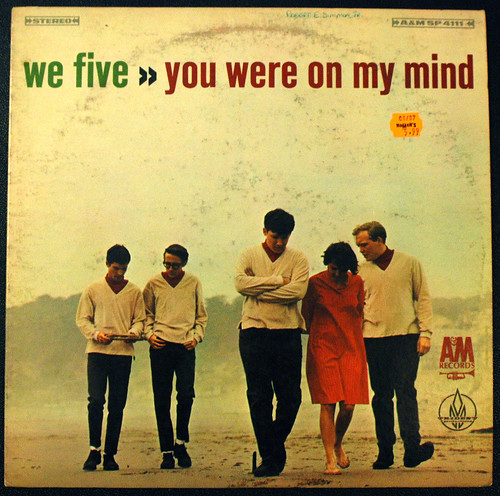
Beverly Bivens, the lead singer for the otherwise male We Five, had an ethereal quality to her voice that was just this side of radiant. “You Were on my Mind,” a song about a lonesome junkie who eases the pain of isolation by shooting up, actually came close to being a Top Ten hit back in 1965, mostly because its message was coded and because Bivens’ mournful voice was the perfect unifying device for the jangling, Byrds-style folk guitar accompaniment. Overall, the effect was pleasant, distracting and not at all inconsequential.
The Byrds. Mr. Tambourine Man. Columbia. 1965.

It’s a shame that the Byrds are so often associated with interpreting the songs of Bob Dylan. It would be better to identify them as guys who could recognize great material. The three Dylan tunes here show that fact, as does ending the LP with the closing theme from Dr. Strangelove ("We'll Meet Again"), right where the planet is explosively depopulated. Still, even that takes away from the excellent guitar sound of both Jim McGuinn and Gene Clark, both of whom wrote or co-wrote some of the album’s better songs. If historians can forget tags such as “folk-rock,” they might recognize this as a new sound, one that pretty perfectly replicates the technological and emotional tenor of the times.
The Byrds. Turn! Turn! Turn! Columbia. 1966.
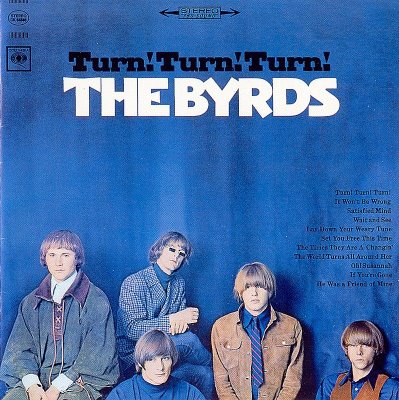
Maybe this album is one of the reasons why the Byrds have been associated as such important interpreters of Bob Dylan songs. "Lay Down Your Weary Tune" and "The Times They are a-Changin'," were not much in the throat of the old bleating calf, but here they become quite musical. Elsewhere, the title track suffers from being one of those ideas that relies on its exact second in history for its effectiveness. Not so with the album’s other two gems, "He was a Friend of Mine," a bit of a tribute to John Kennedy, and the inexplicably hilarious "Oh! Susanna." Meanwhile, we see the band members beginning to learn how to play their instruments and find that the presence of so many guitars isn’t all that distracting. I have never been clear on what David Crosby’s contribution was or, for that matter, what producer Terry Melcher produced. Clearly Chris Hillman’s playing was coming along well, Gene Clark was developing a healthy bitter edge, and McGuinn had by this point become better at the 12-string Rickenbacker than any other recording artist of the time.
The Byrds. Younger Than Yesterday. Columbia. 1967.

With the departure of Gene Clark, a young guitar player named Clarence White came on board. White may have compensated for Clark’s playing, but the absence was not filled when it came to songwriting. In many ways, this was a good thing. Roger (nee Jim) McGuinn had always been clear about the direction he intended the band to take and without Clark’s equally determined ideas, he was free to do what he wanted. What he wanted was for The Byrds to make great music, so David Crosby had to do some songwriting of his own. His "Everybody's Been Burned" is one of the two best things on the album, the other being the Opener, "So You Want to be a Rock 'n' Roll Star," a song full of wisdom and bile, but also tinged with some accidental irony since the Byrds were no more stars than was Barry McGuire.
The Doors. "People are Strange" and "Love Me Two Times." Elektra. 1967.

This remarkably overrated band should have stuck with their singles, where at least some degree of restraint was required. On albums, from whence sprang their fans’ devotions, the group was longwinded, unfocused and largely pointless beyond an eighth grade adherence. And yet the fascination continues. Jim Morrison was mean to women who loved him, was way too skinny (and later too fat) to be sexy and still inspired restless female dreams, intentionally corrupted certain young admirers and had a ridiculously indulgent movie made about him years after he had not only died but had even ceased to have any importance to the world at large. For those searching for irony, these two songs, teetering between haunting and ludicrous, describe Morrison and his cult a little too perfectly.
The Jefferson Airplane. "Somebody to Love." RCA. 1967.

One of two songs Grace Slick brought with her from The Great Society when she replaced Signe Andersen in Jefferson Airplane, “Somebody to Love” remains the best example of the group as a rock outfit rather than as purveyors of pseudo-decadent militant hedonism. Beginning with guitars that jangled like chains falling from angels’ feet, the song lumbered and rolled with a seriousness specific to the Haight district of San Francisco, a seriousness not lightened by the thick ice of Slick’s voice. “When the truth is found to be lies and all the joy within you dies” sounded like anything but flower-power. Anyone planning to share a trip with the group that played this song had better be ready for a rough ride.
Mamas and Papas. "Creeque Alley." Dunhill. 1967.

John Phillips, Michelle Phillips, Mama Cass Elliot and Denny Doherty sang chirpy little tunes that attempted to evoke the sense of California freedom for folks fortunate enough to not need to work. The group’s harmonies and rare sense of humor came together in artistic success only here, with this autobiographical and occasionally hilarious song about the beginnings of their distinctive sound.
Moby Grape. Moby Grape. Columbia. 1967.

The San Francisco Bay area in the second half of the 1960s was home to a hybrid of music that is often referred to as psychedelic, an appellation emerging more from the light shows at many of the music shows than from any specific element of the sound. The roots-oriented if elemental playing of the Grateful Dead was psychedelic, as was the more technically adventurous noodling of Jefferson Airplane. What these bands had in common with the other big name of the period, Quicksilver Messenger Service, were (a) the conscious attempt to force the intake of usually illegal chemicals to shape the form and content of the music, (b) a penchant for long, usually unfocused group jams and solos, and (c) a deliberate pandering to the middle class adulation of consumerism clothed in revolutionary trappings. All that Moby Grape shared with any of this was that their fan-base was in San Francisco and that Skip Spence had once been a member of the Airplane. That very limited connection works to the advantage of Moby Grape. While a few of this album’s tunes suggest that the band was not necessarily opposed to the more idyllic aspects of drug usage, the virtuosity of the playing and the brevity of the songs belied any serious worship of pharmaceuticals. The music ranged from rock to jazz and even to country with sufficient lack of pretension to last for decades. The album jacket even sparked a minor controversy, showing as it did the drummer with his middle finger singularly extended across a washboard. Columbia reissued the LP with the musician’s digit hacked off.
Creedence Clearwater Revival. Creedence Clearwater Revival. Fantasy. 1968.

The four members of CCR entered the pop consciousness sounding as if they had burbled up from the imaginary swamps of San Francisco. Indeed the expectations at the time were that another blues-oriented version of head music might be in the works, perhaps more musically accomplished than Jefferson Airplane, though not necessarily better. Of course, Paul Kantner and Marty Balin didn’t write songs about real people, as John Fogerty did in "the Working Man" and "Porterville," and nobody in Quicksilver would have been able to churn out convincing covers of songs by either Dale or Screamin’ Jay, much less Wilson Pickett. This would not be their best album, but it nevertheless has an ambition that bespeaks where they would soon travel.
Creedence Clearwater Revival. Bayou Country. Fantasy. 1969.
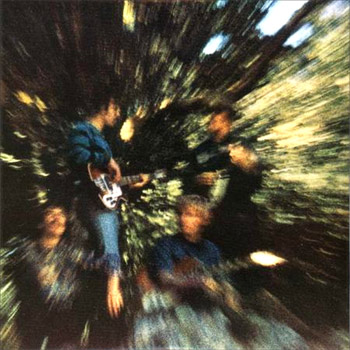
There are two good things about this album: First, "Proud Mary" is one of the group’s best songs because not only does it show John Fogerty’s brilliant imagination and way with a New Orleans patois, but he came up with a rhythmic progression and tune that was so strong that everyone from Sonny Charles to Ike and Tina covered the song; and second, the album cover is a perfect visual description of what the sound within should sound like. The image is evocative rather than explicit, and what it has always made me think of is brash guitar sounds coming from the core of a unified set of four spirits.
Jefferson Airplane. Volunteers. RCA. 1969.
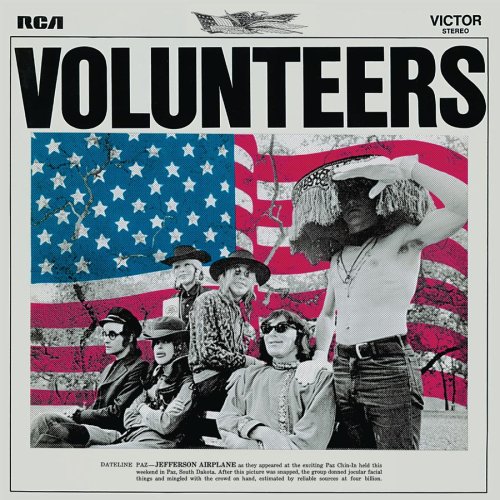
Question for the twenty-first century: Do you want to be the personification of something else or to be an artist?
While there is no denying the intensity of Jefferson Airplane’s only two Top Forty hits, “White Rabbit” and “Somebody to Love,” the fact remains that these folks have to stand next to the Doors as the most overrated group of the 1960s. That fact does not diminish the notion that the Airplane was a fascinating cooperative. After original token female Signe Andersen left to give birth, Marty Balin and Paul Kantner brought in ex-Great Society misogynist Grace Slick to be the token mama. She had a voice that still rings true and was clearly the most talented of the group’s three singers. And yet it was guitarist Jorma Kaukonen, bassist Jack Casady, and drummer Spencer Dryden who were the true axis of the band. The group’s best album, Volunteers, is unimaginable without them, as is any semblance of rock ‘n’ roll credibility. The themes were simple. Take pills, expand your mind, live together, and love the Jefferson Airplane. Depending on your priorities, this might seem attractive, at least until you become conscious of the fact that this stream of consumerism was frequently as unctuous as Grand Funk Railroad and not necessarily smarter. When Grace and Paul sang “Everything they say we are—we are,” they weren’t kidding. They were pandering, however. And that is why a song as inherently stupid as Free’s “All Right Now” is infinitely more revolutionary than anything the Airplane ever imagined. In fact, Dryden is the only real radical here. His "A Song for all Seasons" is one of the few humorous songs the band ever made and certainly the only one to poke at its pretensions.
Creedence Clearwater Revival. Pendulum. Fantasy. 1970.

The 45 rpm taken from this album was one of those famous two-sided hits. This one featured "Have You ever Seen the Rain" as the A-side and “Hey Tonight” as the B. That still seems the right choice, lo these many years. Heaven knows there was nothing else on this disc that could have charted, except as an extension of the value of the band’s reputation. But to be fair, the other eight songs are okay, excellent even, when compared to most of the other stuff around at the times. But when compared to the body of work that CCR had already amassed, this album just seems like the pendulum may have been swinging in the wrong direction.
Little Feat. Sailin’ Shoes. Warner Bros. 1972.

This is Little Feat’s best album by such a wide margin that the others sound as if they were recorded by a different group—almost. Bill Payne, who played keyboards and sang a few leads and wrote a few songs, is typically given top billing. That’s a charitable move. Lowell George was a better songwriter and singer and he played guitar better than Payne played piano. Sailin’ begins with "Easy to Slip," one of George’s greatest songs. All about love gone bad, the melody is simple blues and the words hardly exist, yet they are tremendous. With Roy Howard slapping his bass and Richard Hayward shuffling his drums, there is a definite childlike feeling to the affair, even on songs such as "Willin'," all about a guy who drives a truck while keeping it up for Dallas Alice. In terms of capturing a feeling produced by forces nearly impossible to describe, Sailin’ Shoes is one of the best. It runs on sheer instinct.
Creedence Clearwater Revival. Mardi Gras. Fantasy. 1972.

I have a clear memory of the first time I heard what would turn out to be CCR’s final A-side single. I was sitting in the car waiting for my mother to come back from her grocery shopping. It was early afternoon and I was doing what I always did when Mom went into the grocery. I was listening to WCOL-AM, at that time Columbus, Ohio’s greatest Top Forty Station. And the instant I heard the electric guitar simulating the sound of a car roaring by the open road, I knew the song had to be by Creedence. And once the vocal began, there was absolutely no question. Great as it was, there was something missing. It seemed like only seven-eighths of the band were present, meaning that half a member might not have been plugged in. As it turned out, lead singer, guitarist and chief songwriter John Fogerty had had a falling out with brother Tom and the latter had split. Bassist Stu Cook and drummer Doug Clifford used this opportunity to muscle their way into getting a little spotlight of their own. I for one am glad they did. Good as John’s main sings here are, it is also good to hear Doug take country lead of his two tunes, and while Stu plays bass better than he sings, this was the band’s seventh album, fer cryin’ out loud, and so far the show had been all about John. I doubt any case can be made for this recording’s immortality. And it does seem a bit of a shame for the group to have disbanded with this as their final LP. However, the sound was still identifiable, occasionally lilting, mostly hard-driving and still better than anything else I heard that afternoon on the radio.





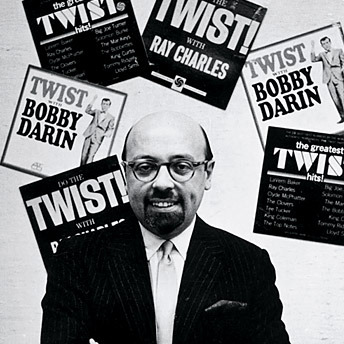
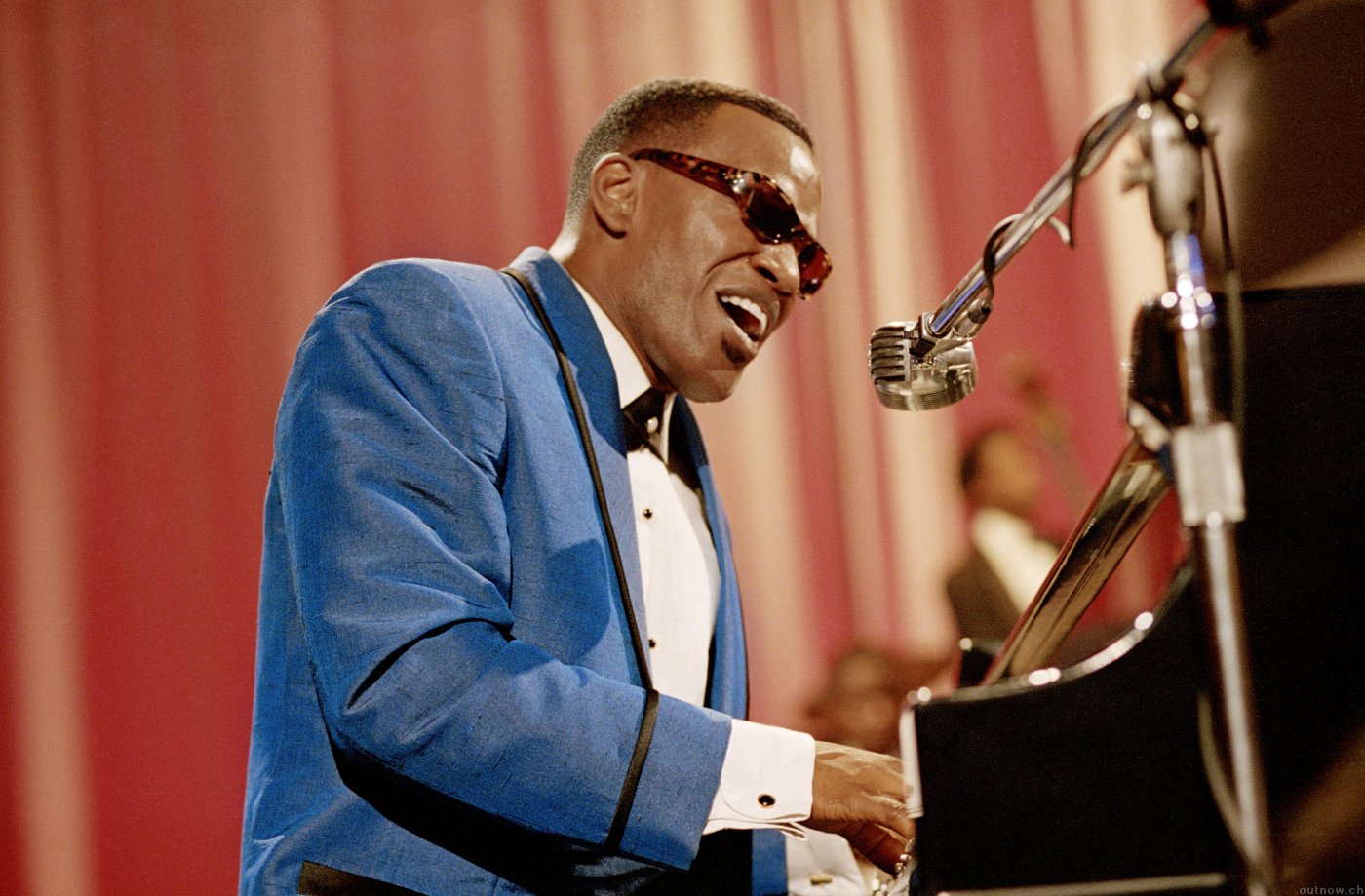
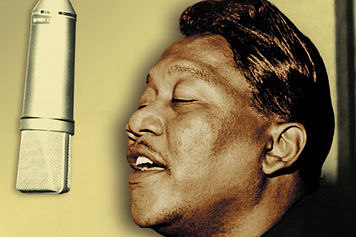



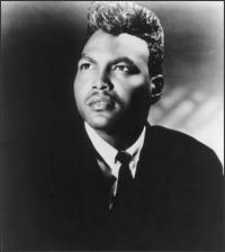










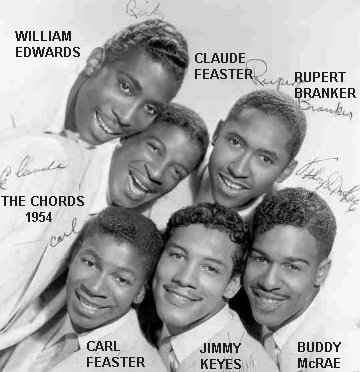


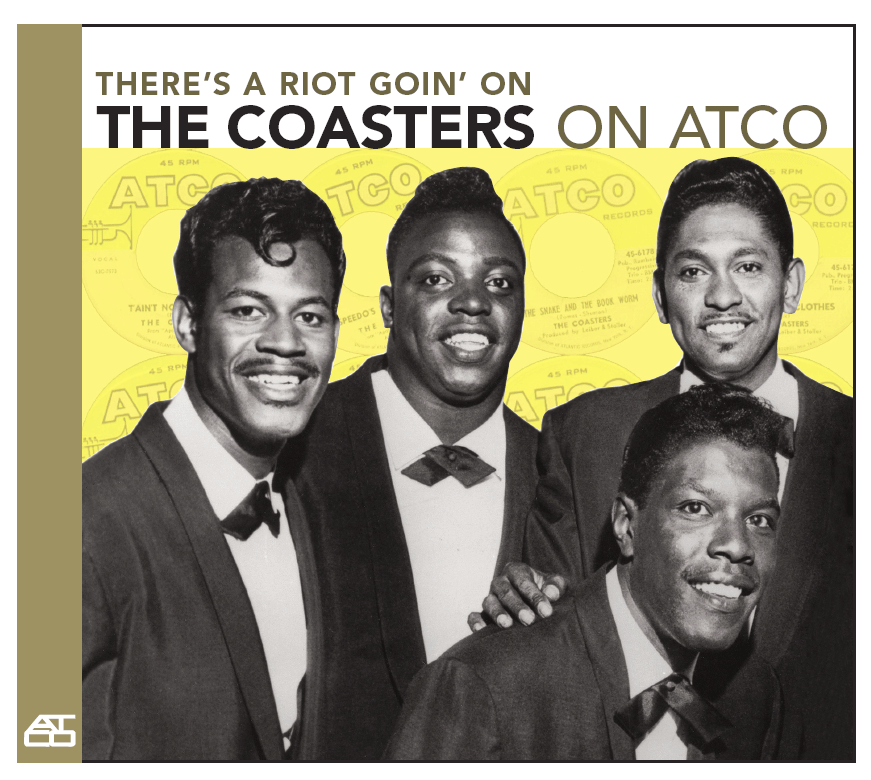
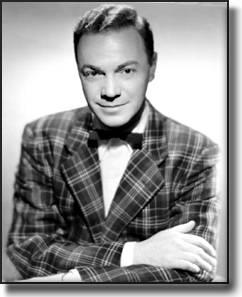

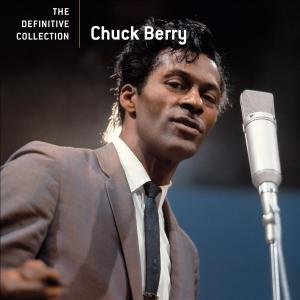
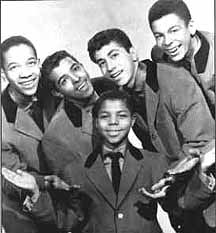
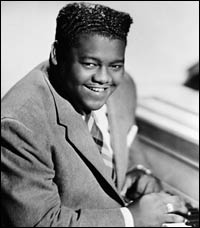

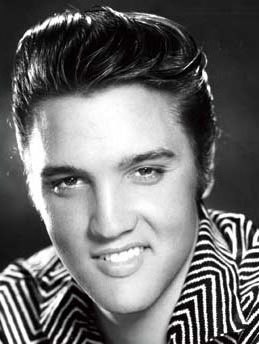



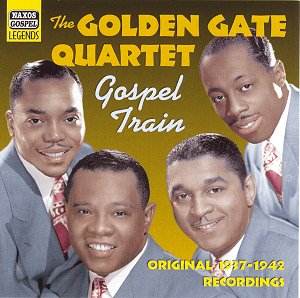


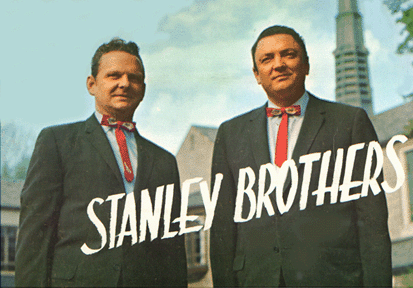





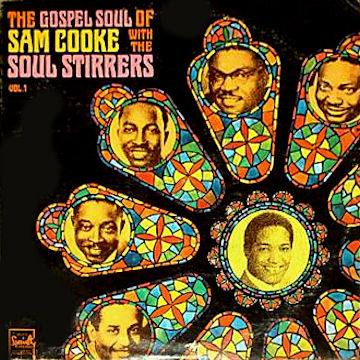


.jpg)
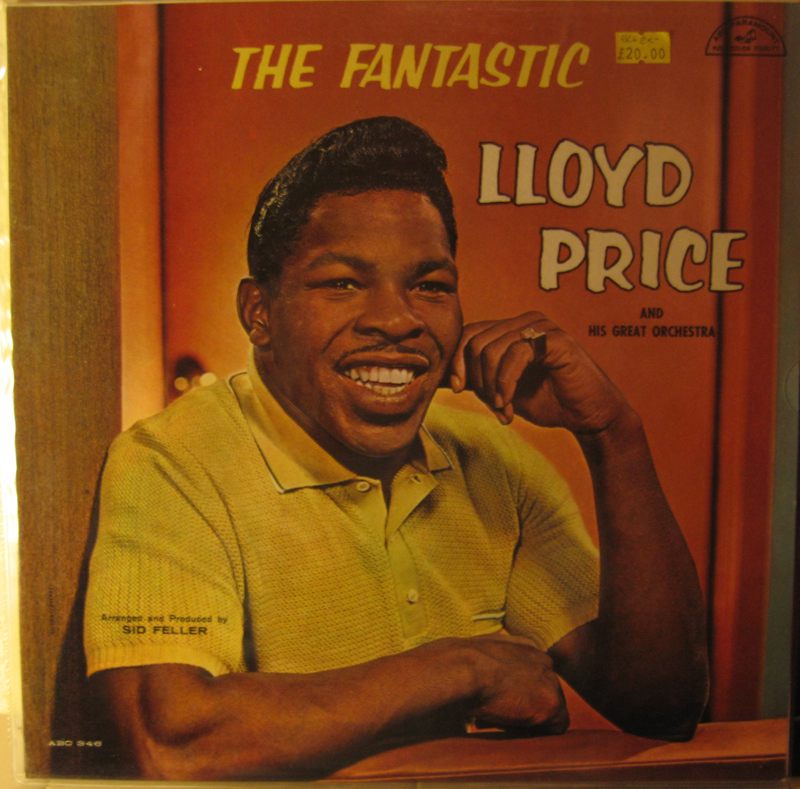
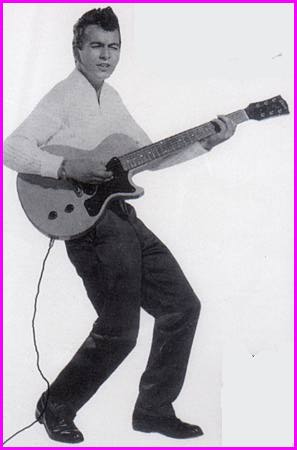














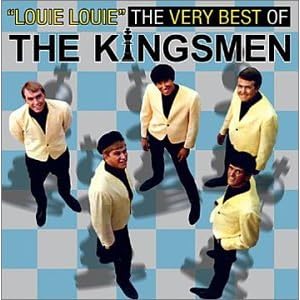



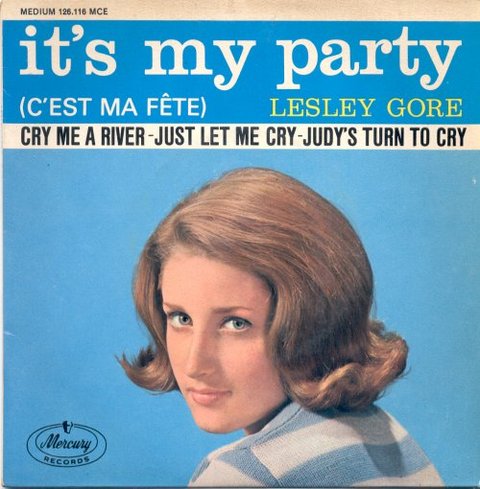








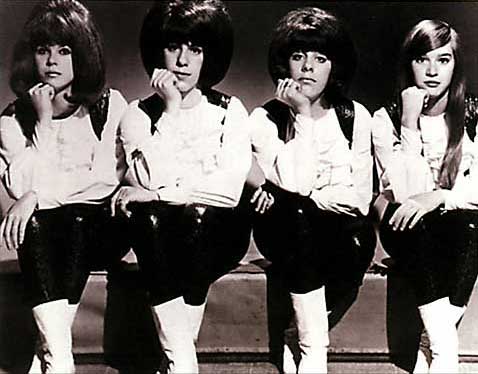
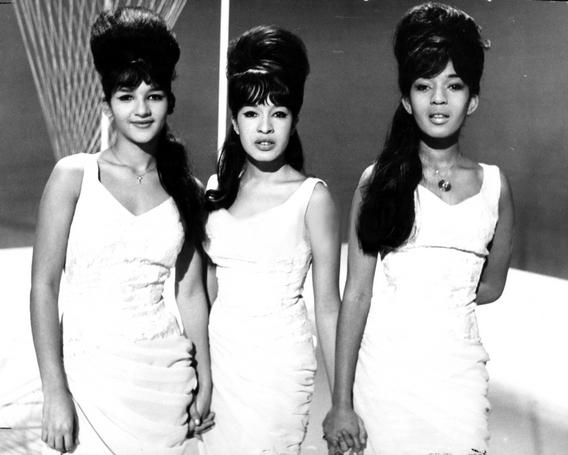










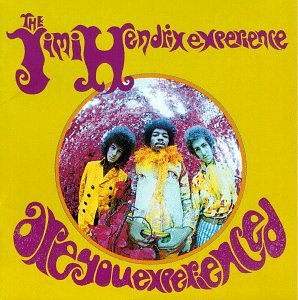
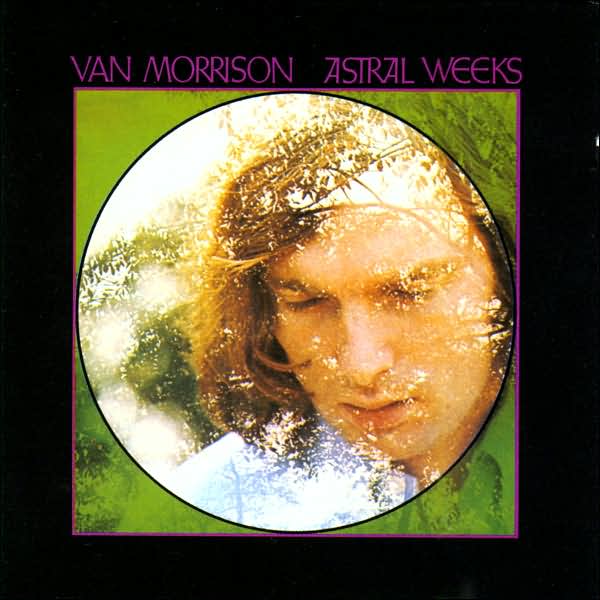




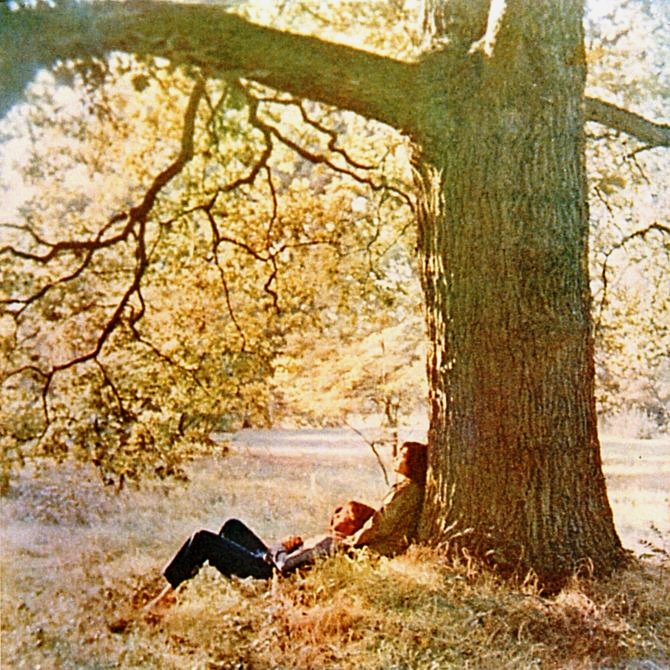
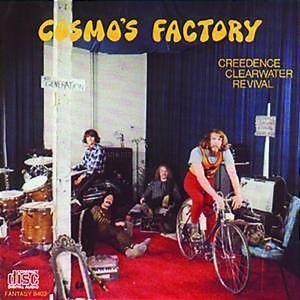

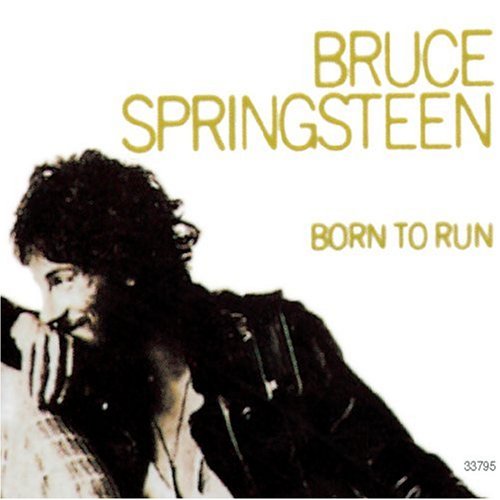
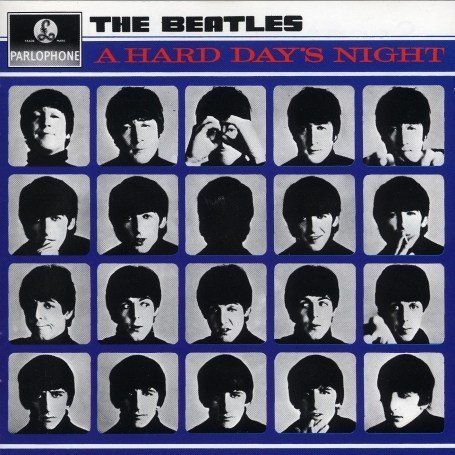





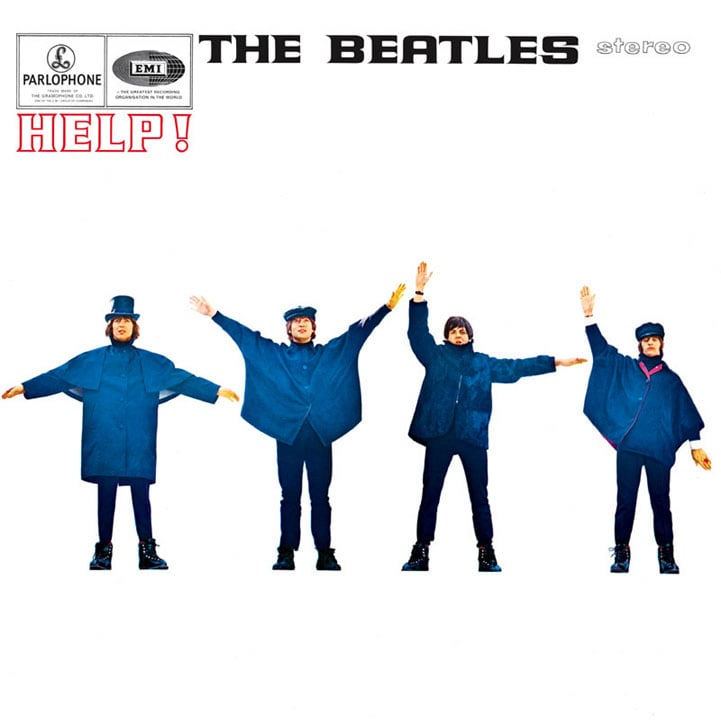
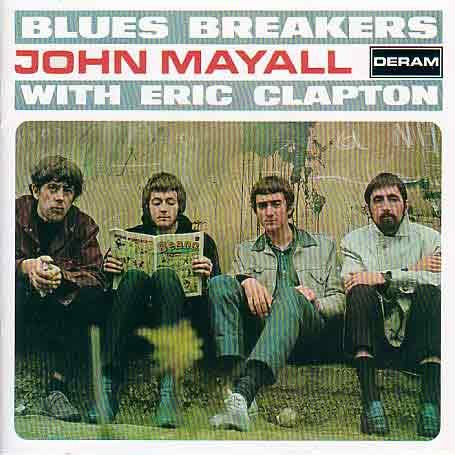

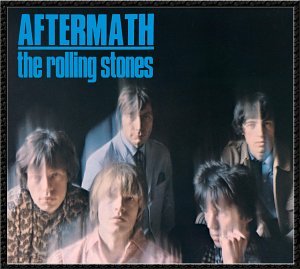
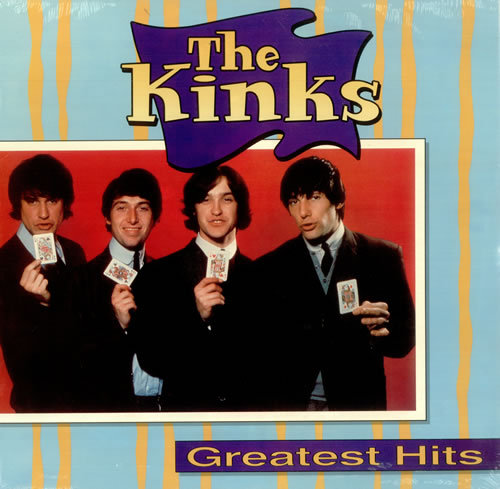







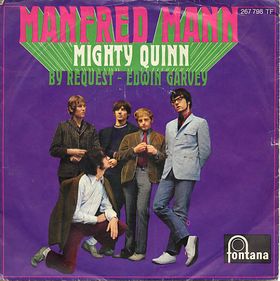
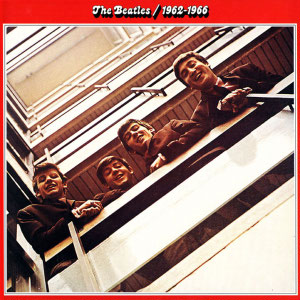
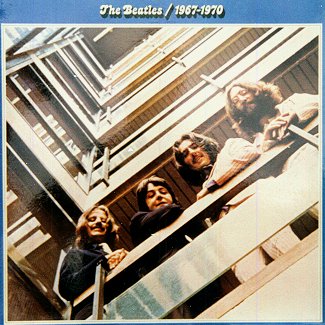




.jpg)




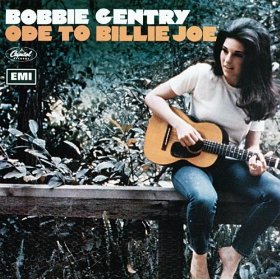
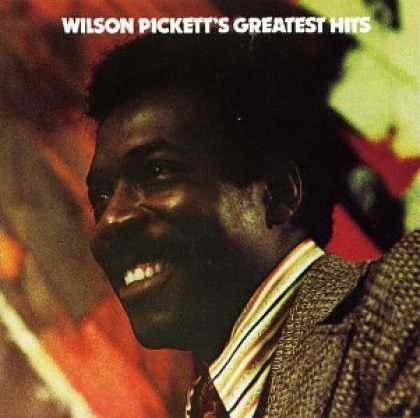











.jpg)


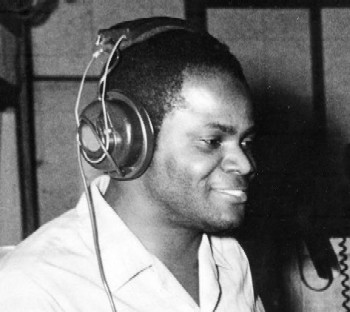




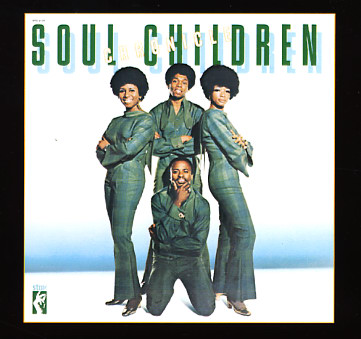


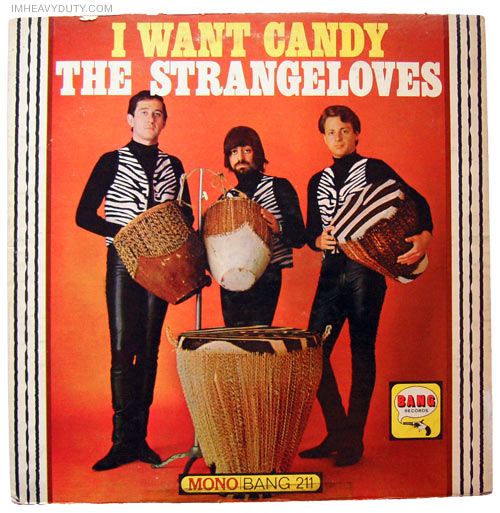









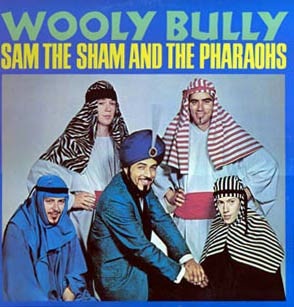











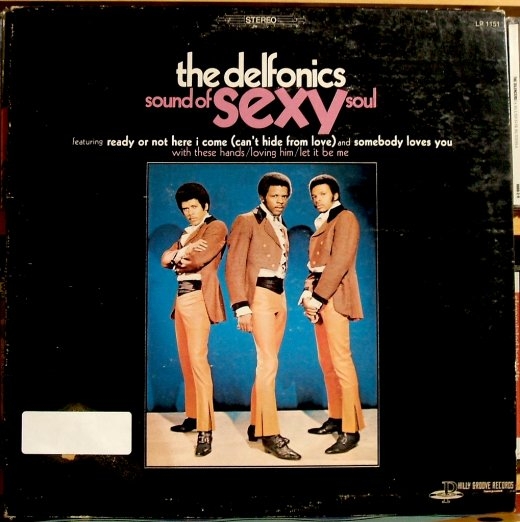





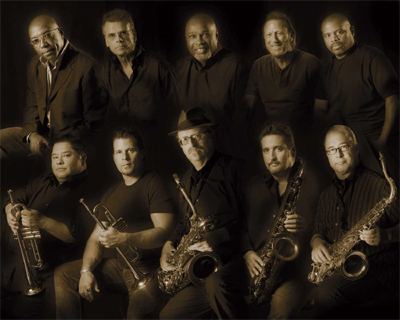




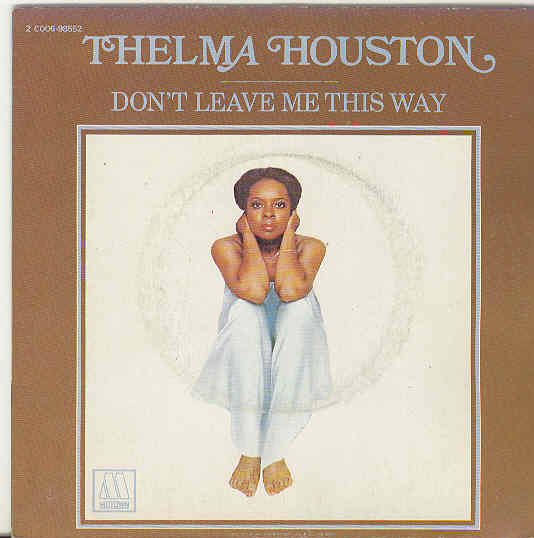

















.jpg)




No comments:
Post a Comment